Table of Content
Mesa Verde National Park | Introduction
Mesa Verde National Park located in southwestern Colorado, USA, this national park is famous for preserving the remains of ancient human habitation. Its name, Mesa Verde, means "Green Highlands," an area that was once the farmland of the Ancient Puebloan people. The park is primarily known for the preservation of ancient settlements built in alcoves in the cliffs between 1100 and 1300 CE. These dwellings are called Cliff Dwellings because they look like people are living in the middle of the cliffs.
Background Knowledge: Ancient Puebloan Culture
Although the cliff dwellings are the main attractions of Mesa Verde National Park, there is more to see. To understand the value of these sites, it is important to understand the history of Ancient Puebloan in this area.
In fact, the Ancient Puebloan did not live in the Cliff Dwellings at the beginning, but resided on the Mesa top, which is the high ground. Around 500 A.D., the people here learned to use dry land farming techniques and gradually transitioning from a nomadic lifestyle to a settled one, thus beginning to establish habitable homesteads on the mesa tops. We can observe the evolving architectural forms of the Ancient Puebloans at Mesa Verde National Park, which began during this period and developed over the course of 600 years.
Around 1100 AD, the Ancient Puebloans gradually abandoned residences on the ground and moved into the alcoves on the cliffs. As for the reasons, there are still many speculations. The most likely is climate change. Eventually, between 1250 and 1280 AD, these residents left Mesa Verde, migrated south, and became the ancestors of the Pueblo, Zuni, and Hopi tribes that are now spread across southern Arizona and New Mexico.
Ancient Puebloan sites are widely distributed. They are a highly interconnected and widespread communities. In the Four Corners region, many remnants of such sites were found. The Four Corners region refers to the junction of Colorado, New Mexico, Arizona, and Utah in the western United States. This area is a significant hub of Ancient Puebloan culture, including Mesa Verde National Park, Hovenweep National Monument, and even Grand Canyon. Mesa Verde National Park preserves the largest number of sites in the best condition, including a large number of Cliff dwellings, which are rarely found elsewhere.
If you visited Mesa Verde National Park several years ago, or read information about it on the internet, you may have heard and read a completely different story. In the past, archaeologists suggested that the inhabitants of Cliff dwelling suddenly disappeared and called these people Anasazi, but this has now been disproved by new evidence.
Mesa Verde National Park | Itinerary
Mesa Verde National Park is a place worth spending three days exploring. Looking at the NPS MapMesa Verde National Park has only one northeastern entrance, so the driving route is very simple, and it is best to stay at the Far View Lodge in the center of the park. from the entrance, drive along the North Rim to the Far View Lodge, and then simply drive to the south or southwest of where you want to go, depending on the two- or three-day itinerary you have planned. For off-park accommodations, we recommend staying in the nearby town of Cortez.
Find a stay in Cortez?
You can reach the Far View Lodge by following the North Rim road from the entrance. Heading south from the Far View Lodge, you can explore the Far View Areas, Spruce Tree House, Cliff Palace Loop, and Mesa Top Loop. Going westward to the Wetherill Mesa area, you'll find significant attractions like Long House and Step House. Visitors can plan their itineraries based on their preferences and the open attractions. Here is my recommended three-day itinerary:
- Day 1: Cliff Palace Loop, Cliff Palace and Balcony House.
- Day 2: Spruce Tree Terrace and Mesa Top Loop
- Day 3: Wetherill Mesa area, Long House and Step House
It's essential to note that access to Cliff Palace, Balcony House, and Long House requires participating in guided tours. These tours have limited spots, you can reserve online to secure your spot. Planning ahead and booking in advance will help you make the most of your visit to Mesa Verde National Park. (Link to tour booking). The opening hours for different areas can vary seasonally, please plan your arrangements based on your visit date. For instance, during our first visit, the Mesa Top Loop was closed due to maintenance work, so we ended up planning a two-day itinerary.
Mesa Verde National Park | Attractions
North Rim
The road leading from the entrance to the Far View area is known as the North Rim Road, and it's the pathway one must traverse upon both entering and exiting Mesa Verde National Park. While you may find yourself driving this route twice, rest assured that it's anything but dull.. Mesa Verde National Park not only preserves precious archaeological sites but also unveils breathtaking natural vistas. Along the North Rim, you'll encounter several scenic viewpoints where you can pause and soak in the stunning landscapes.

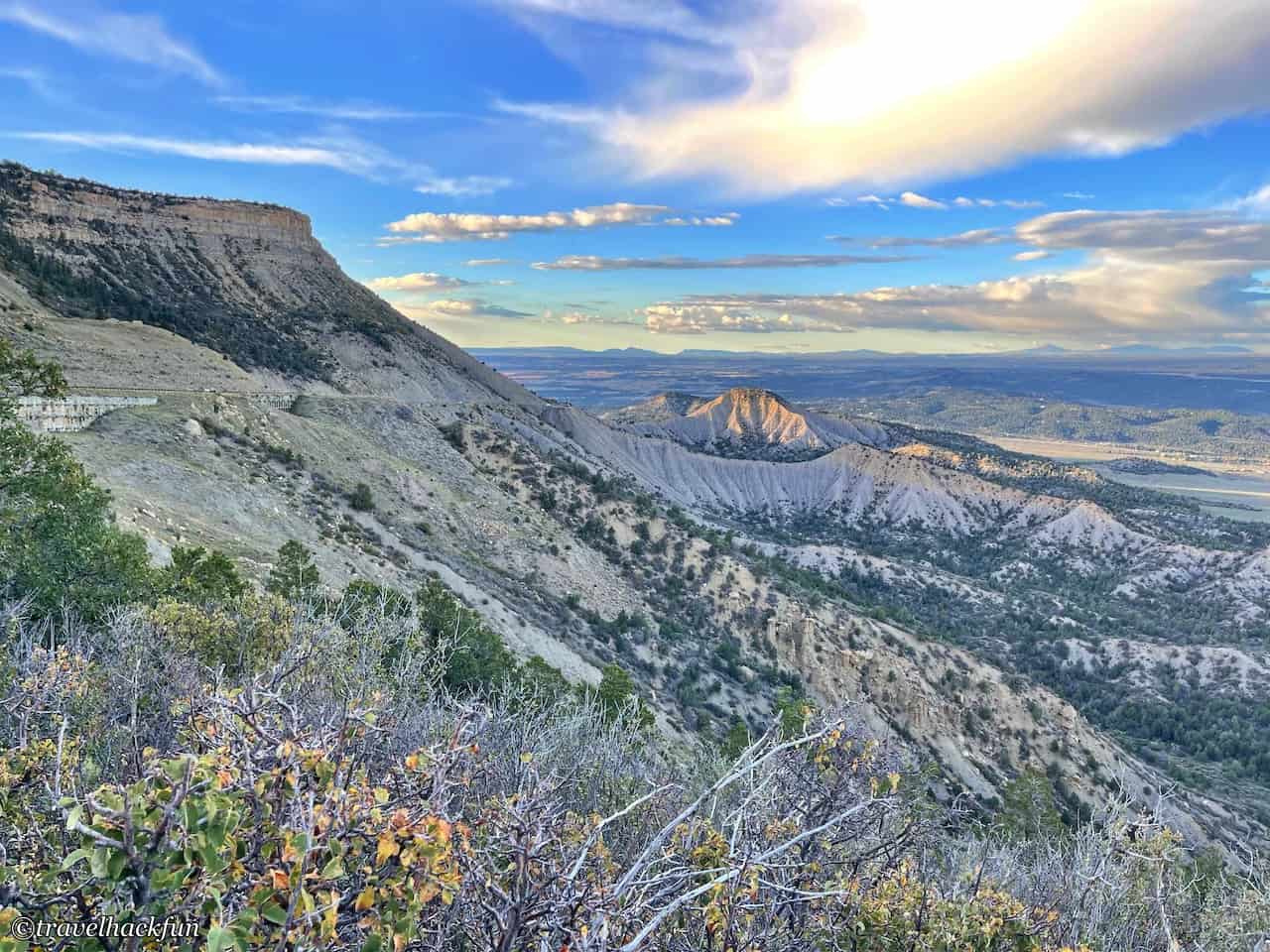
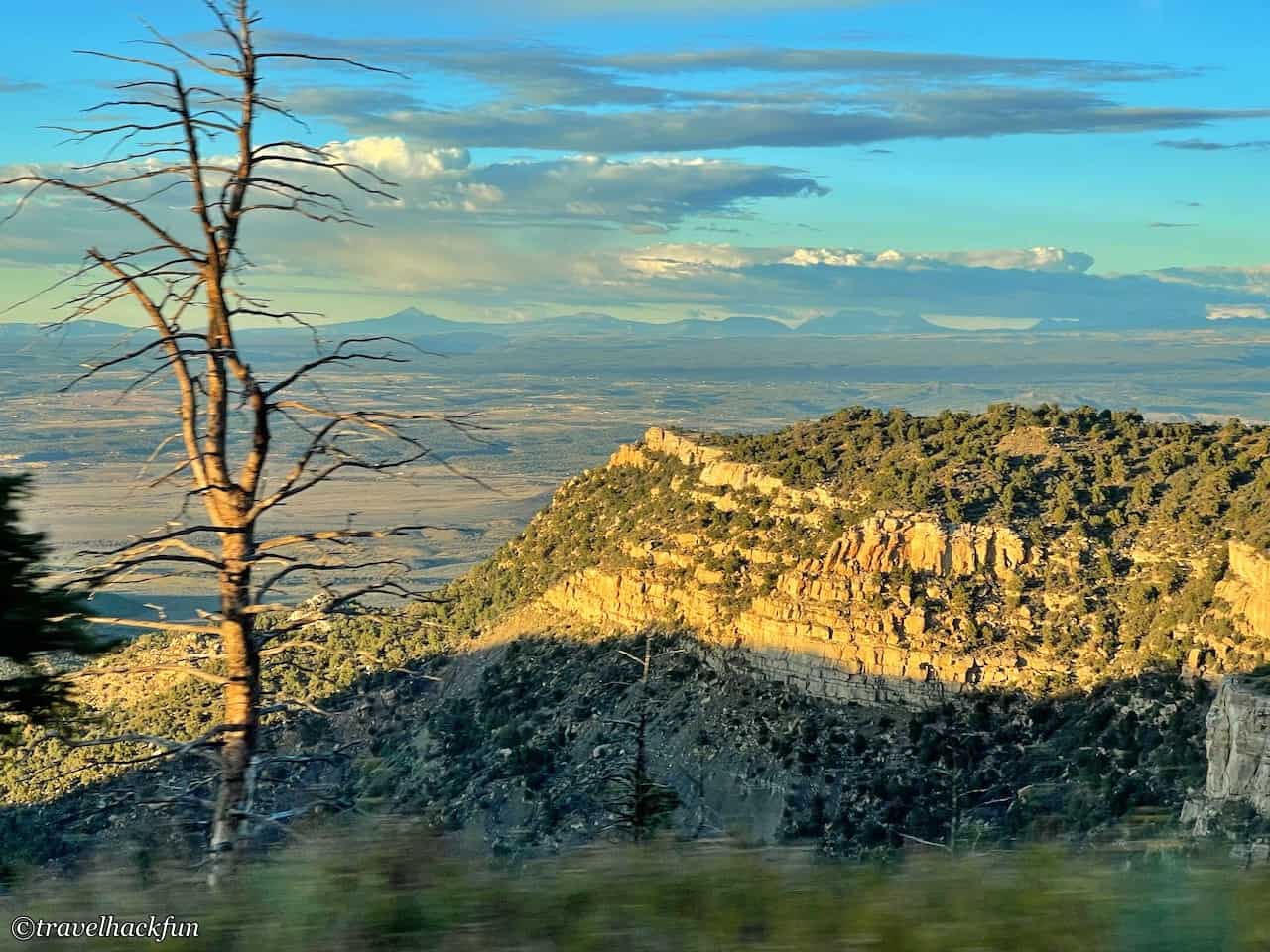
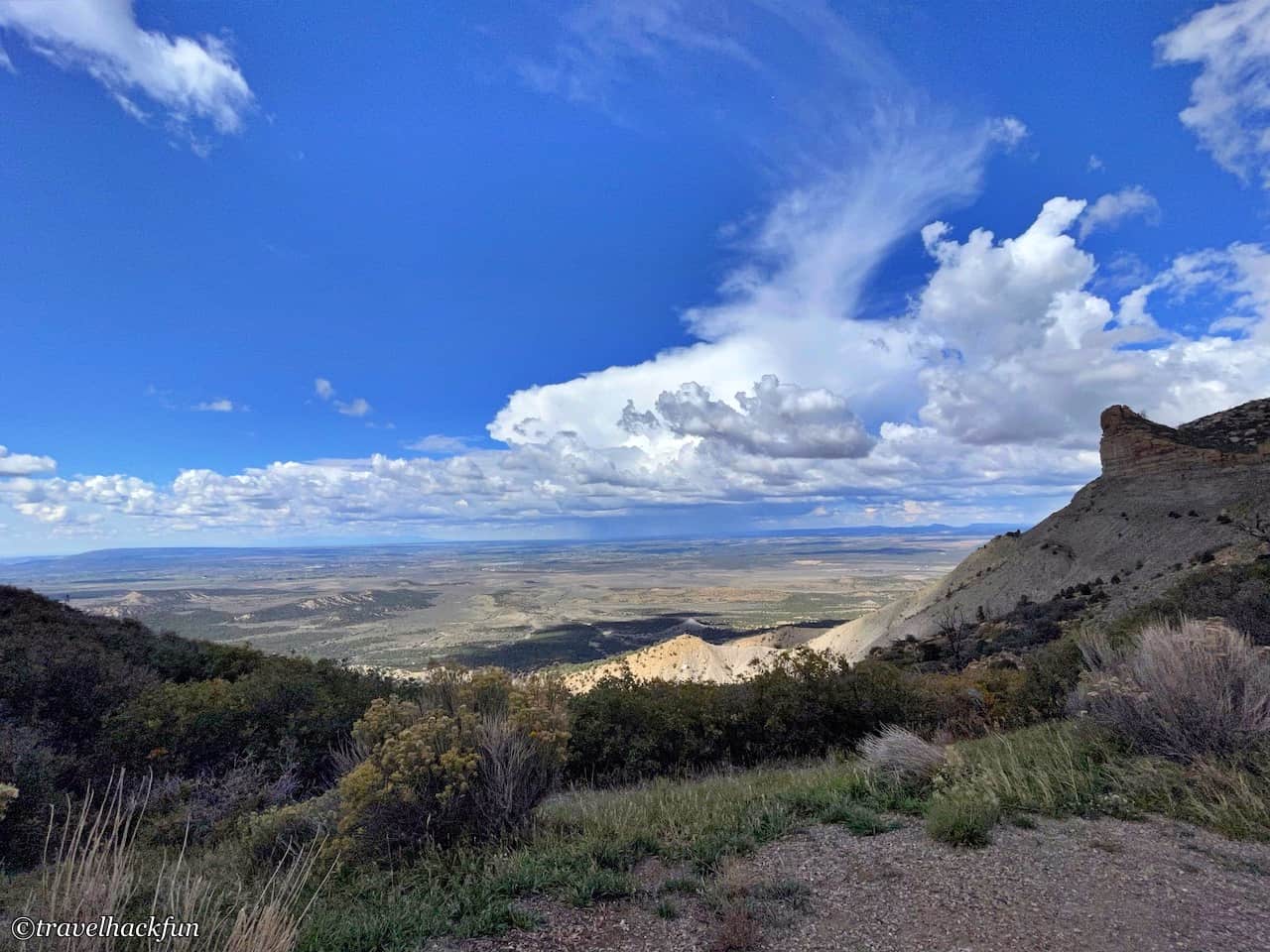

The Visitor Center is located near the entrance and displays some static Ancient Puebloan artifacts. It's worthwhile to take a moment to explore before joining a guided tour. This allows you to gain some background knowledge about the history before embarking on your guided tour.
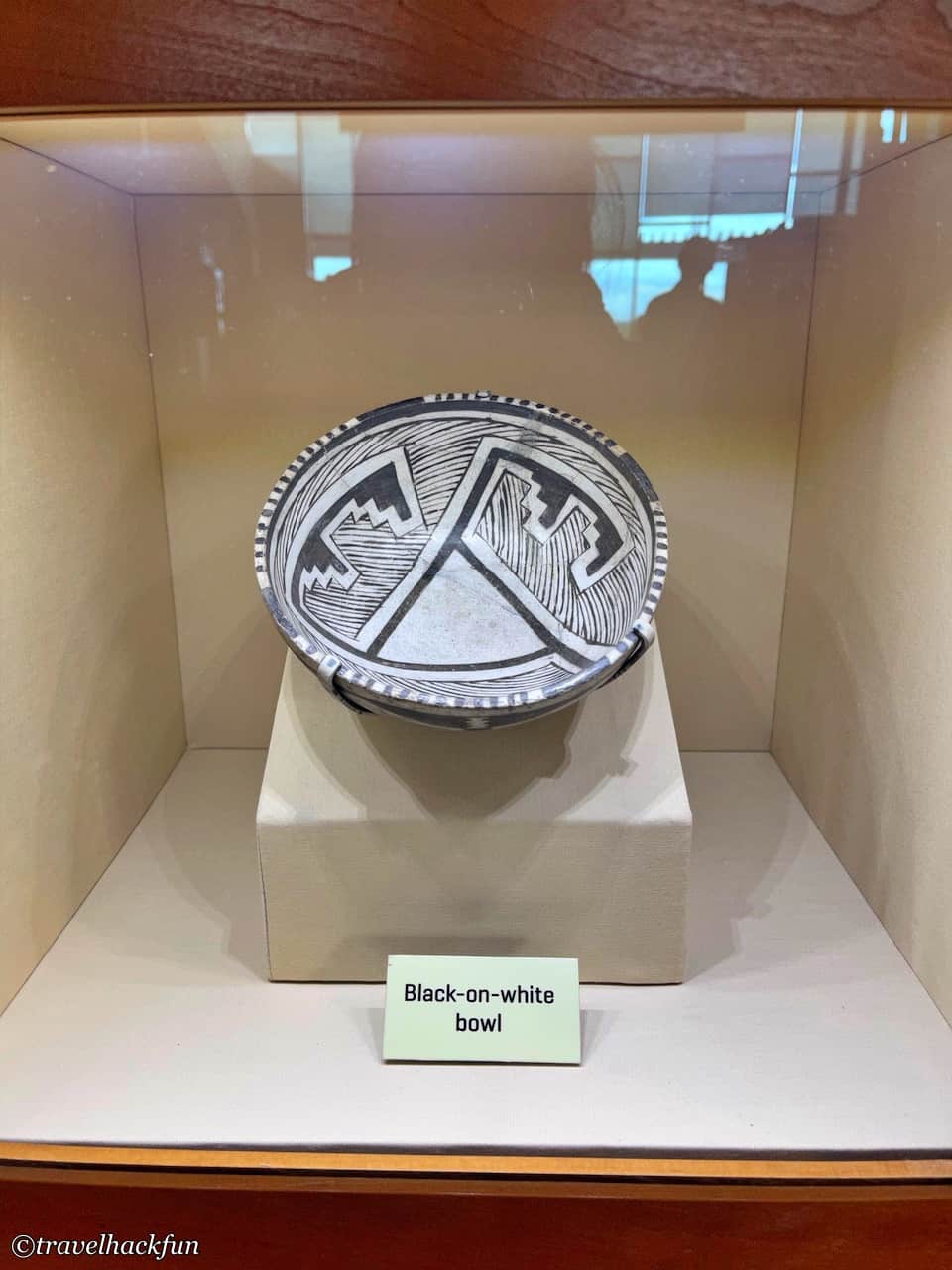
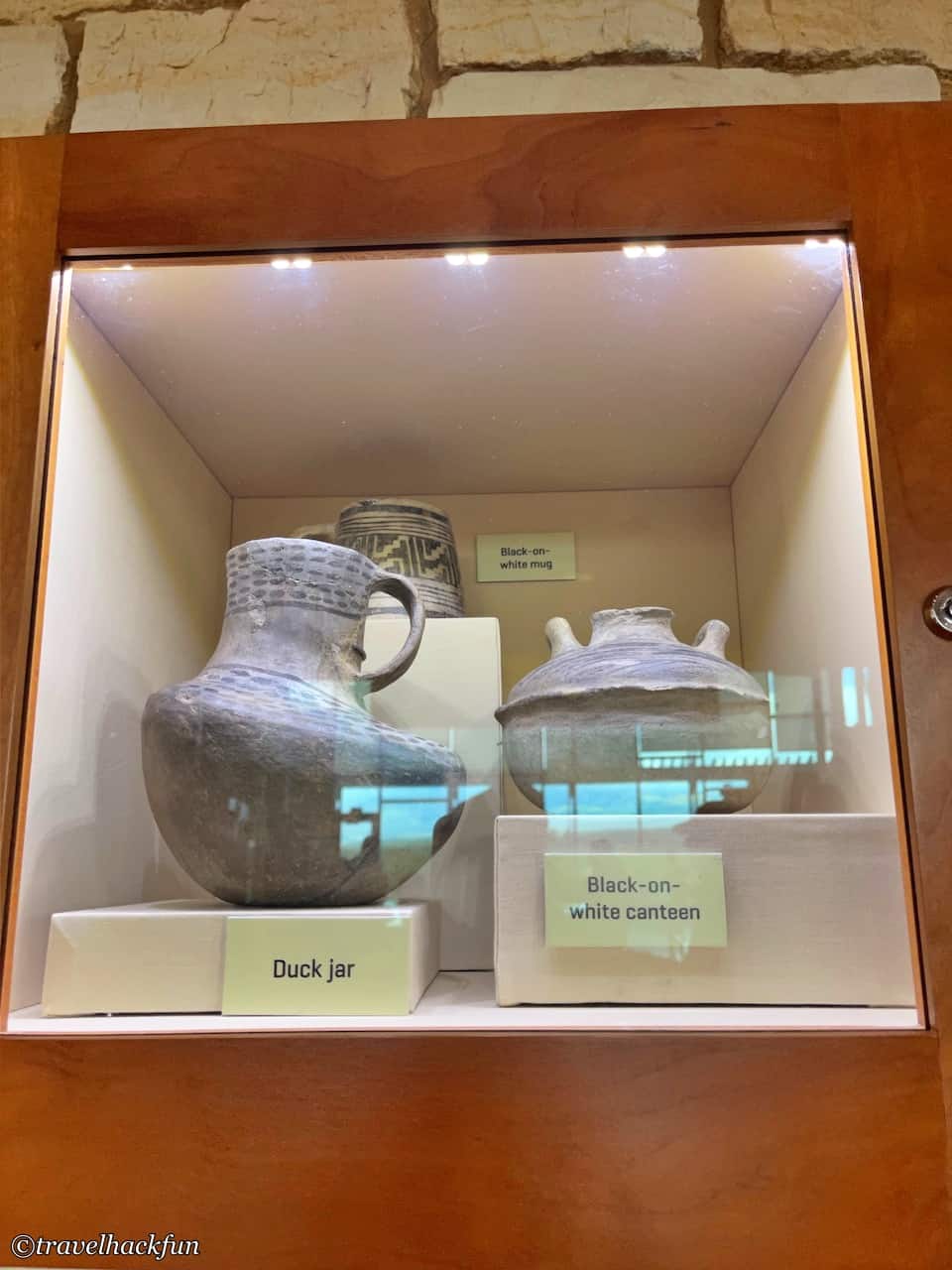



Park Point
Park Point is a must-visit spot along the North Rim. The short trail from the parking lot leads to the highest point in the park. At Park Point, there are two viewing platforms on either side, offering panoramic vistas of the Four Corners region. On a clear day, you can simultaneously see the states of Colorado, New Mexico, Arizona, and Utah. The scenery is breathtaking, and the round-trip trail is only approximately 0.2 miles.

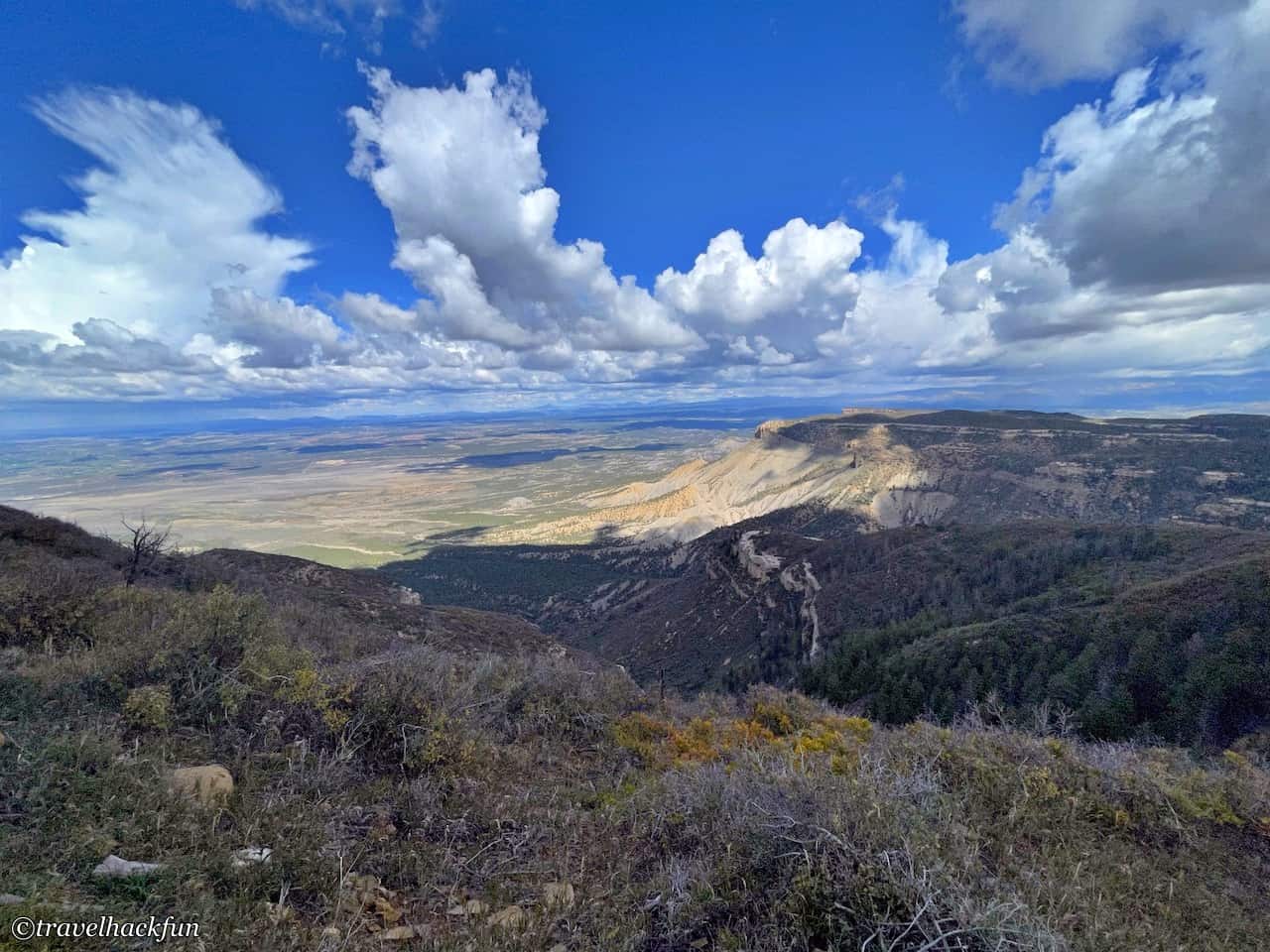
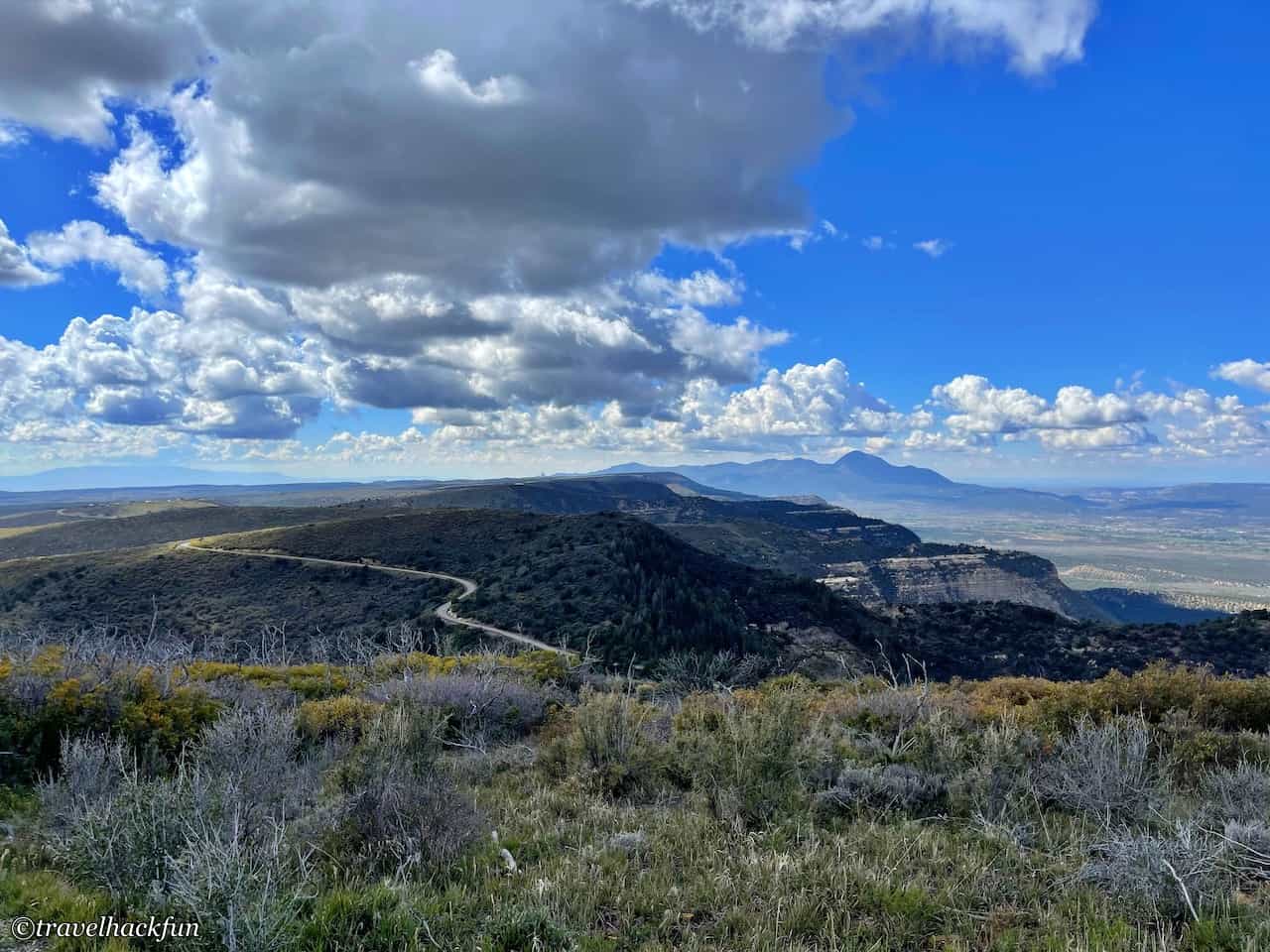
Far View Area
Far view sites
The Far View Sites are situated not far from the Far View Lodge. They are archaeological remnants located on the Mesa Top. As early as around 1100 AD, the local inhabitants resided on the high mesa tops before moving into the cliff dwellings. Here, you can witness the appearance of a large village from a millennium ago.
The Far View Sites consist of six distinct structures interconnected by a circular trail. Starting from the entrance, you will pass by Far View House, Pipe Shrine House, Coyote Village, Far View Reservoir, Megalithic House, and Far View Tower. Archaeologists estimate that the earliest occupation of this area was around 800-900 AD, and it was continuously inhabited for at least 350 years or more. Hence, this period likely represents the final phase of Ancient Puebloan occupation on the Mesa Top before transitioning to the cliff dwellings.Upon entering the Far View Sites, both the Far View House and Pipe Shrine House appear as if they were significant neighborhoods with numerous rooms. They were likely constructed around 1000 AD. While erosion has taken its toll over the years and left behind incomplete walls, these buildings were obviously originally multi-story structures. Beneath these walls, older foundations, crossbeams, and pottery were discovered, indicating the presence of various structures at this location spanning several centuries. This area may have once served as an ancient urban center.
Here, you can observe numerous circular structures dug into the ground, known as Kivas. Circular Kivas are quite common in Mesa Verde National Park and are a traditional public facility in Puebloan society, serving as social gathering places and locations for religious activities. Typically, each family would have its own Kiva, while larger structures might feature communal Kivas.
Kivas have a unique design with six stone pillars inside. A thick roof could be placed on top of these pillars, featuring an opening in the center for entry. They were equipped with an ancient yet effective ventilation systems that allows for setting up a warming fire in the middle to maintain a constant temperature.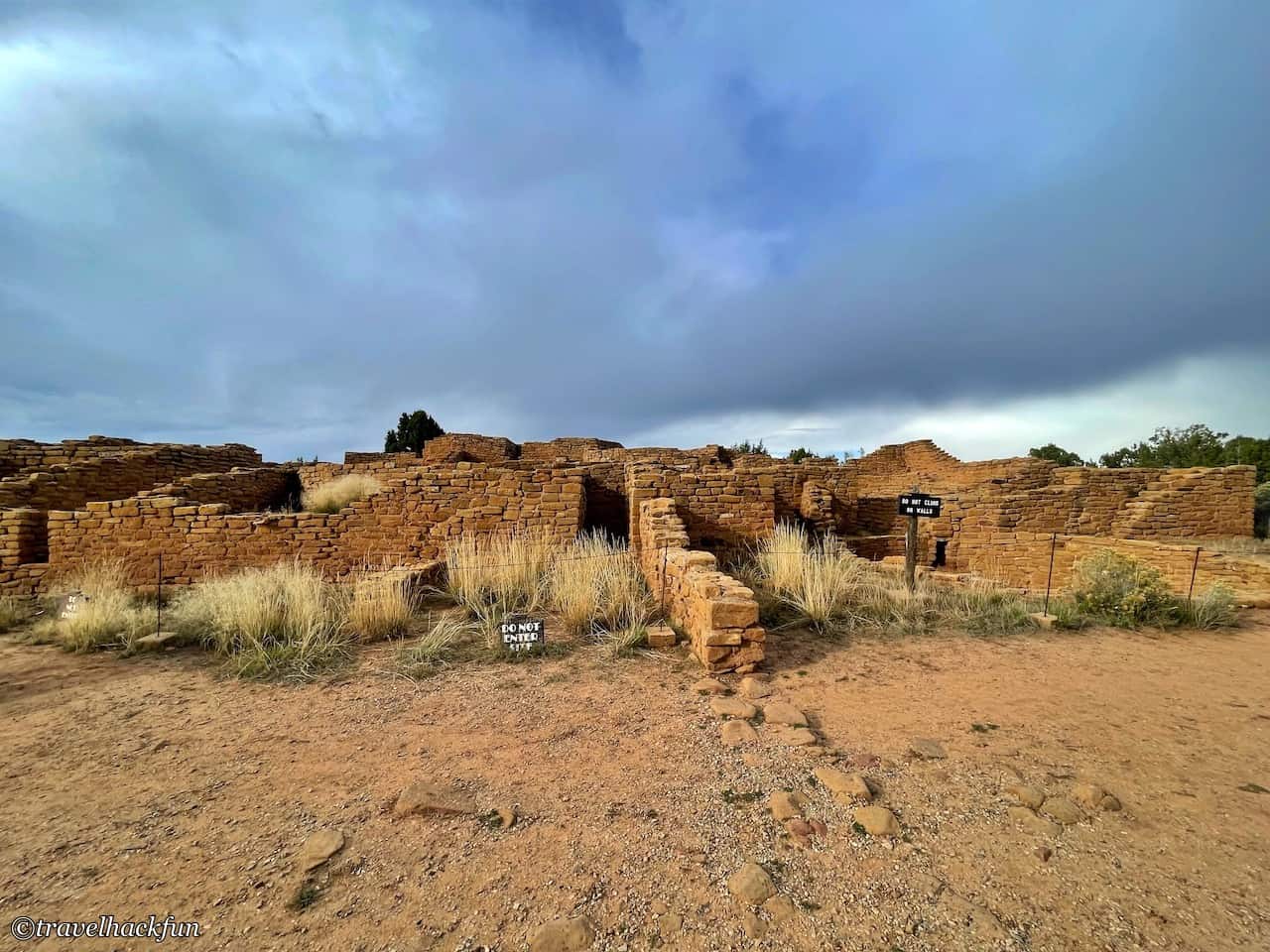
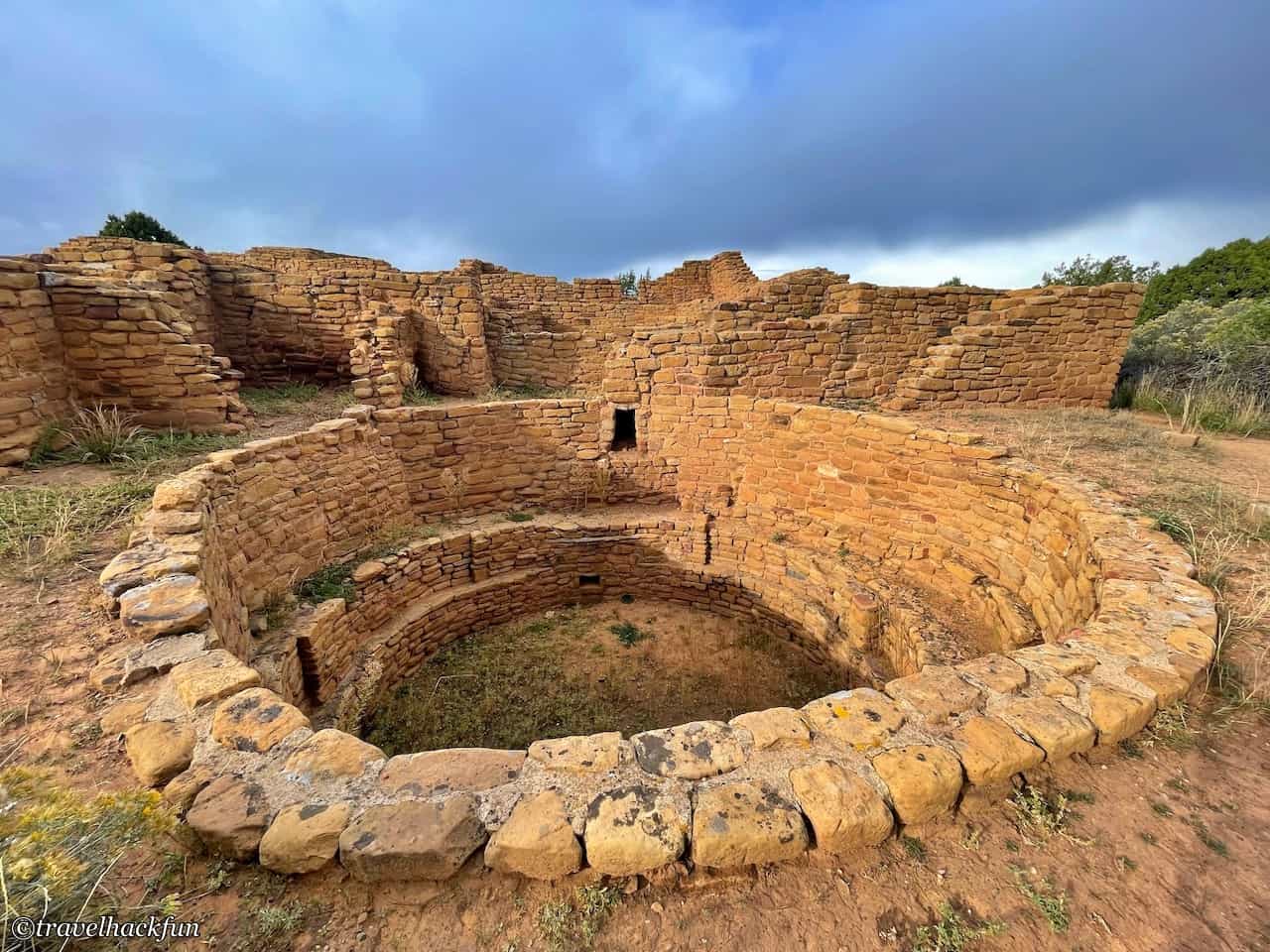
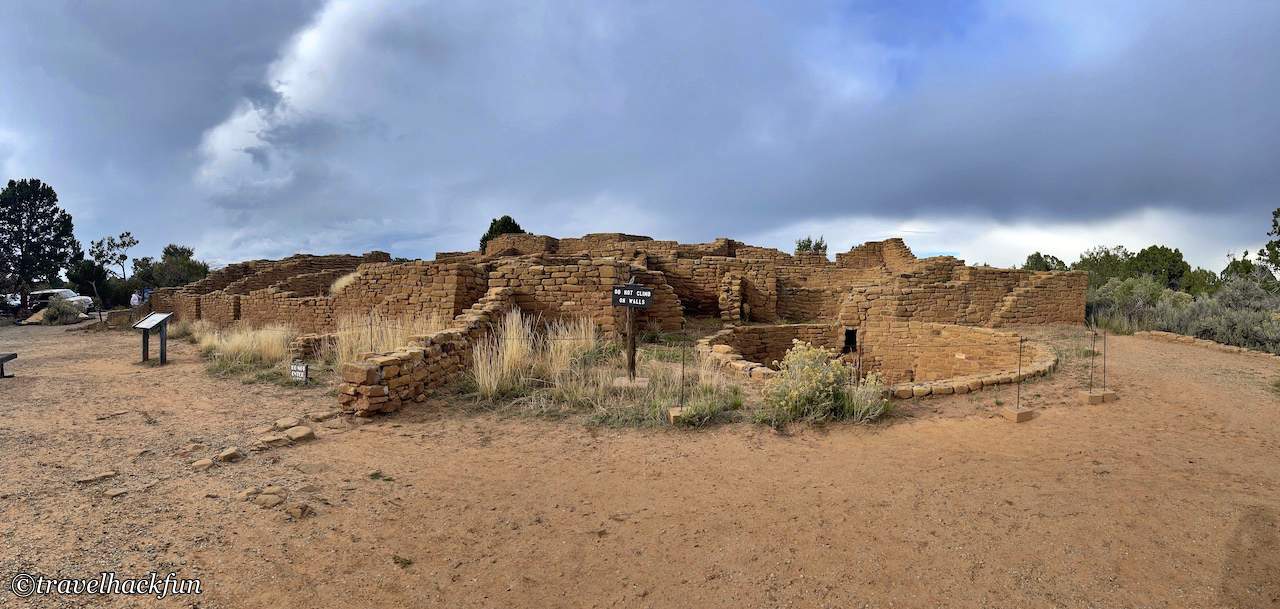
Continuing along the trail, you'll come to Coyote Village. It's a substantial structure with visible rooms and Kivas. Visitors have the opportunity to enter these rooms and get a firsthand feel for what it was like to live in them.
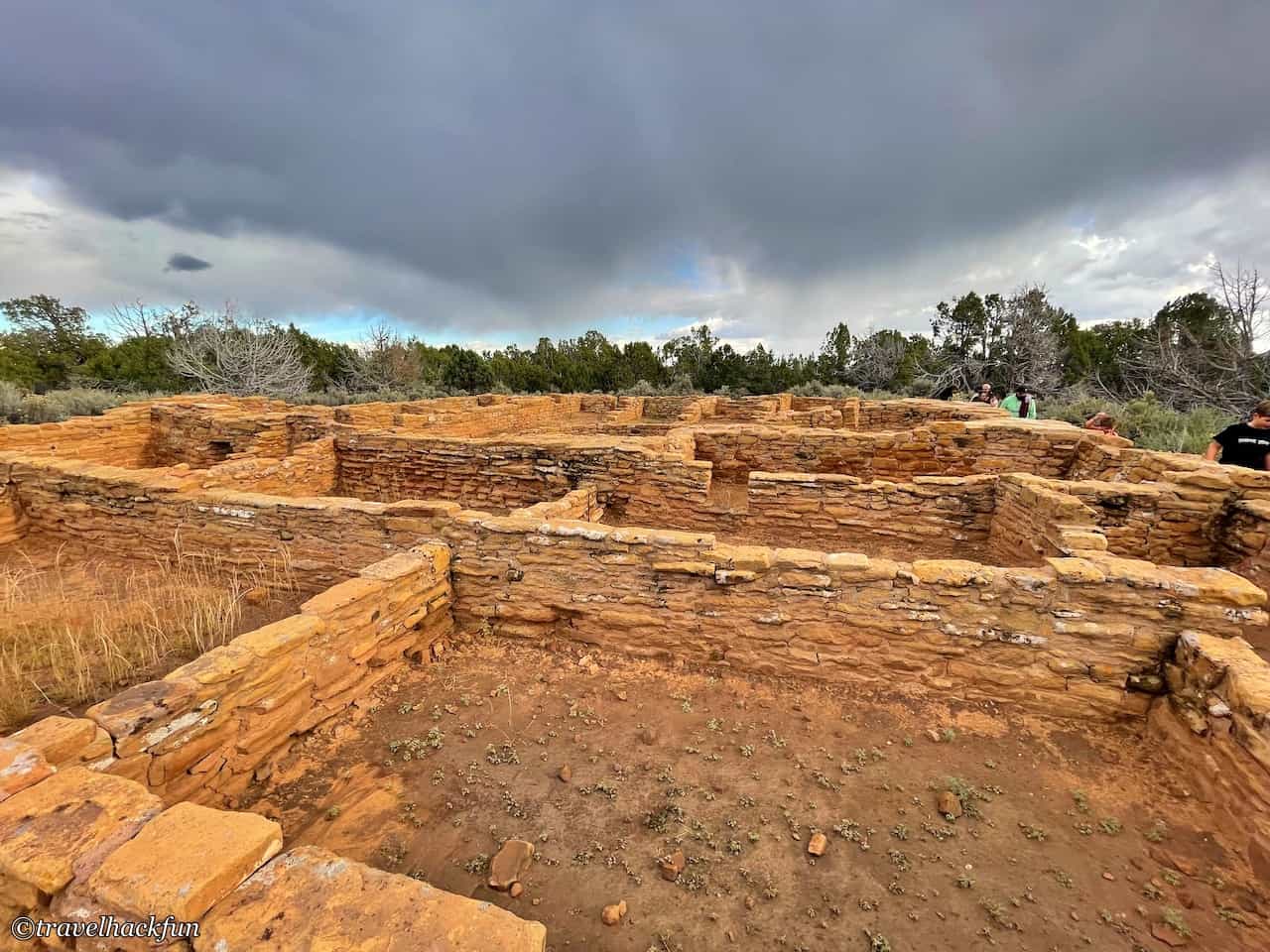
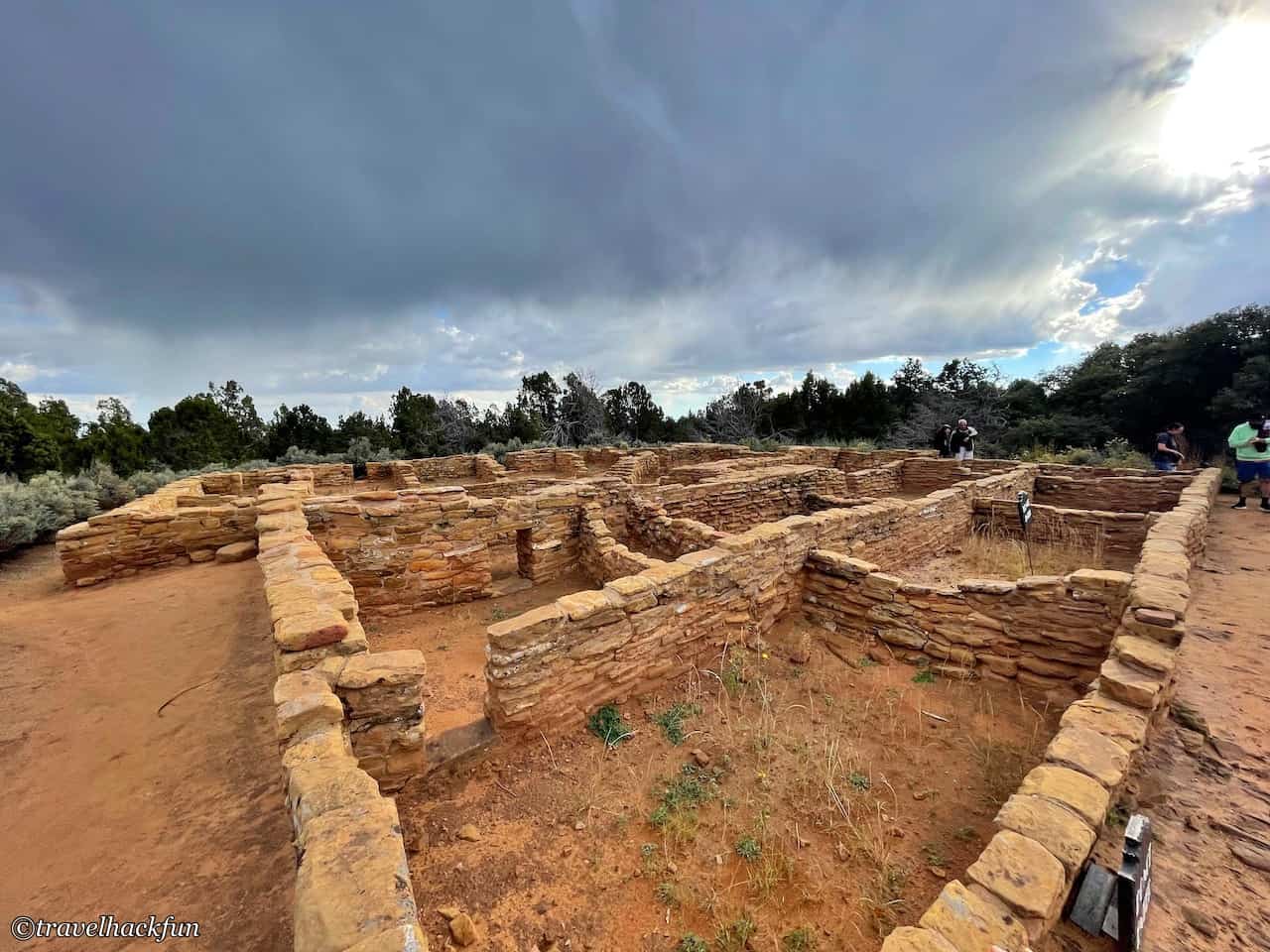
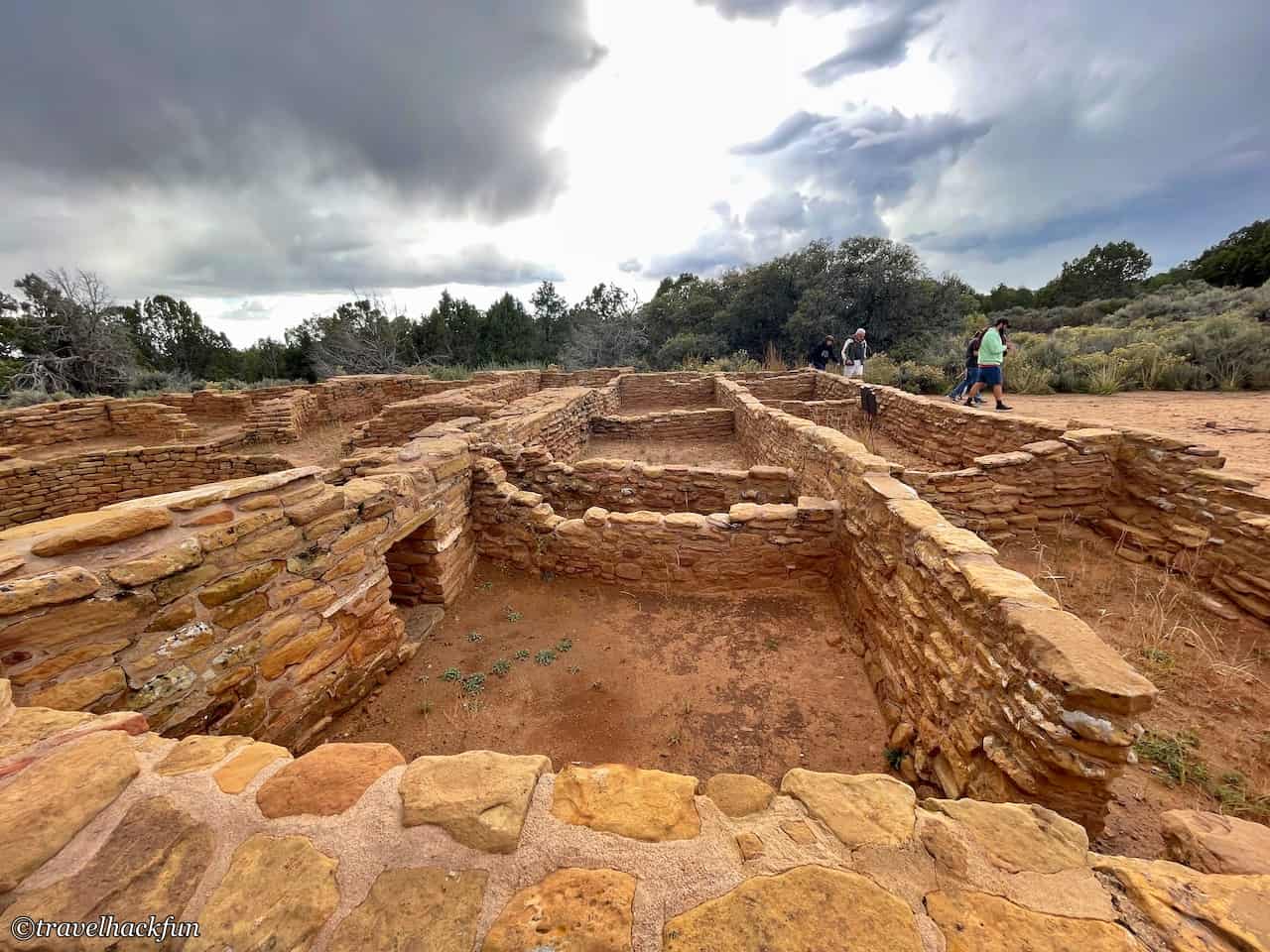


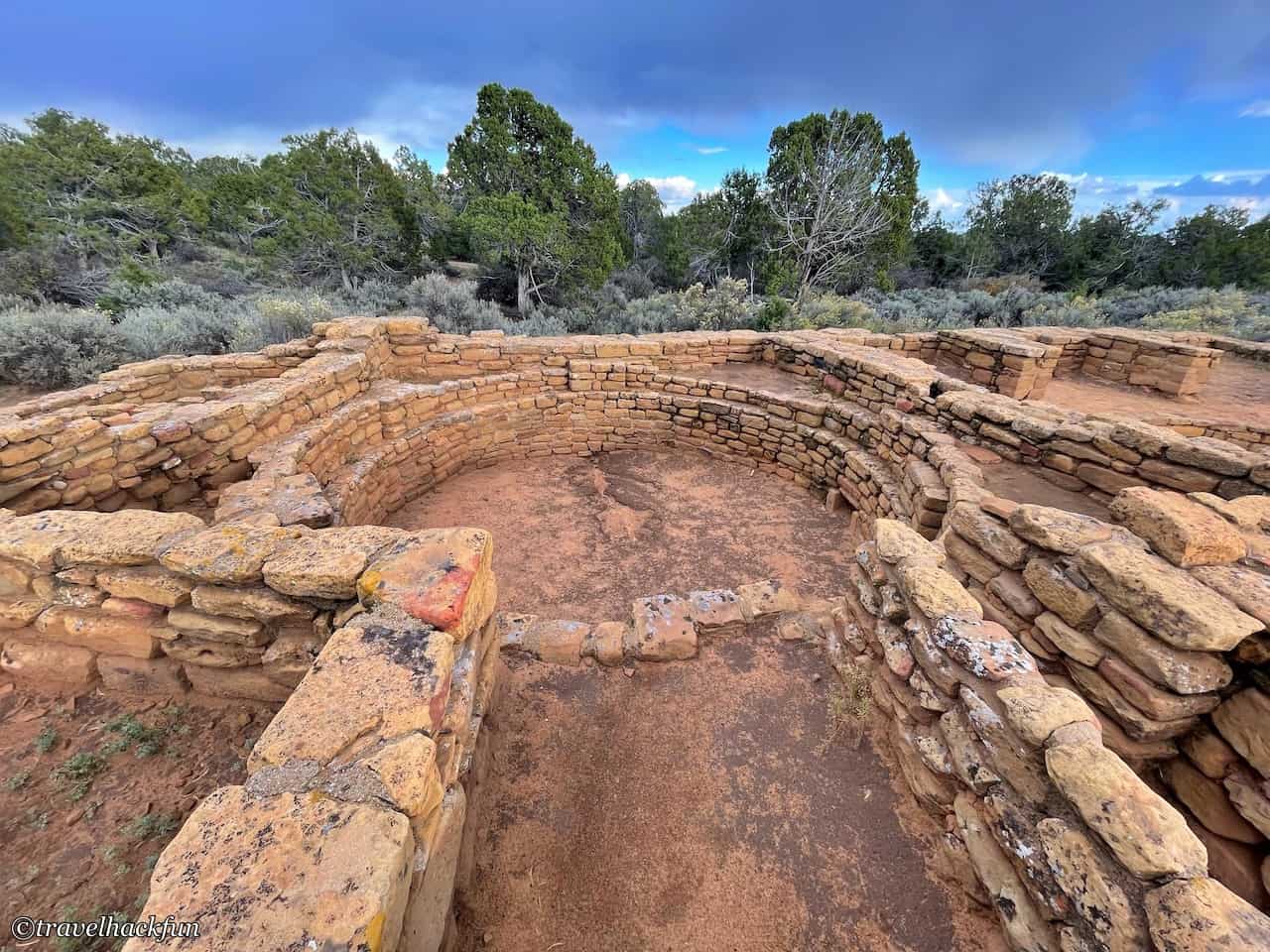
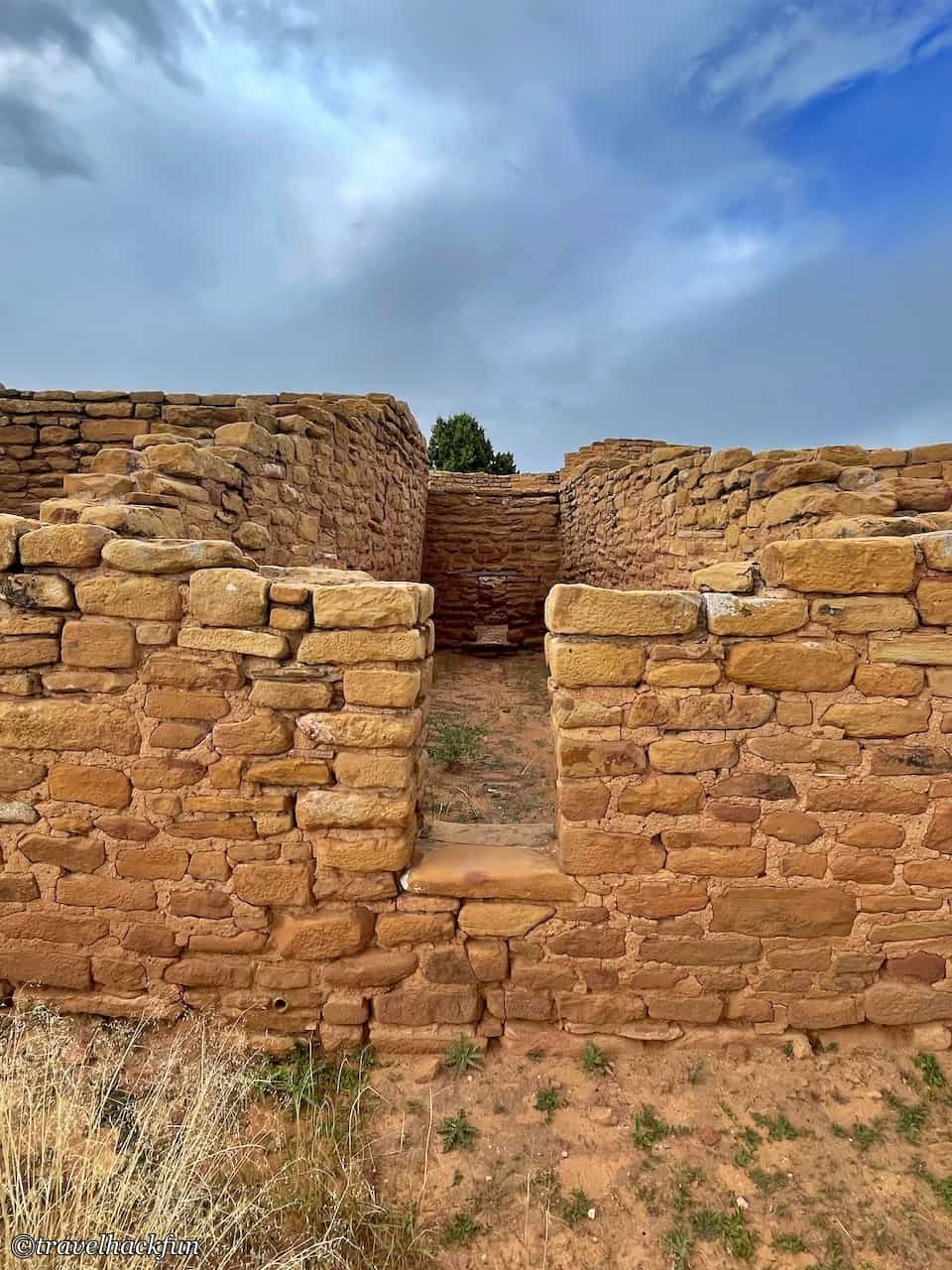
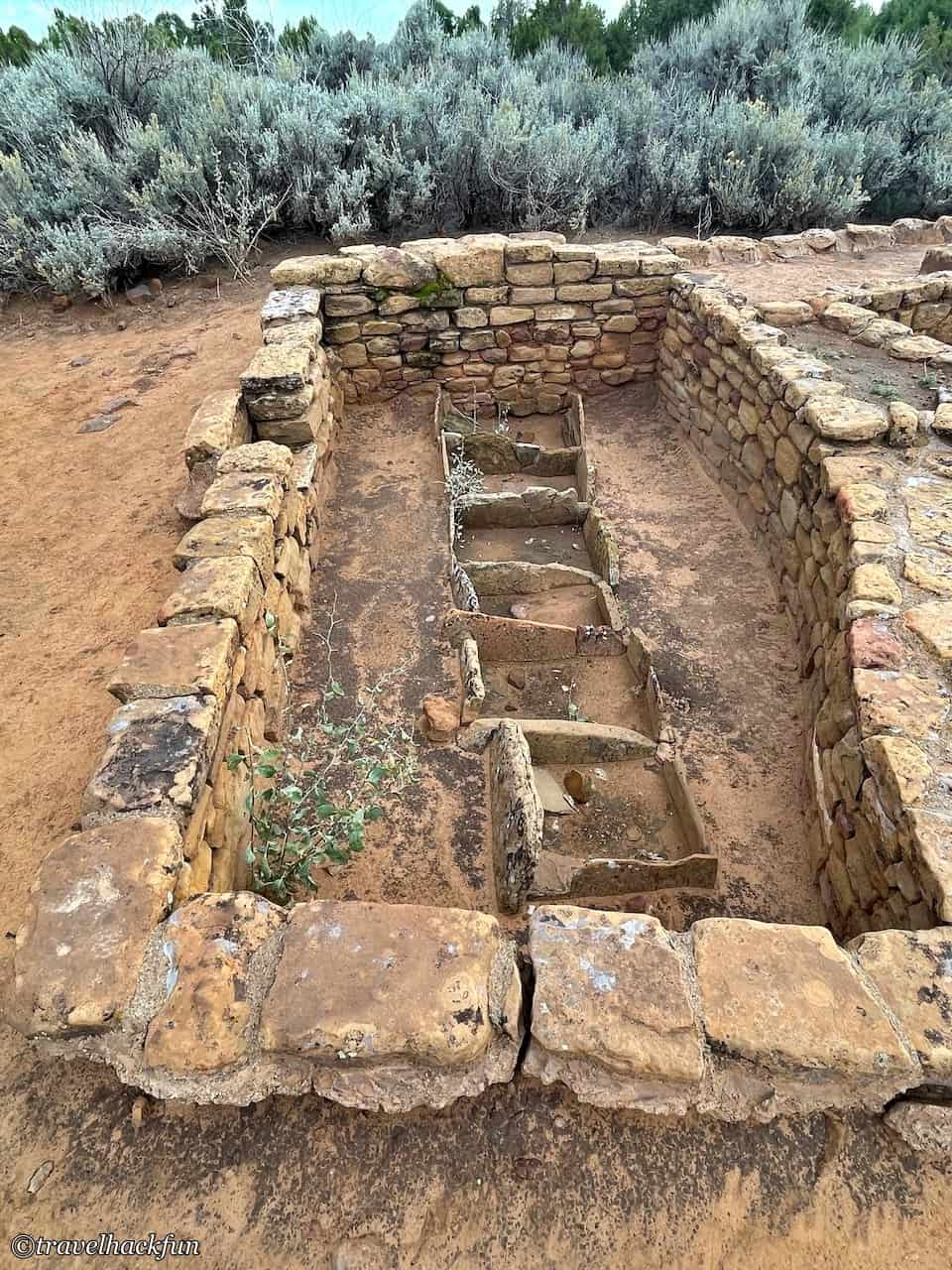
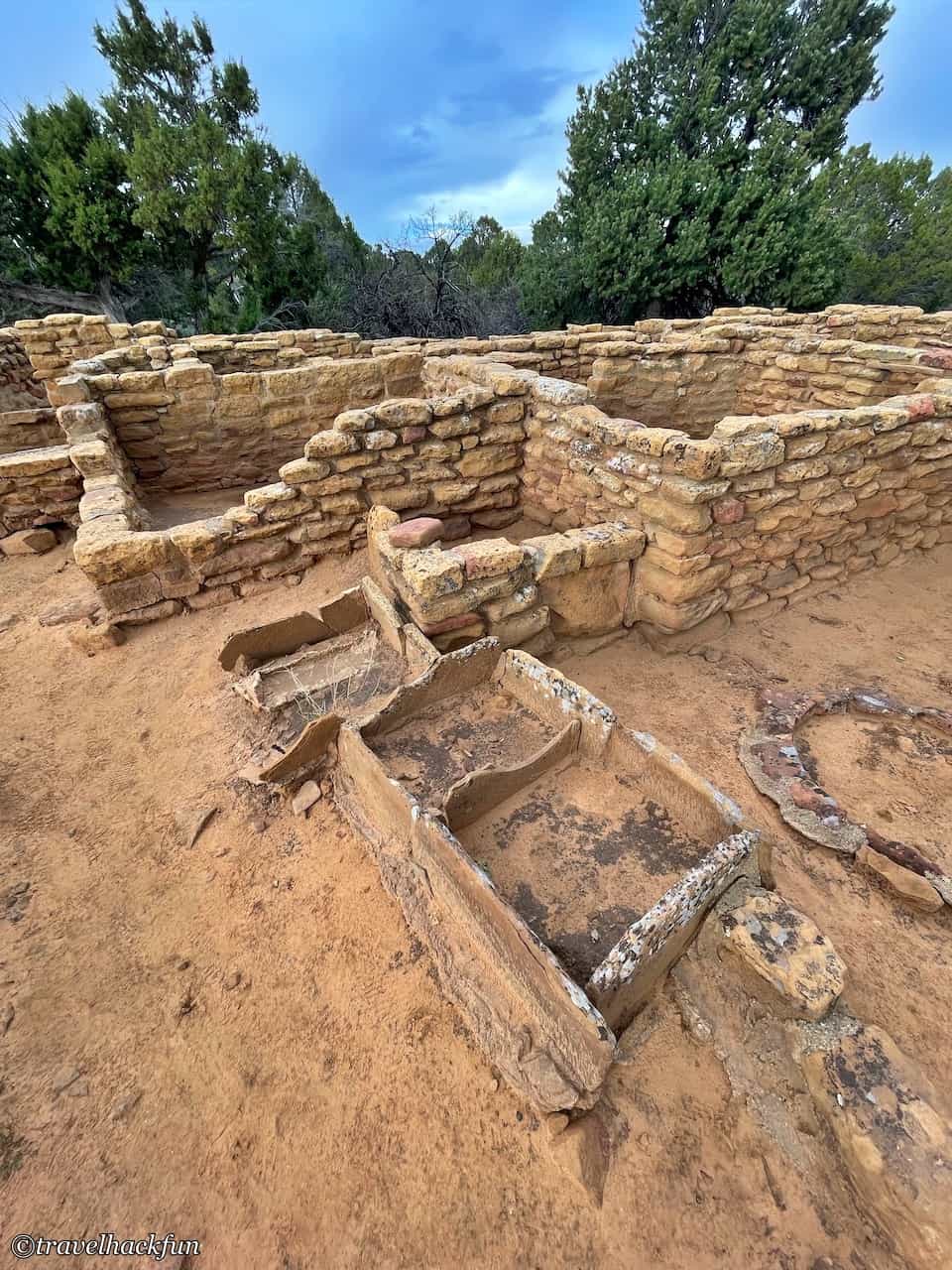
Far View Reservoir is a large man-made water storage, indicating that there must have been a substantial population in the area. The construction of this reservoir dates back to around 950 AD. People of that time used stone tools to excavate it. Today, Far View Reservoir is recognized as a civil engineering landmark.

The Megalithic House is located further away from the other ruins and was built around 1100 CE. It is a smaller residential unit and contains only one kiva.
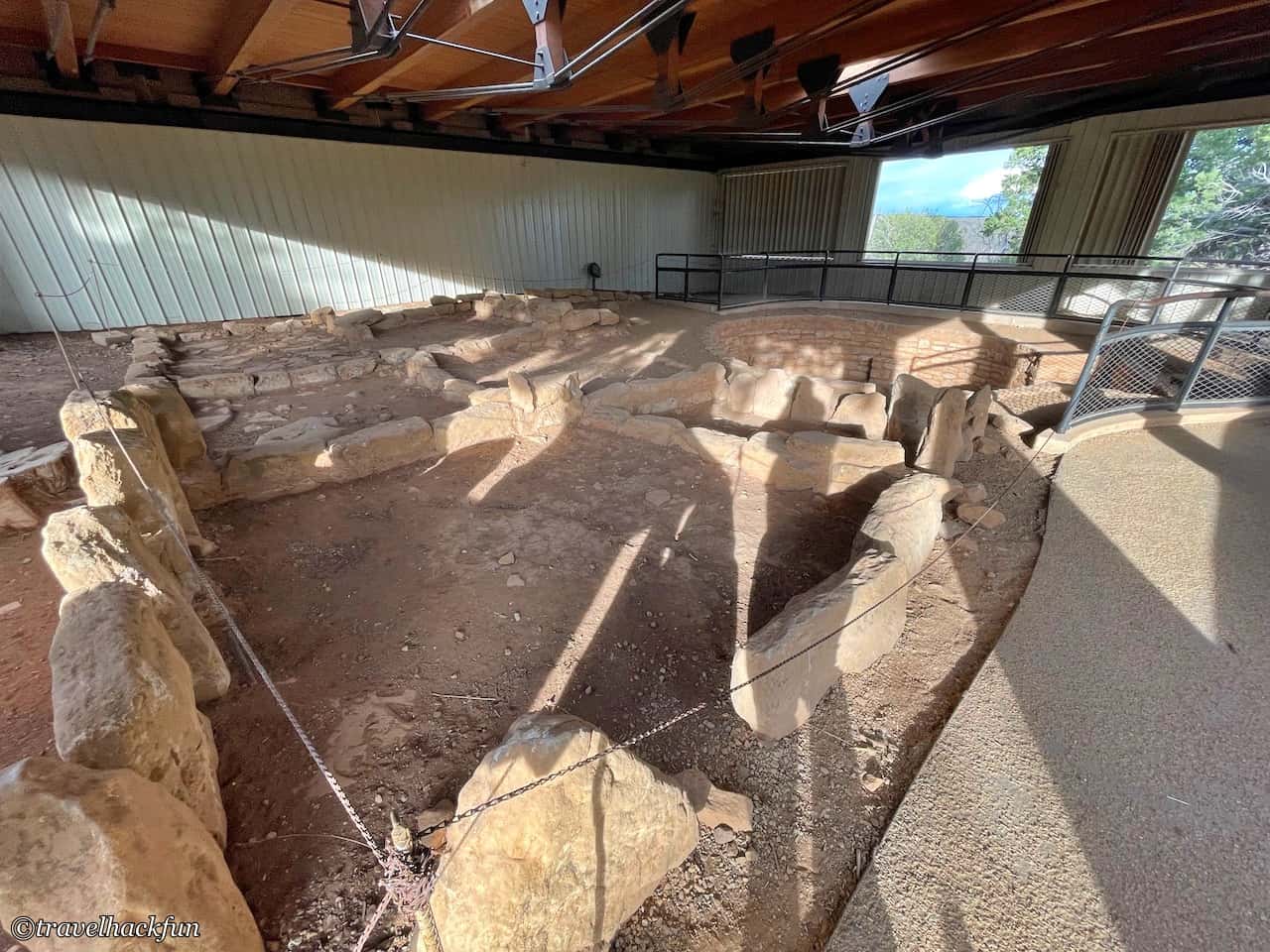
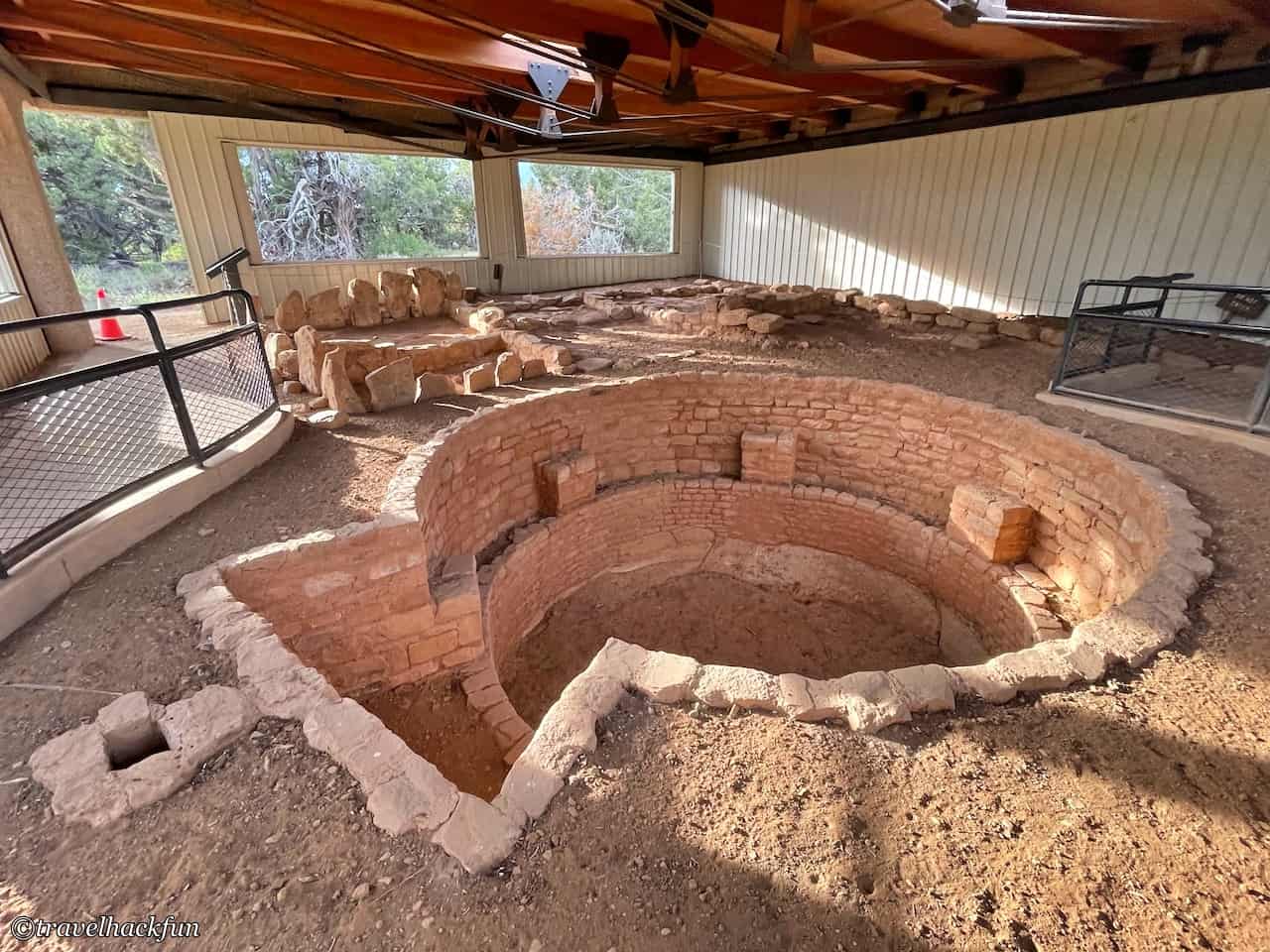
Far View Tower is another old neighborhood, built around 1200. What makes the ruins here special is the preservation of a round tower.
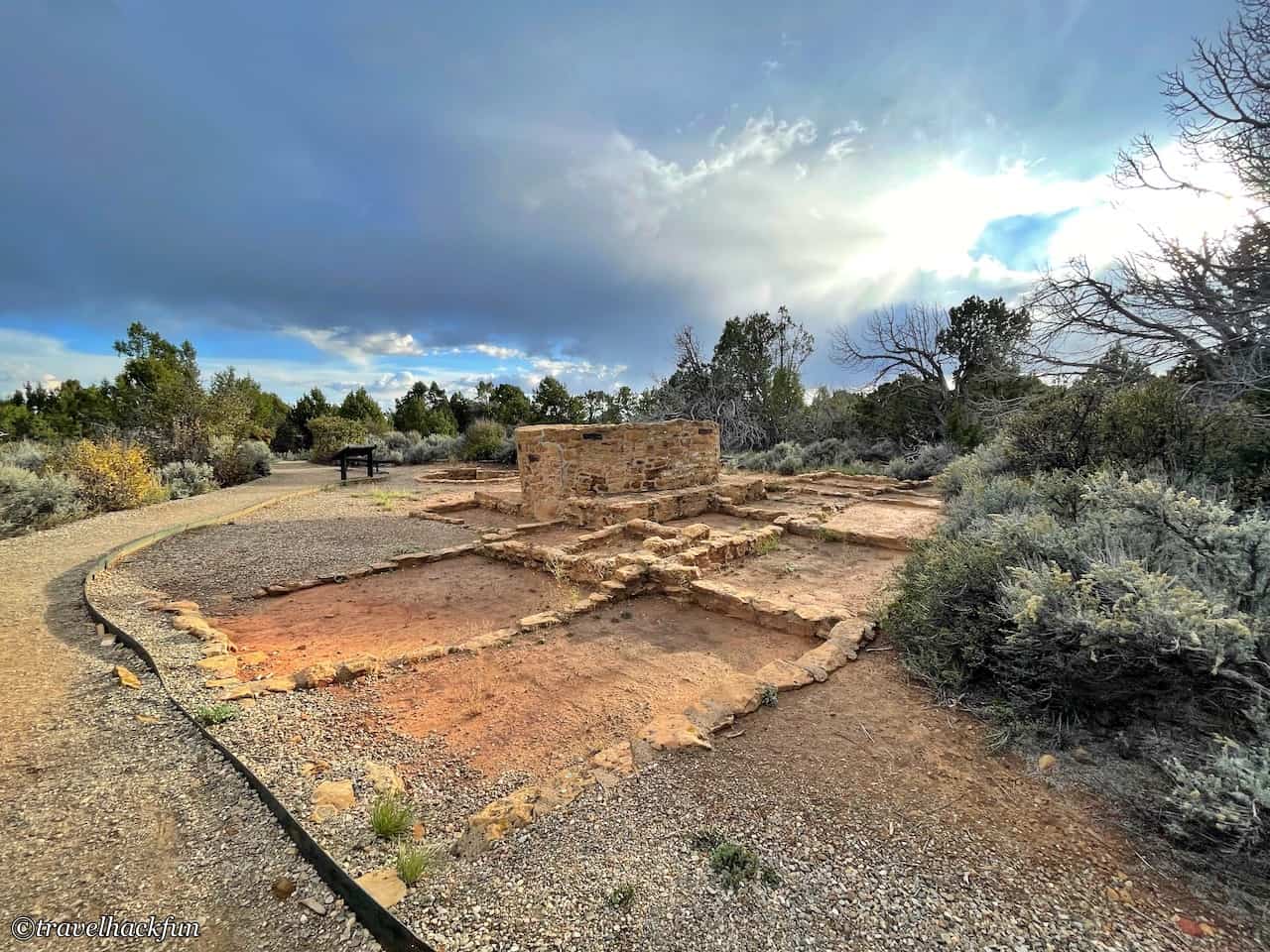

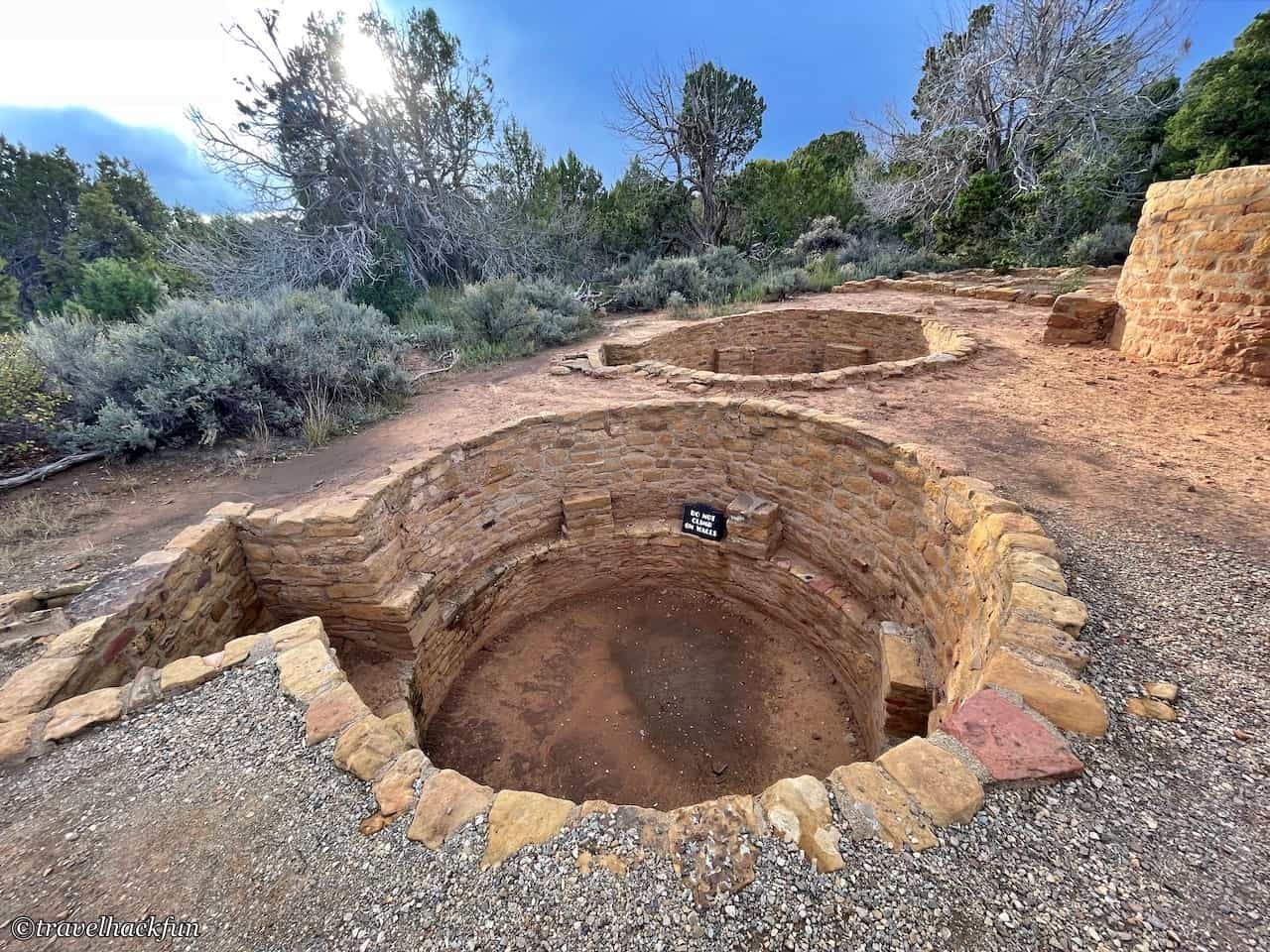
Cedar Tree Tower
Cedar Tree Tower is a square tower connected to a Kiva. Within the entire Mesa Verde National Park area, you can find dozens of such towers. Currently, it is observed that many of the surface-level towers were strategically positioned for overseeing the surrounding farmland, possibly also serving as public spaces or landmarks. The exact functions and significance of these towers are still subjects of ongoing research and study in the field of archaeology.
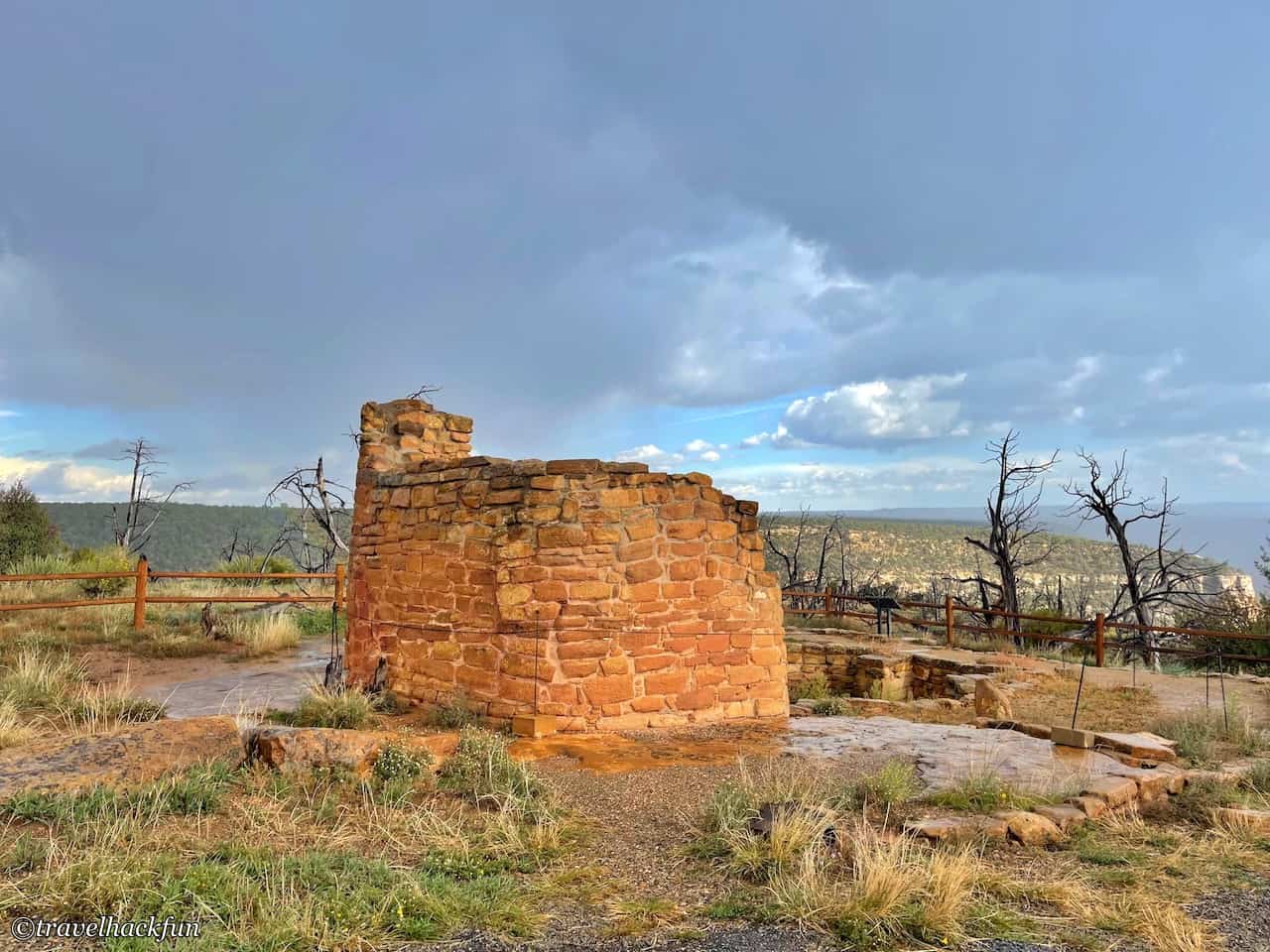
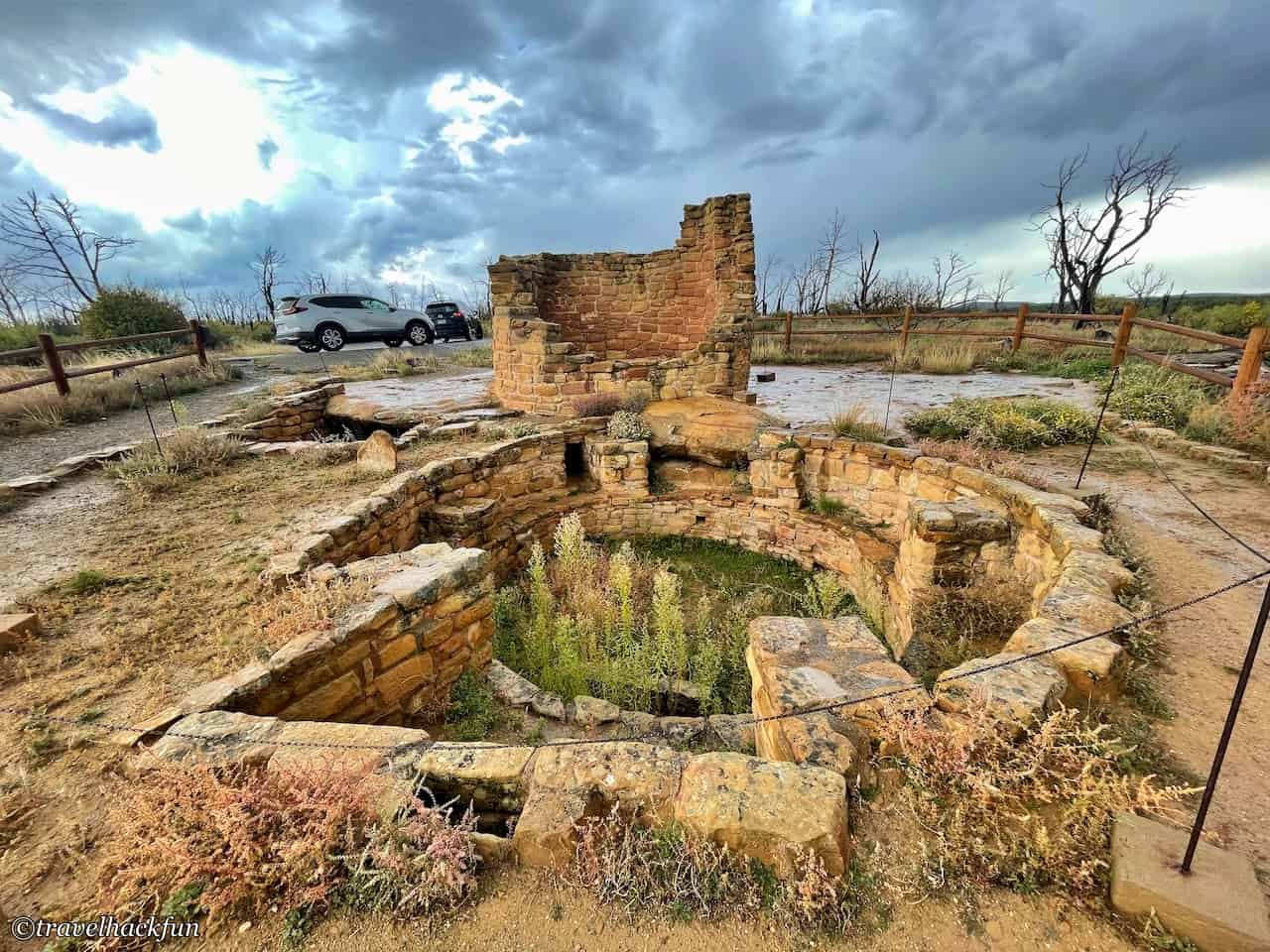
Spruce Tree House Area
Spruce Tree House
Spruce Tree House area houses the park headquarters and features a museum for visitors to explore. The Spruce Tree House was once a Cliff dwelling that visitors could explore on their own. However, since 2015, it was temporarily closed to the public due to structural instability, and access is no longer permitted.
Nevertheless, it's still worth a visit because Spruce Tree House is the best-preserved Cliff Dwelling within the park. If you want to catch a glimpse of Spruce Tree House, you can take a short but somewhat steep walk from behind the museum. The sight of a community nestled within the cliffs from a distance is quite intriguing.
Petroglyph Point Trail
Around Spruce Tree House, there are two loop trails, Since the Spruce Canyon Trail is temporarily closed, we hiked the other less well-known trail is the Petroglyph Point Trail, which offers views of petroglyphs. It's a 2.4-mile hike of moderate difficulty, with a slightly steeper section in the latter part of the trail.
Walking along the cliff's edge, you'll enjoy some scenic views and might come across several smaller Cliff dwellings that aren't featured in the guidebooks. Some of these dwellings are right along the trail, allowing for a close-up examination. If you've previously taken other guided tours, this is an excellent opportunity to observe some intriguing details up close.

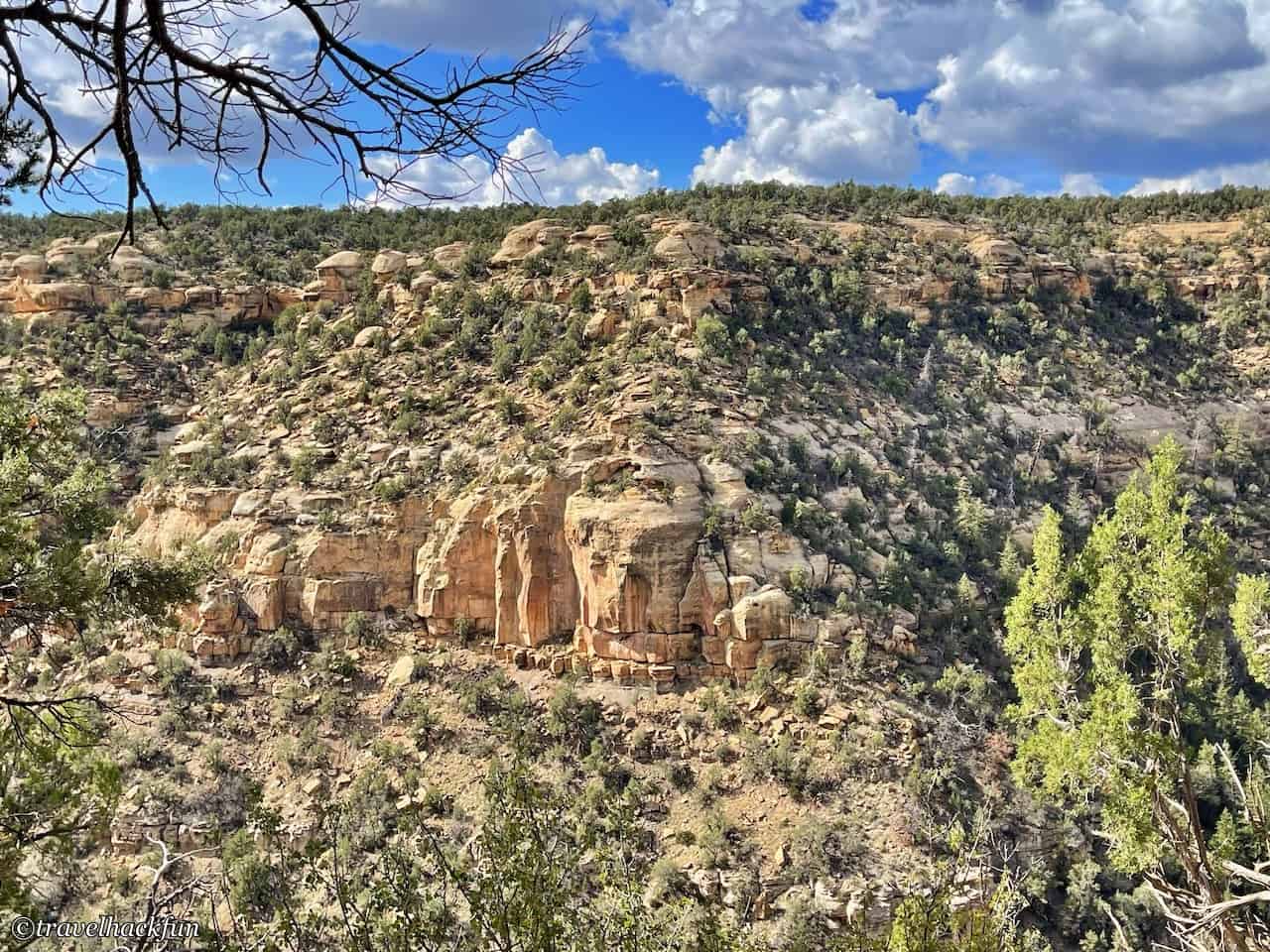
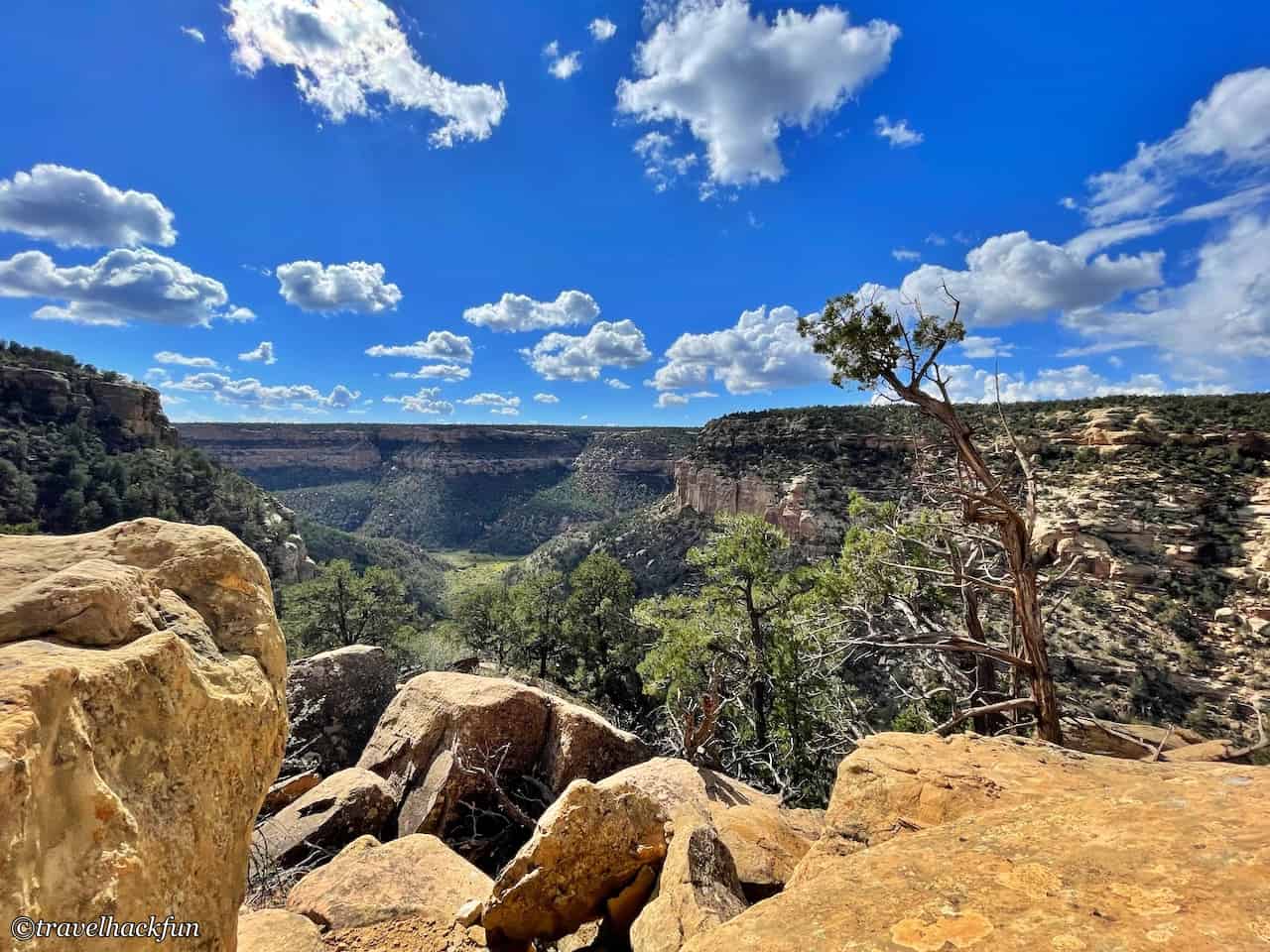
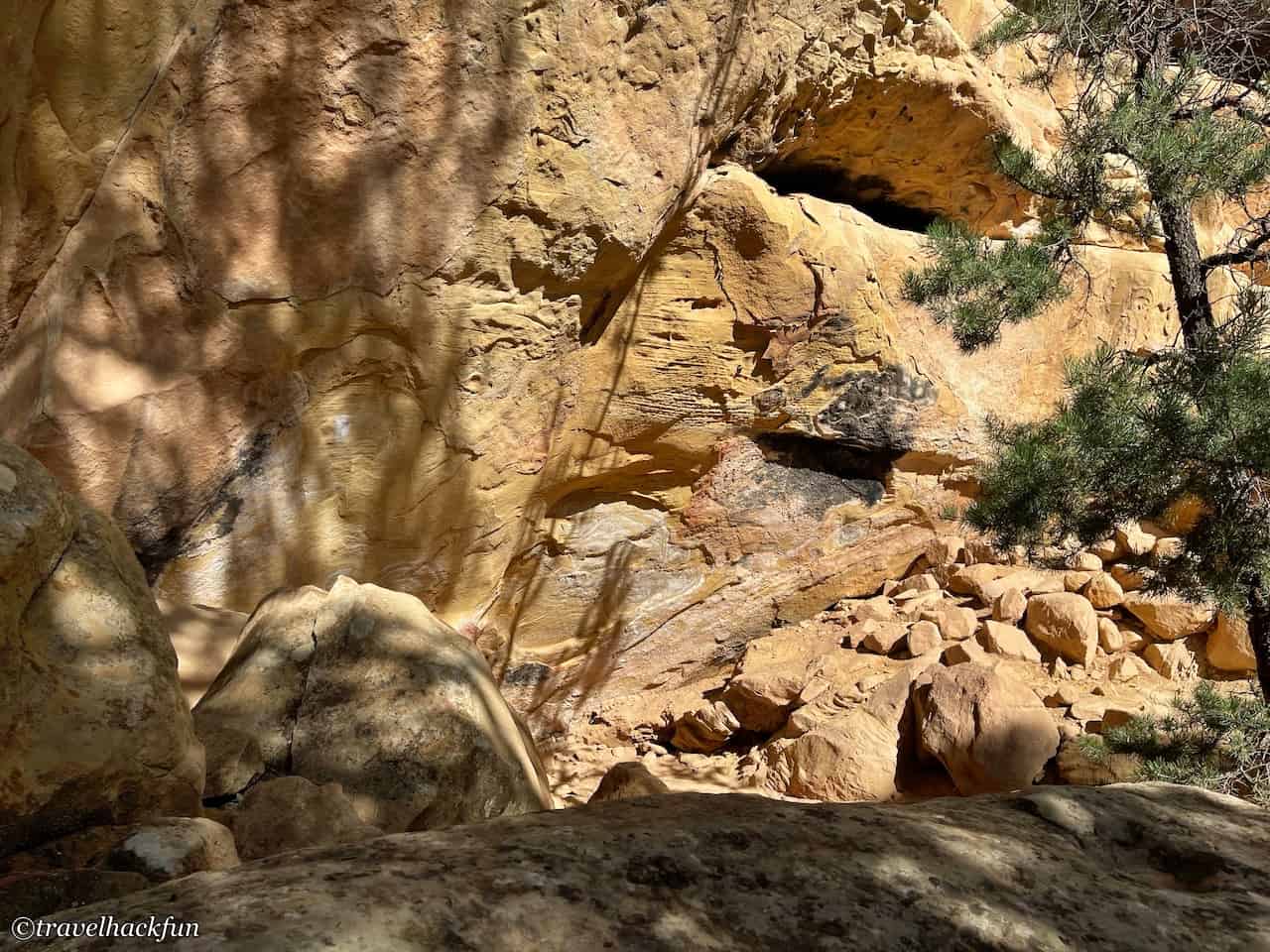
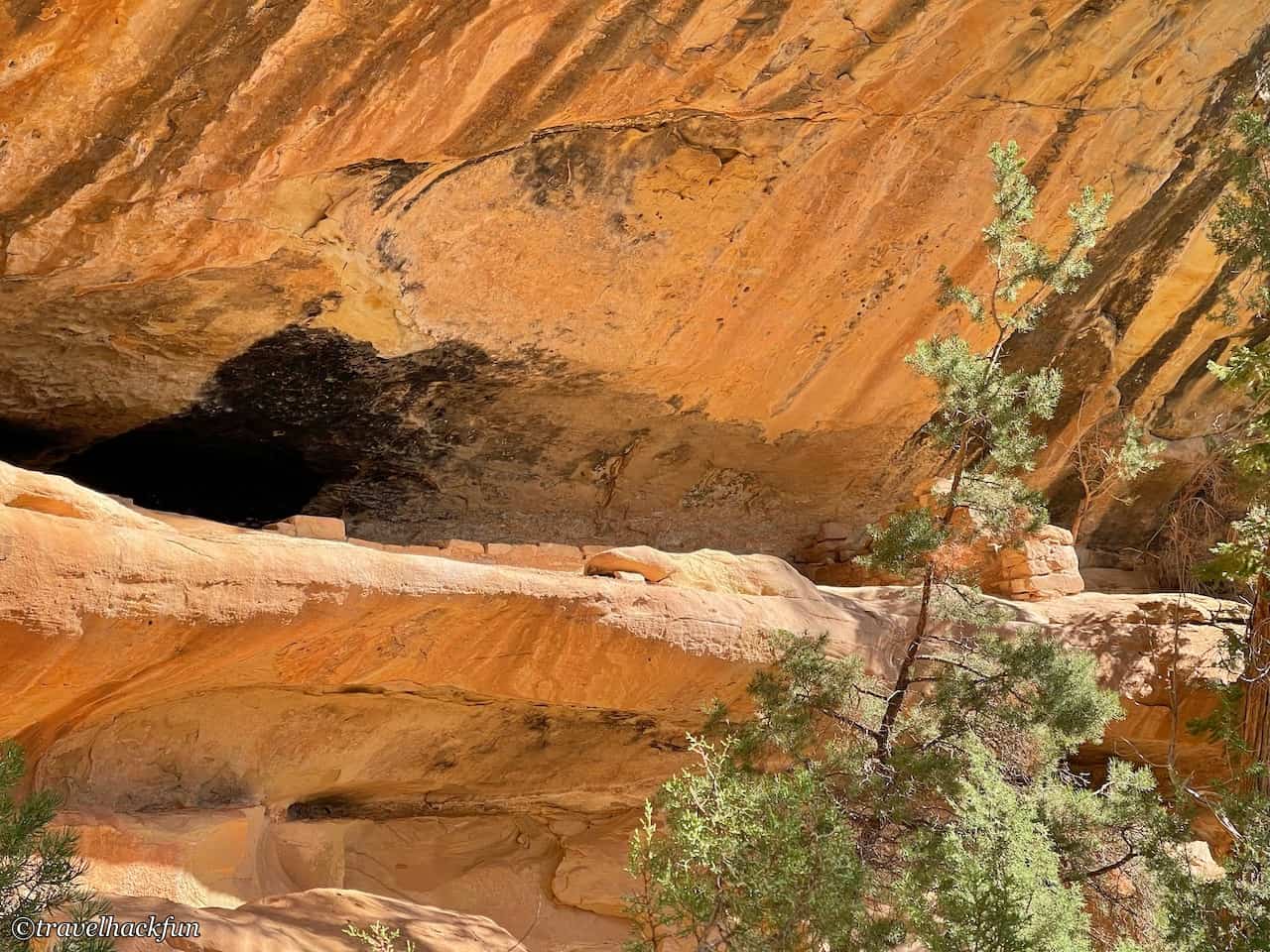
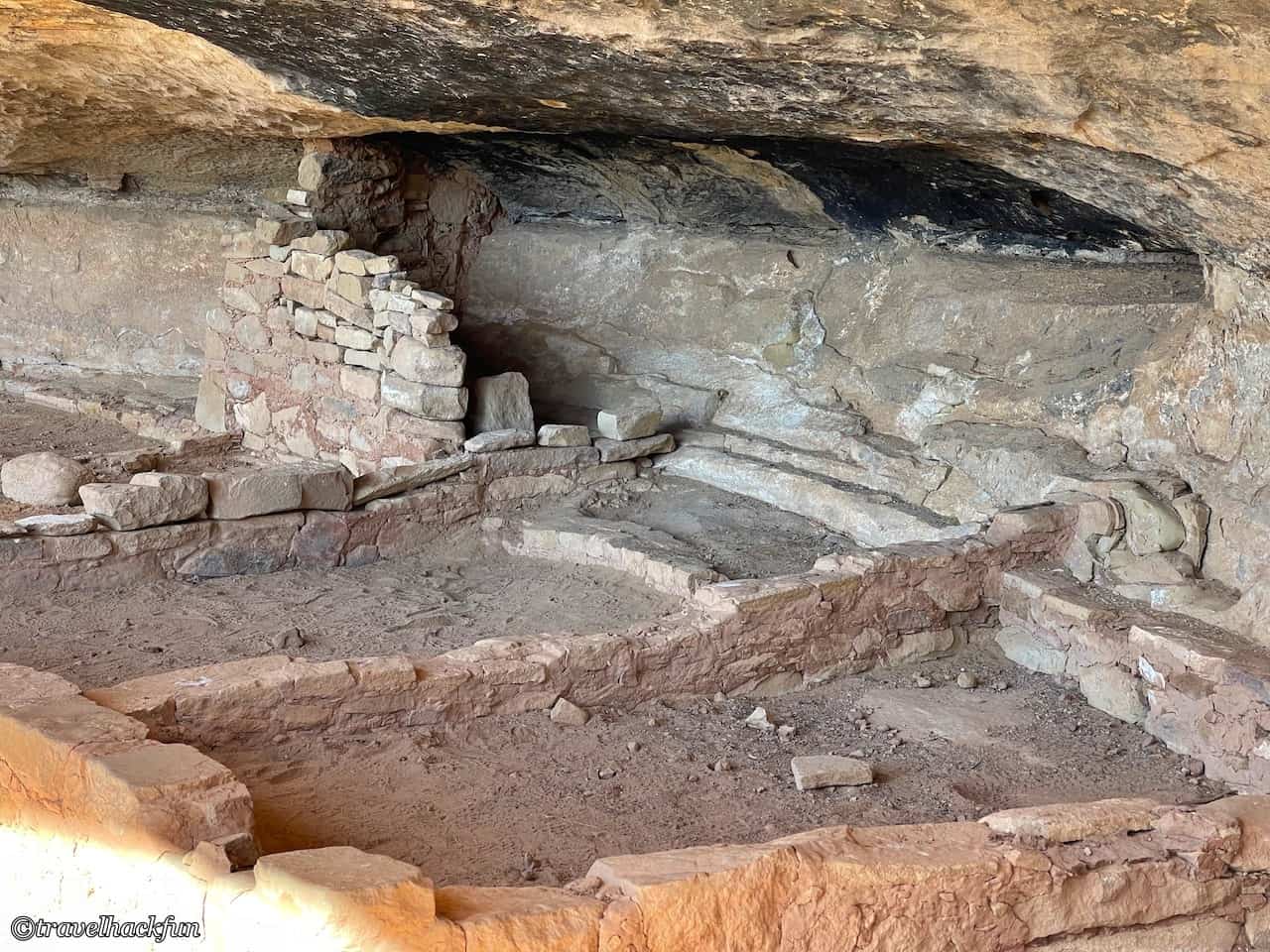

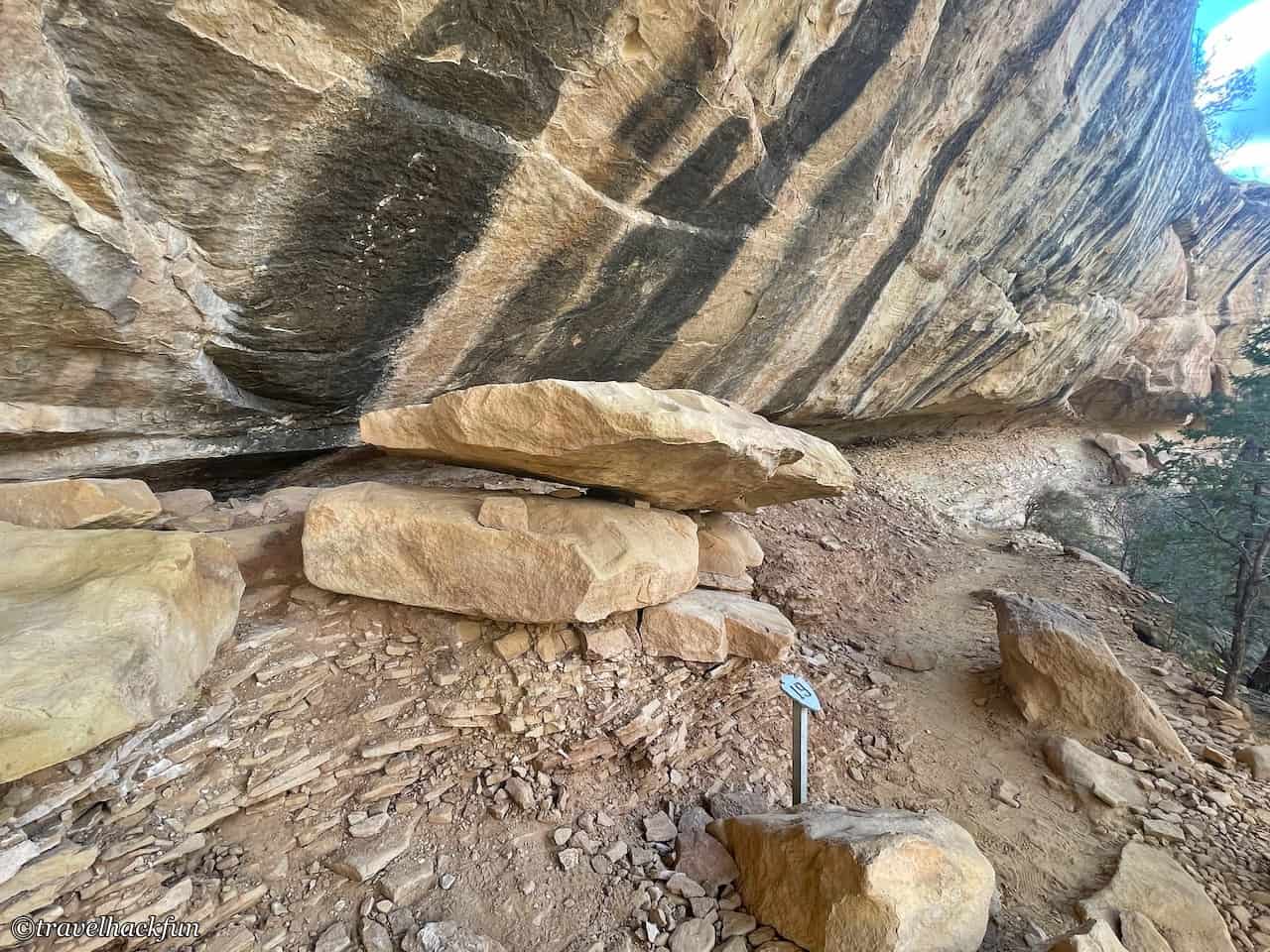

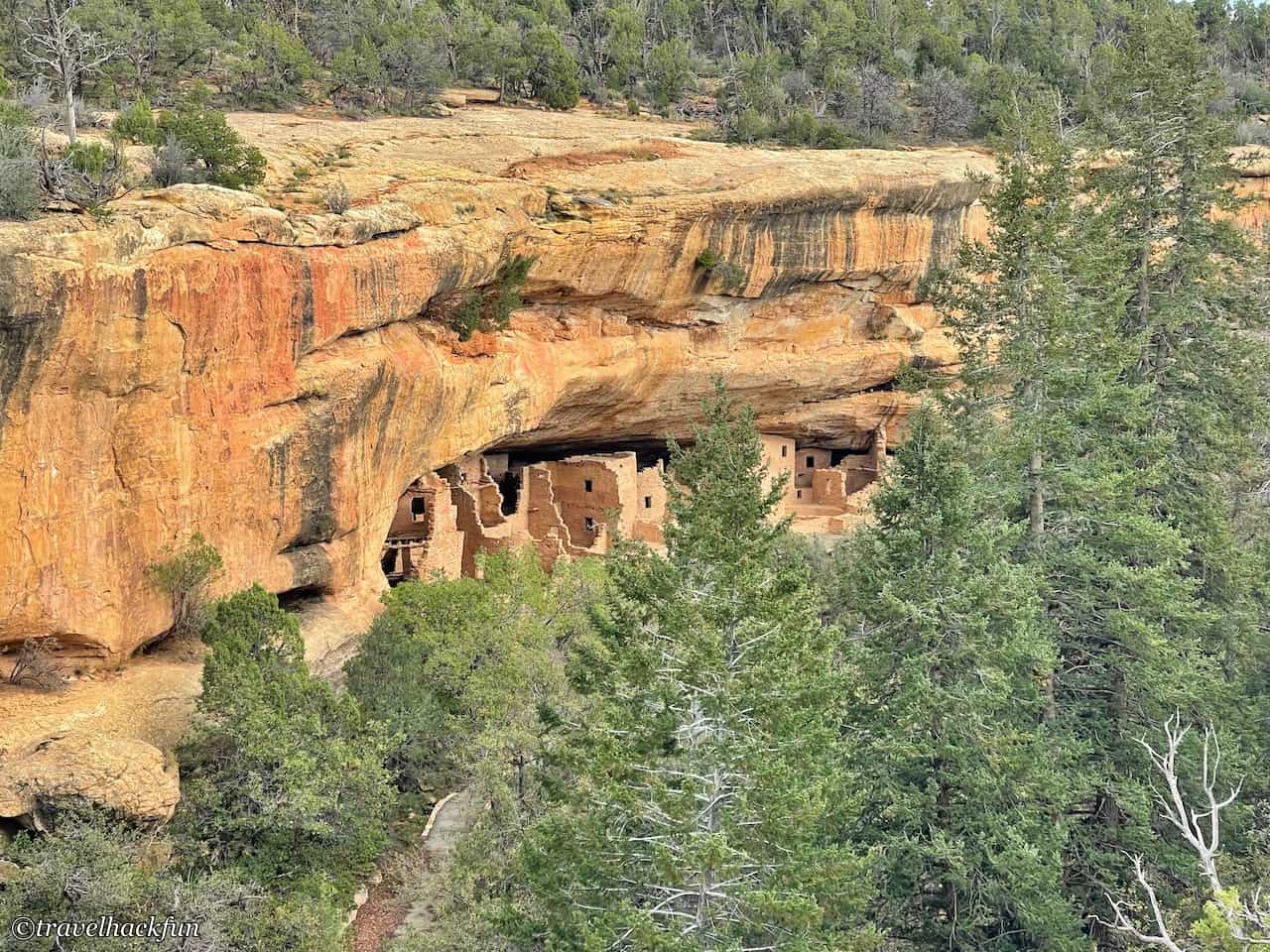
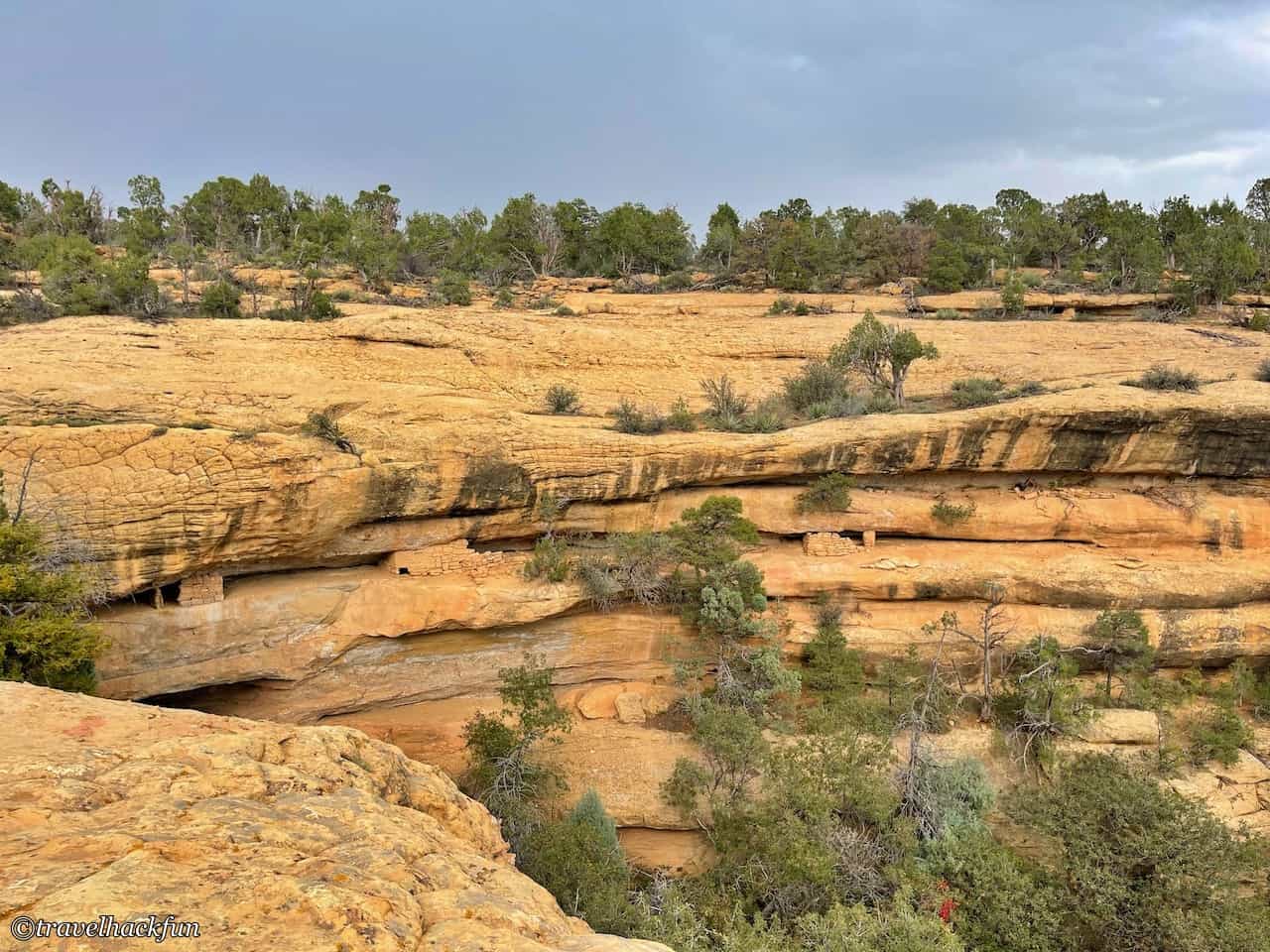

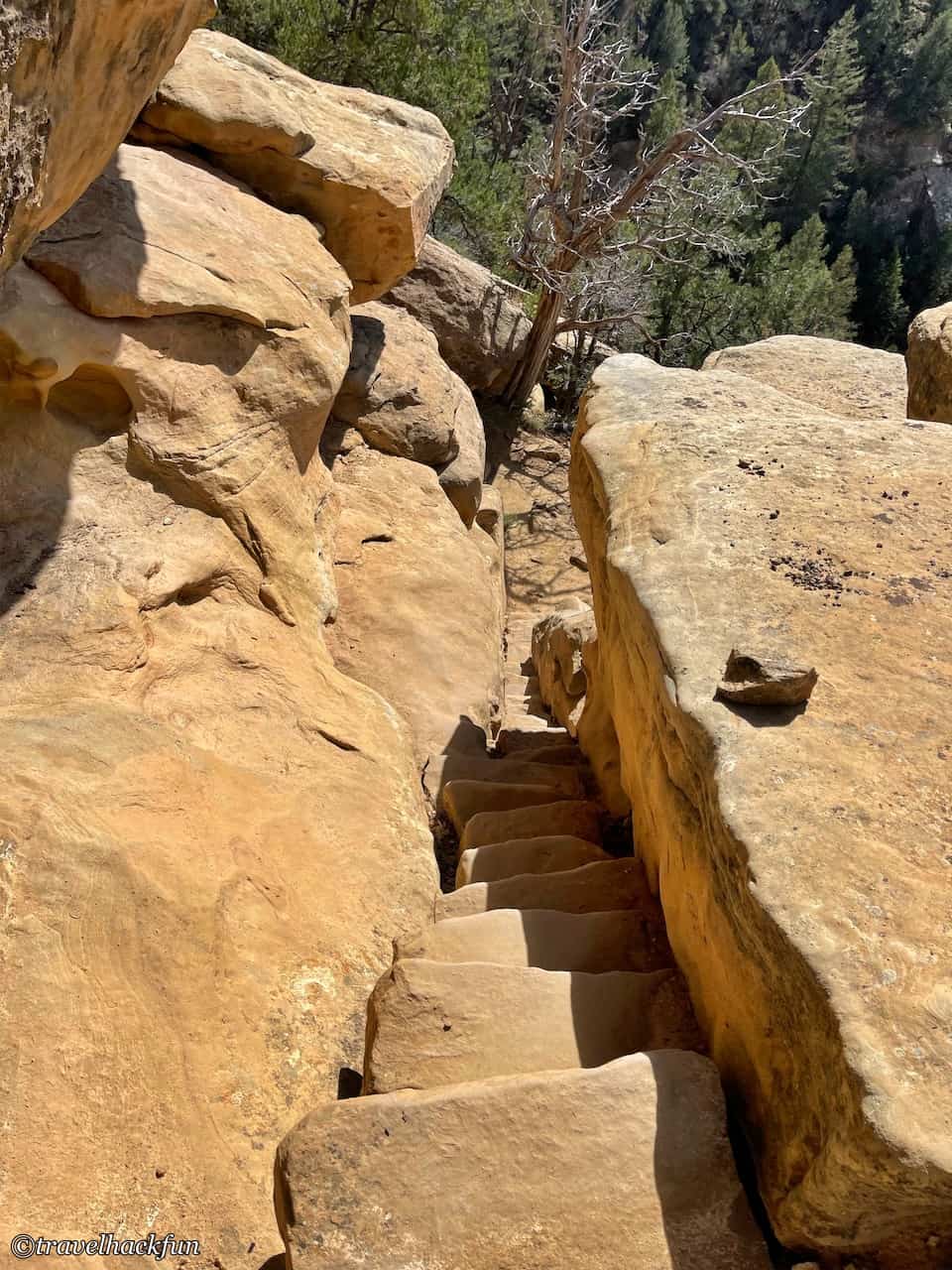
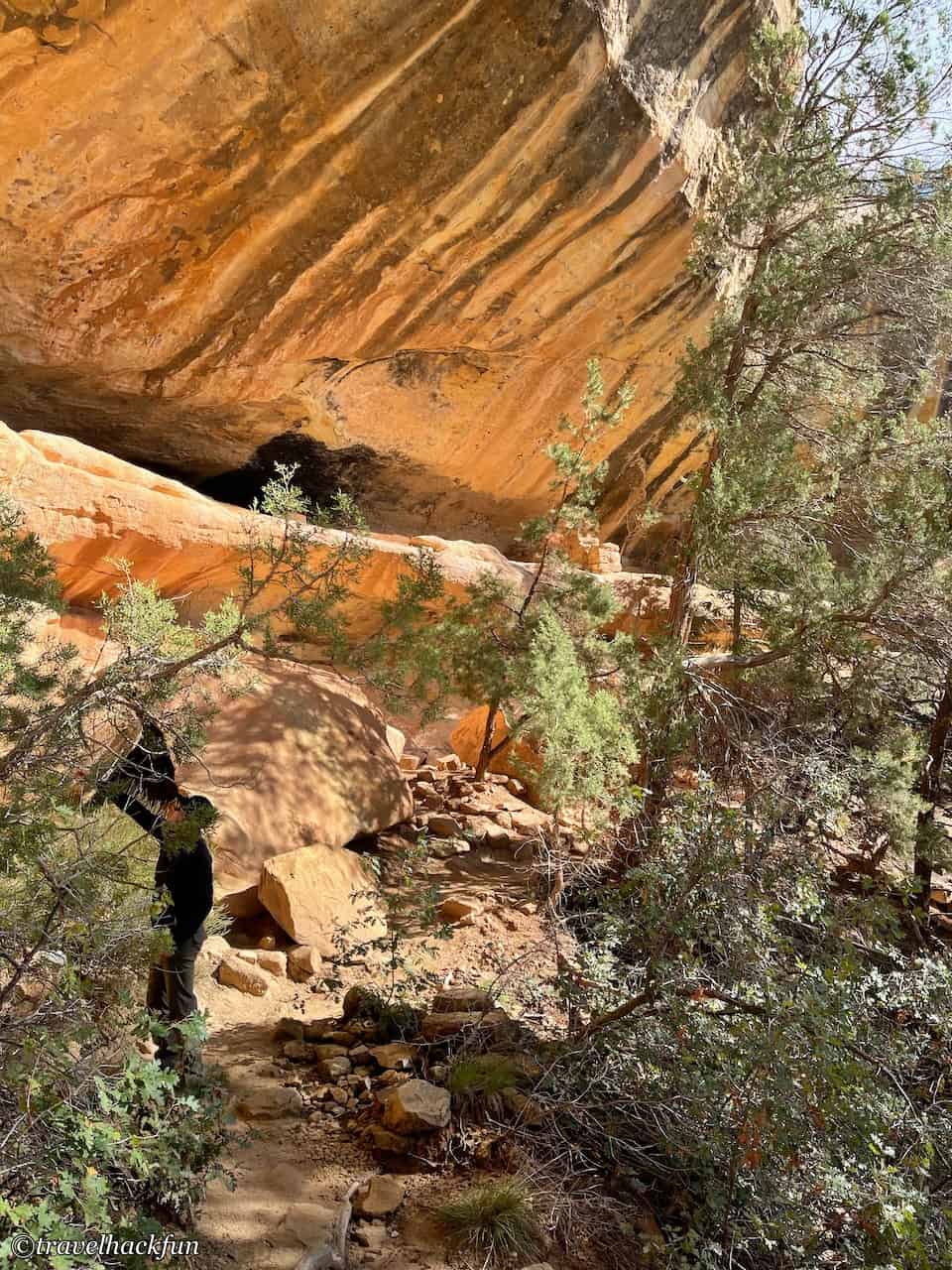
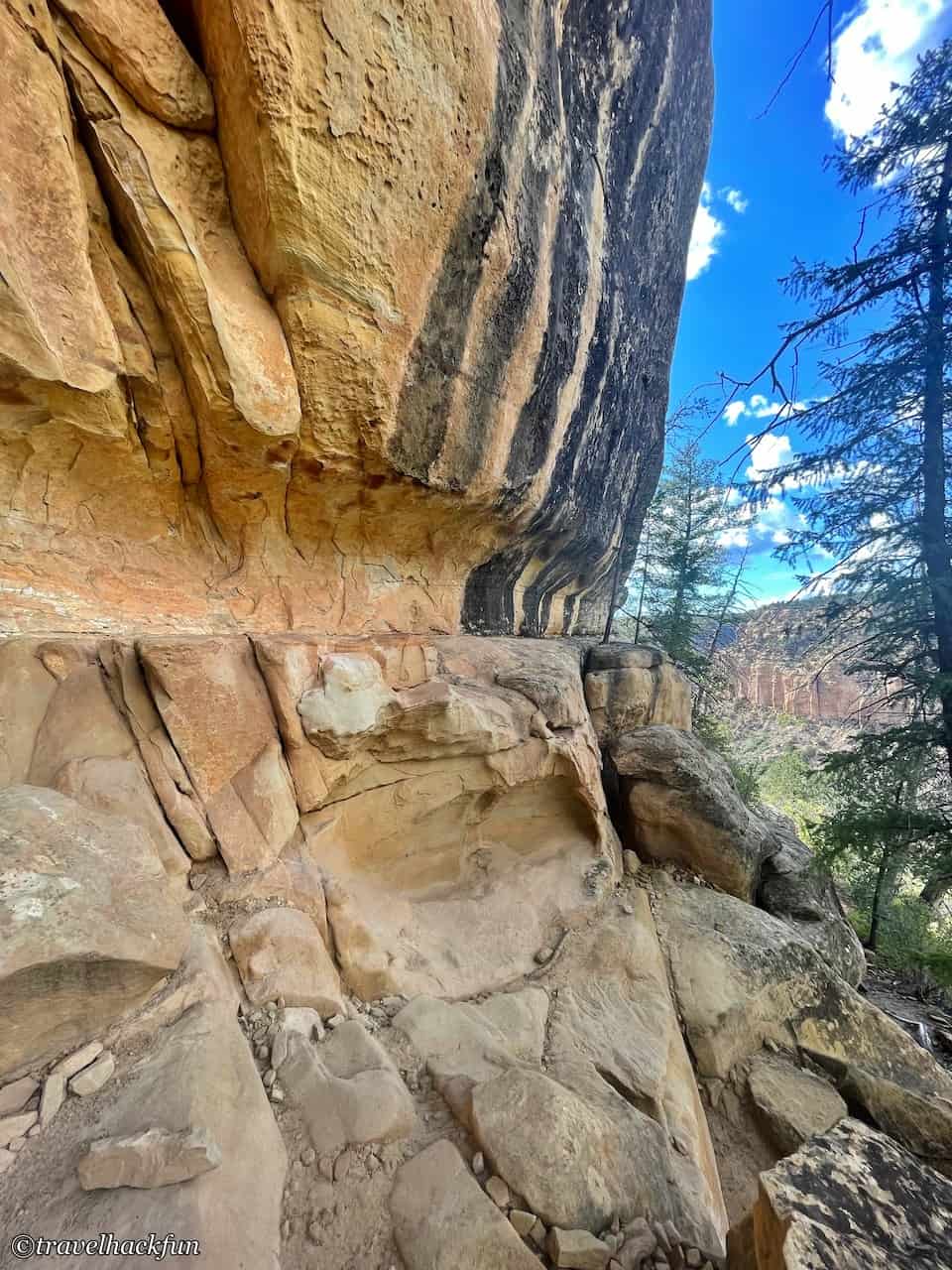
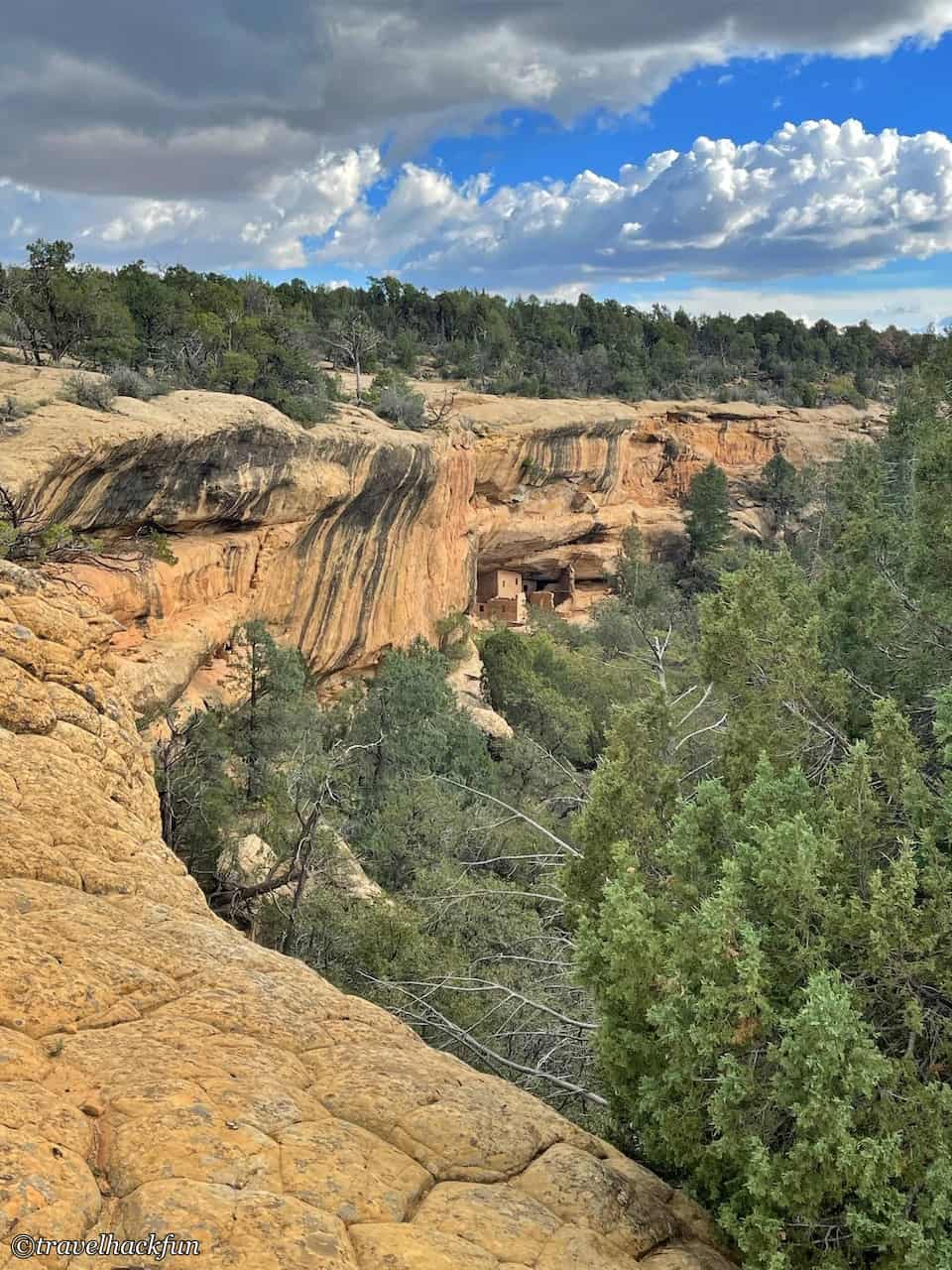
After an hour of hiking along the trail, we finally discovered the cliffside petroglyphs. Beyond the petroglyphs, the trail presented a challenging ascent involving steep stairs that required a hands-and-feet approach to climb up to the Mesa top. From there, it was another 1-mile walk back to the platform in front of Spruce Tree House.
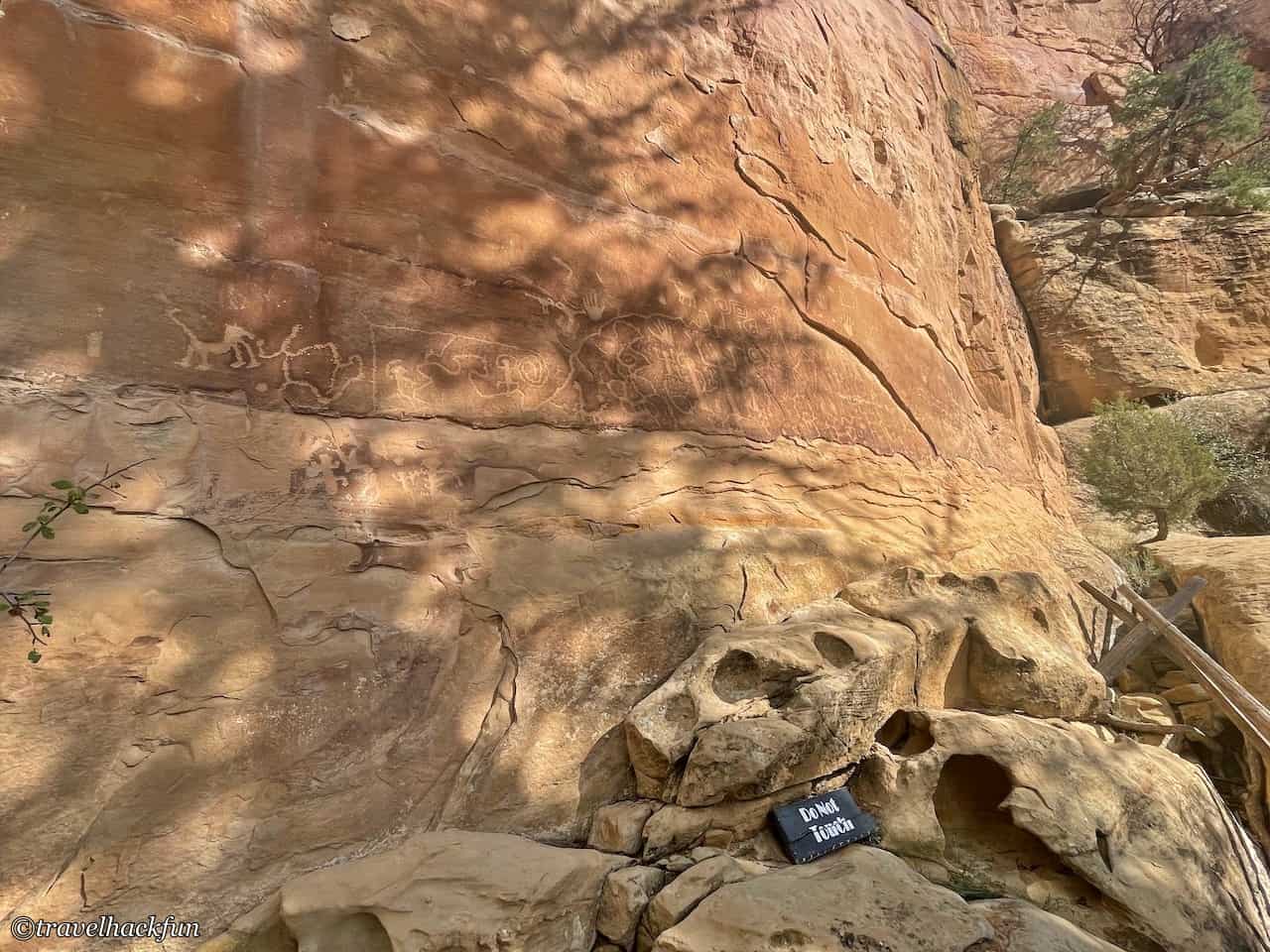
Cliff Palace Loop
Cliff Palace
Cliff Palace is one of the most popular attractions in Mesa Verde National Park. It was built between 1190 and 1280 AD. To get a panoramic view of Cliff Palace, you can visit the Cliff Palace Overlook. Cliff Palace is the largest Cliff Dwelling in North America with over 150 rooms, and it is preserved remarkably well. Due to its immense size, in the past, it was mistakenly thought to be a palace. It is currently estimated that Cliff Palace once housed between 120 to 150 people. Inside, there are 21 Kivas, which indicates that numerous families once cohabited in a manner akin to modern-day apartment communities.

Looking down from the Overlook, you can see most of Cliff Palace, although a portion of it is obscured by the cliffs. I highly recommend taking the Cliff Palace Tour for a close-up experience. This tour is one of the easiest to join. There are at least eight tours offered daily. For more details about the tours, refer to my other post here.
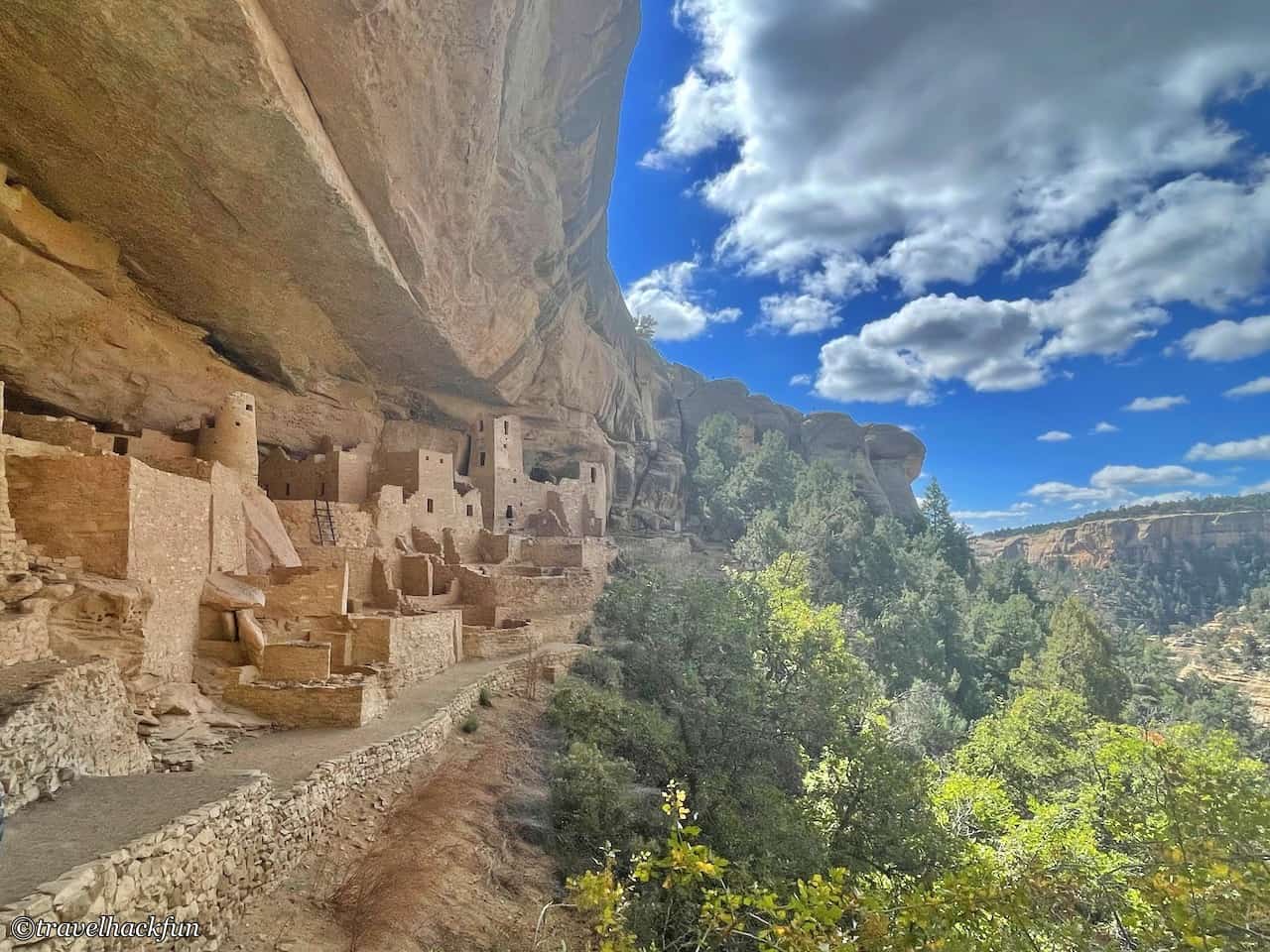
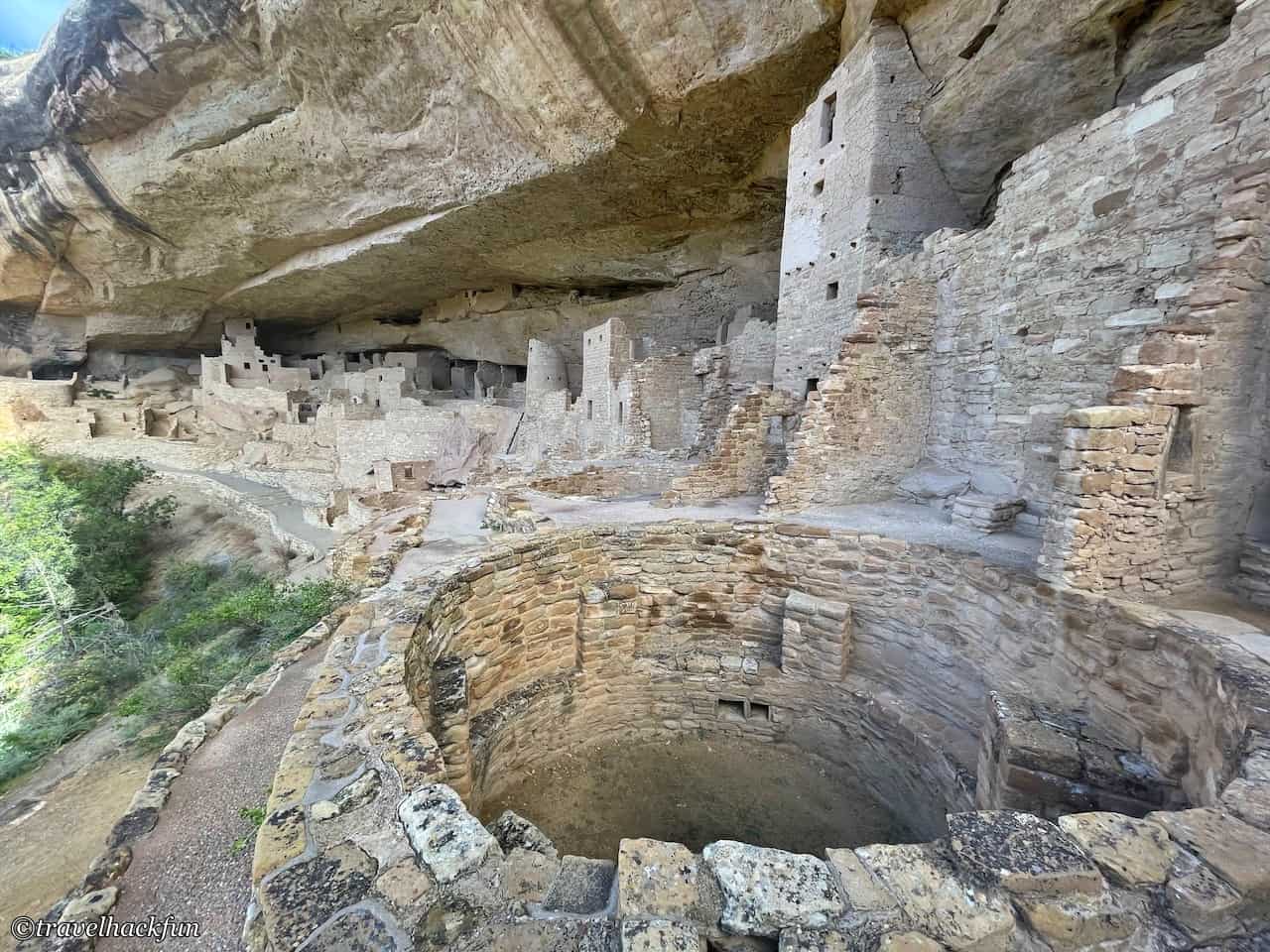
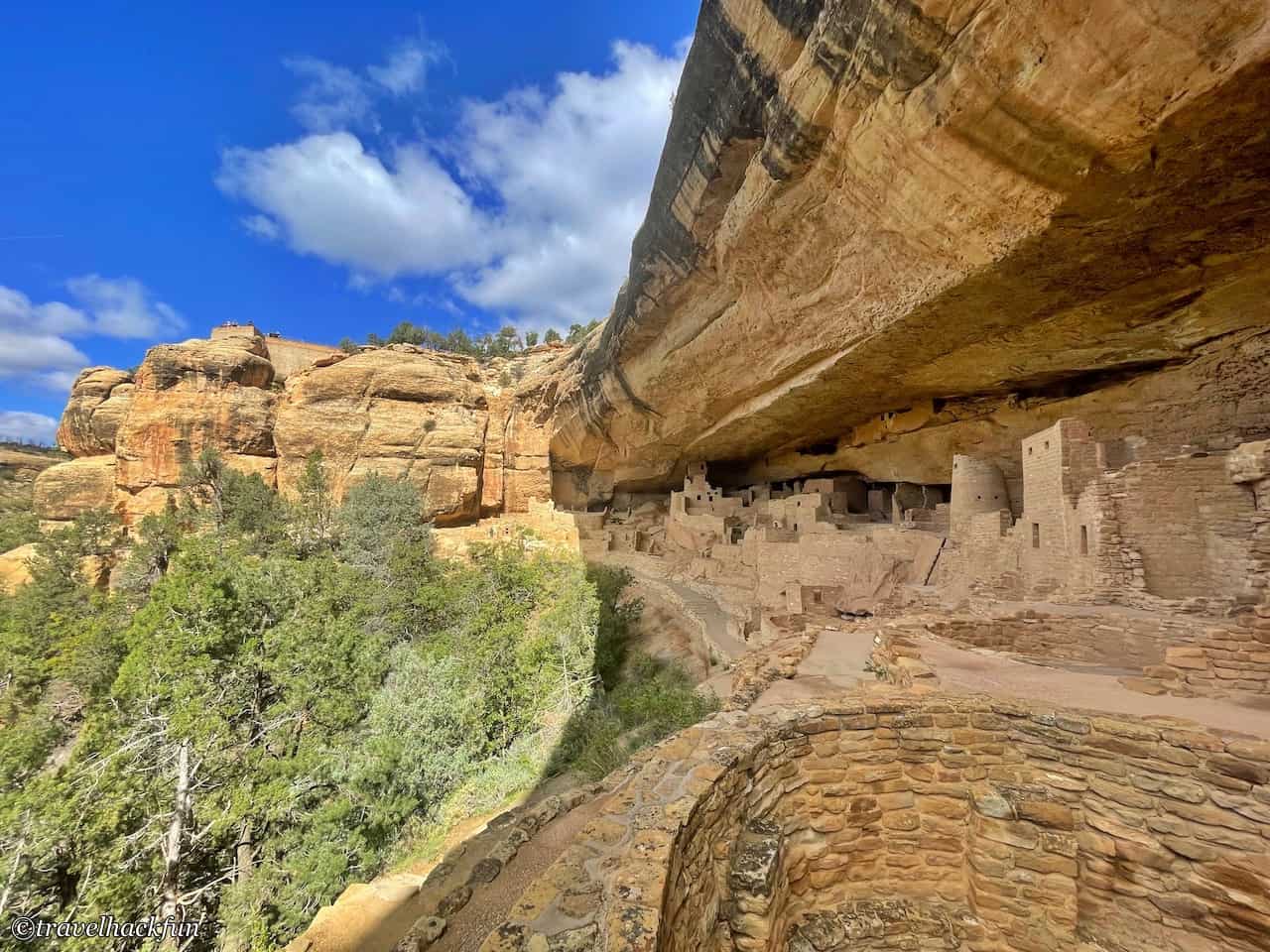
Cliff Canyon Overlook
This viewpoint overlooking Cliff Canyon provides a glimpse of numerous small Cliff Dwellings on the canyon walls. Some of the named ones include House of Many Windows, Sun Point Cliff Dwelling, and Mummy House. The larger ones having 15-16 rooms and smaller ones consisting of just 2 rooms. Although you can only observe them from a distance, it's fascinating to imagine that many people once lived on these canyon walls. Reflecting on their daily routines, including climbing to the Mesa top for work, underscores the uniqueness of their way of life.
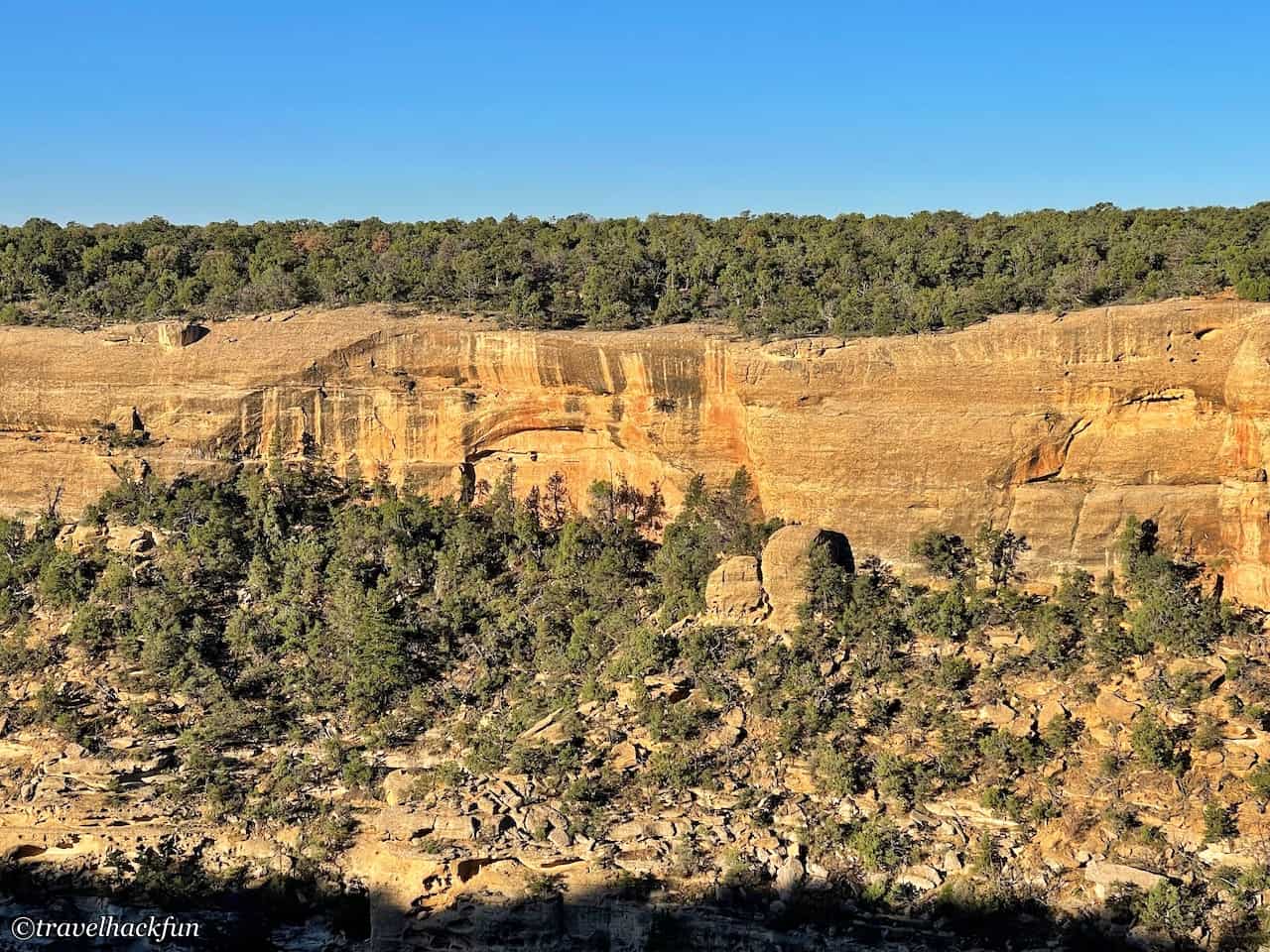
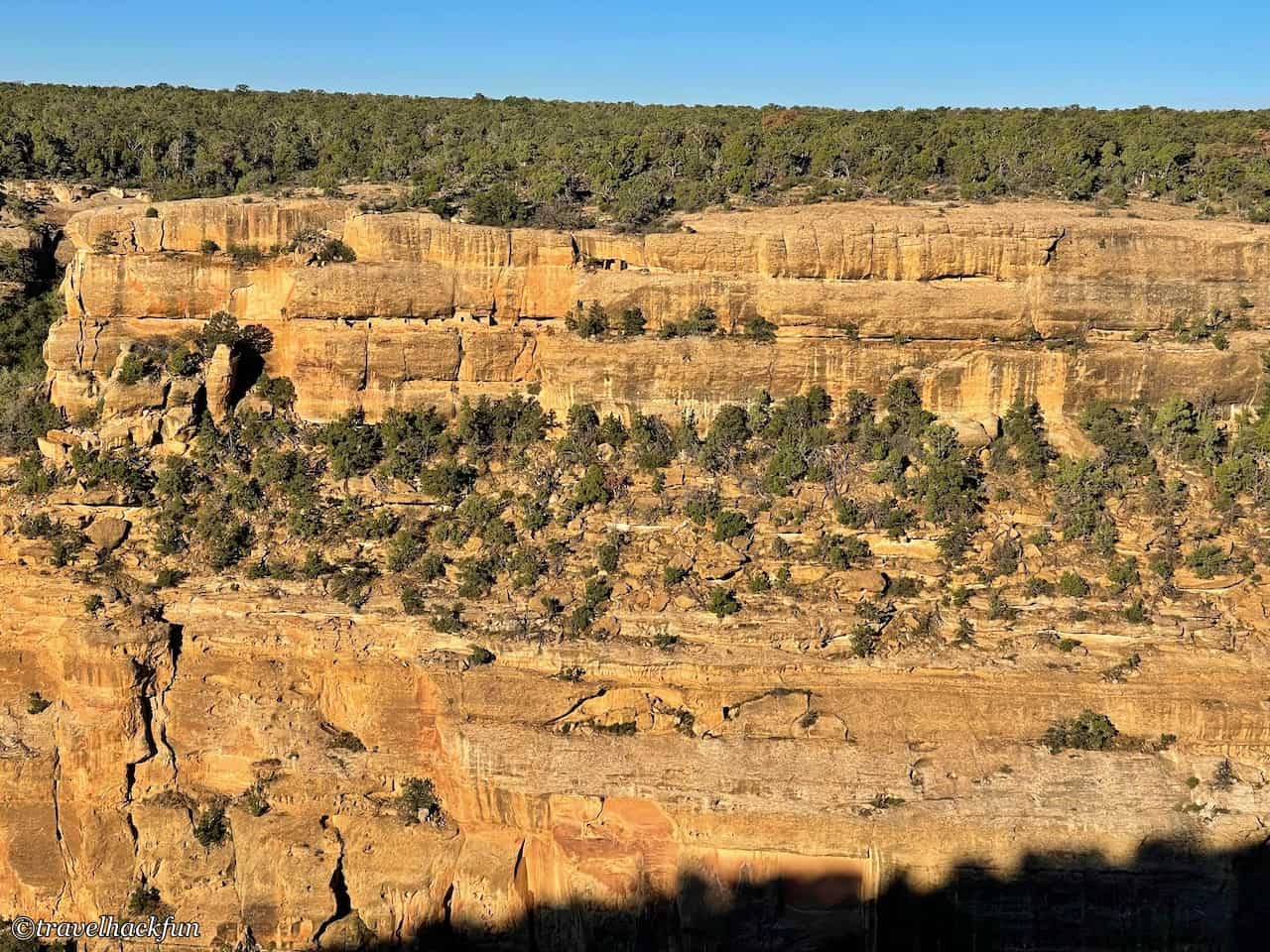
Balcony House
Balcony House is a typical mid-sized, two-story Cliff Dwelling with 38 rooms and 2 Kivas, dating back to approximately 1180-1270 AD. Currently, it can only be visited by reservation, and due to the need to protect this historical site, tour group sizes and availability are limited. If you're interested, I recommend making reservations well in advance.
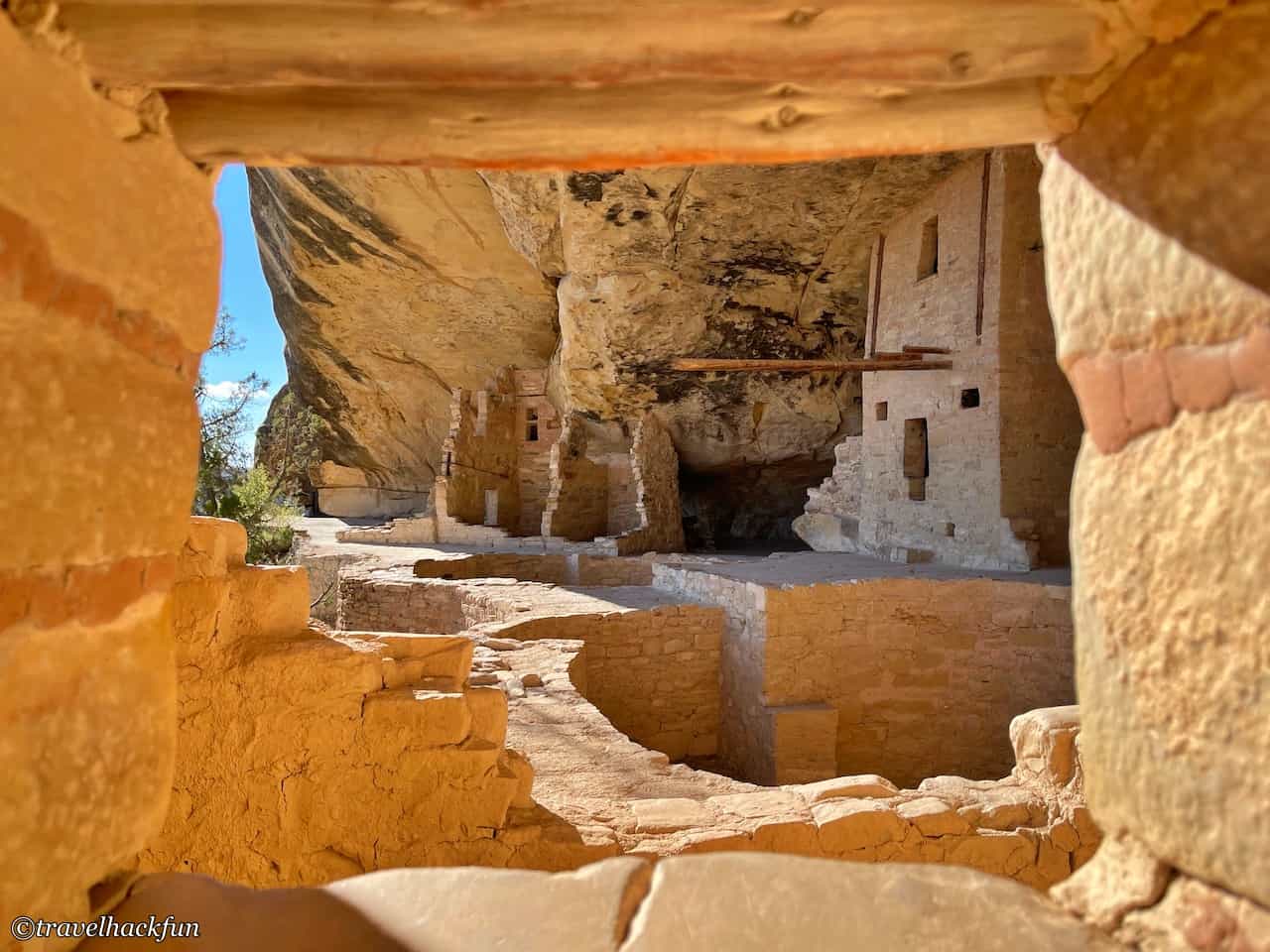
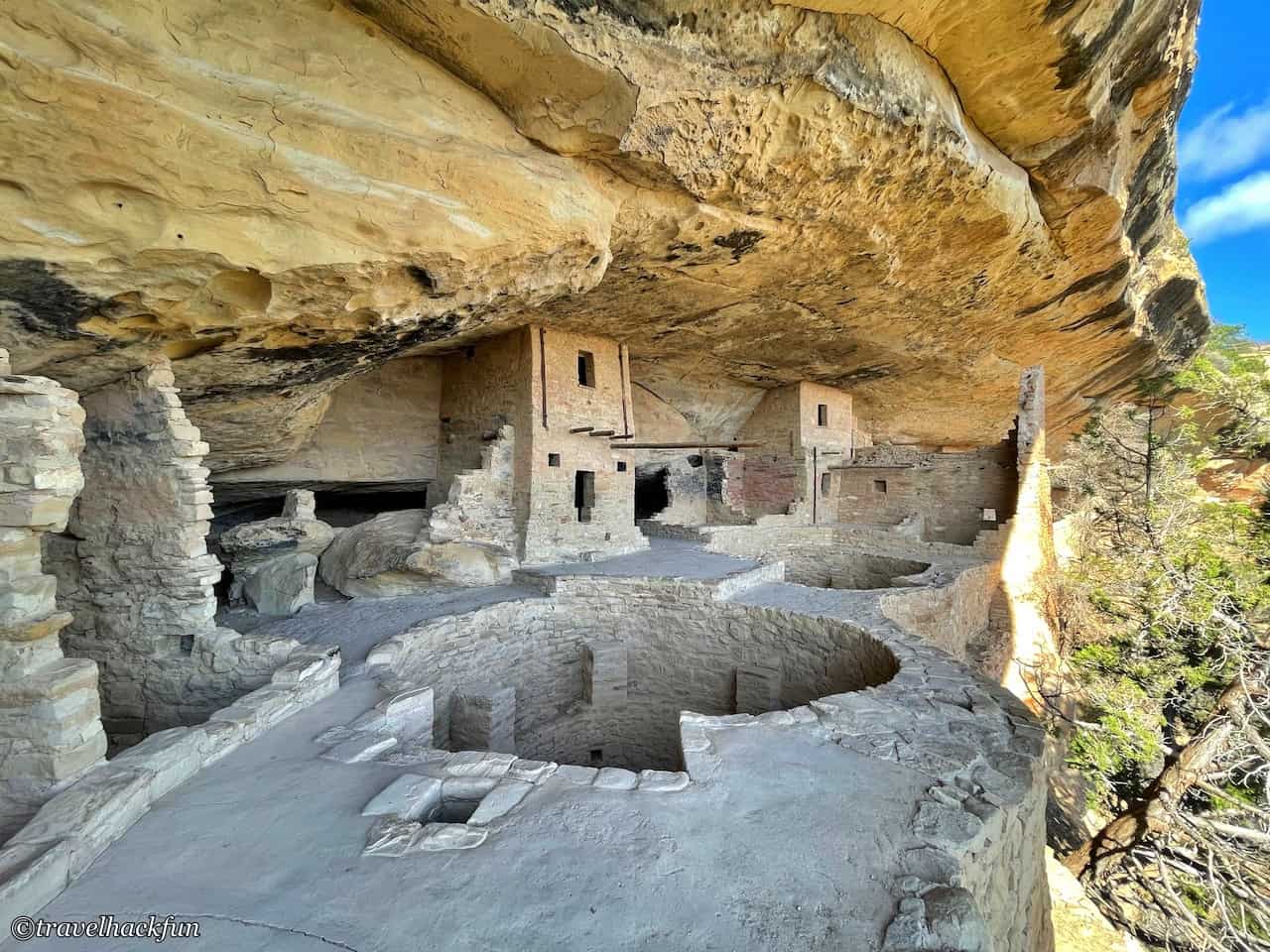
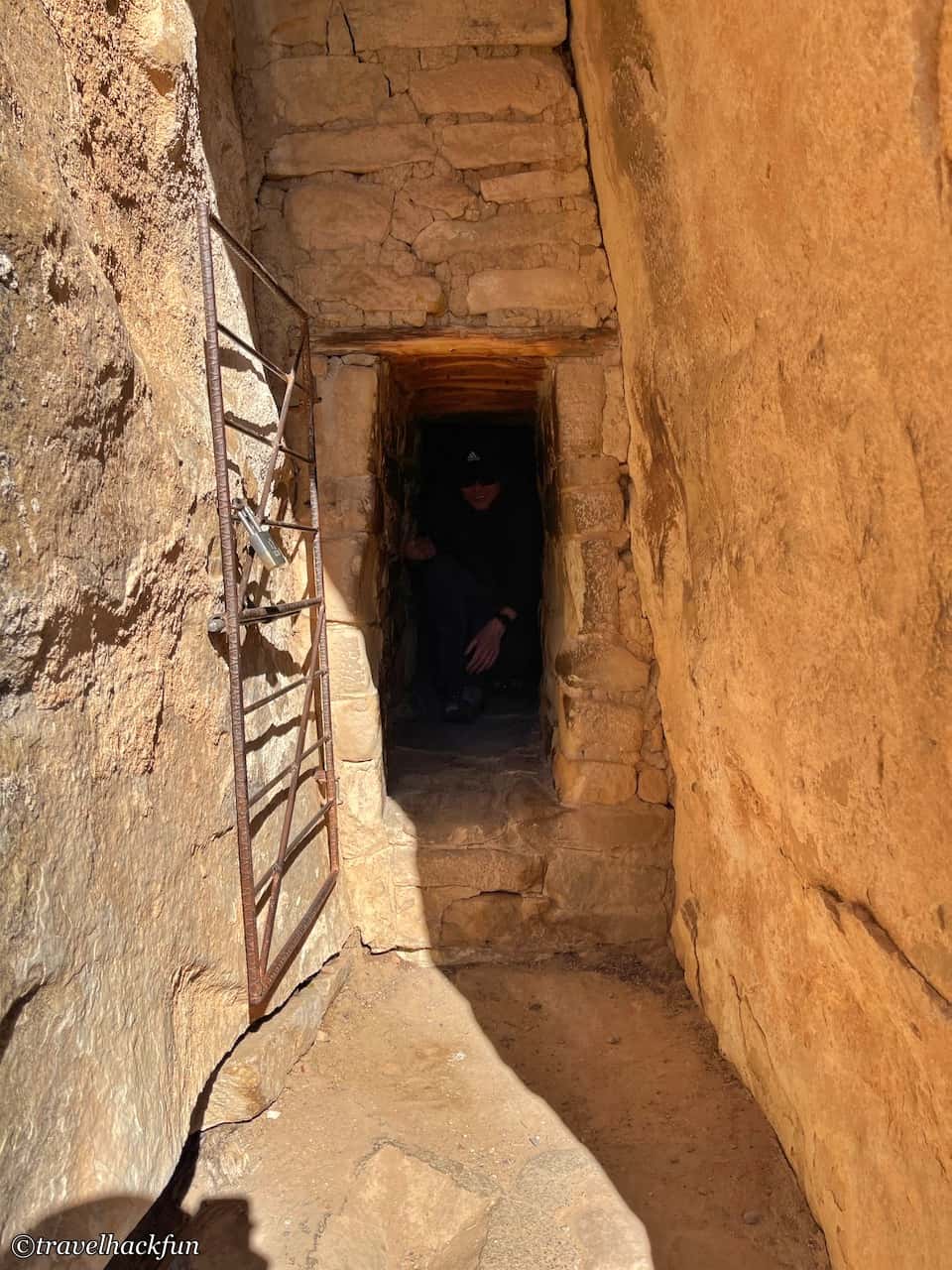
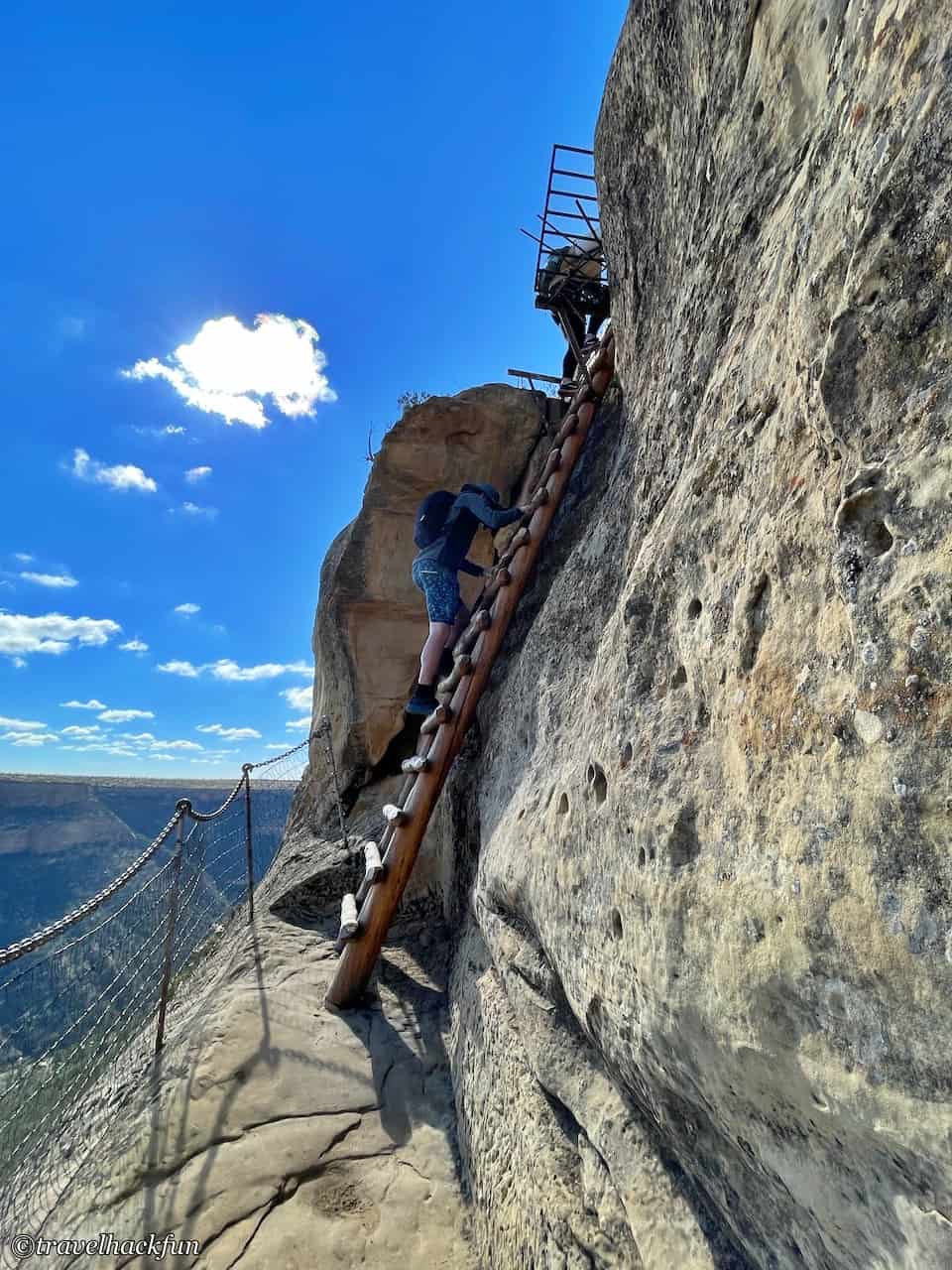
Soda Canyon Overlook Trail
The Soda Canyon Overlook Trail, just north of Balcony House, is a moderately scenic 1.2-mile round-trip trail that leads to three viewpoints and offers panoramic views of Soda Canyon and the Balcony House in the distance.
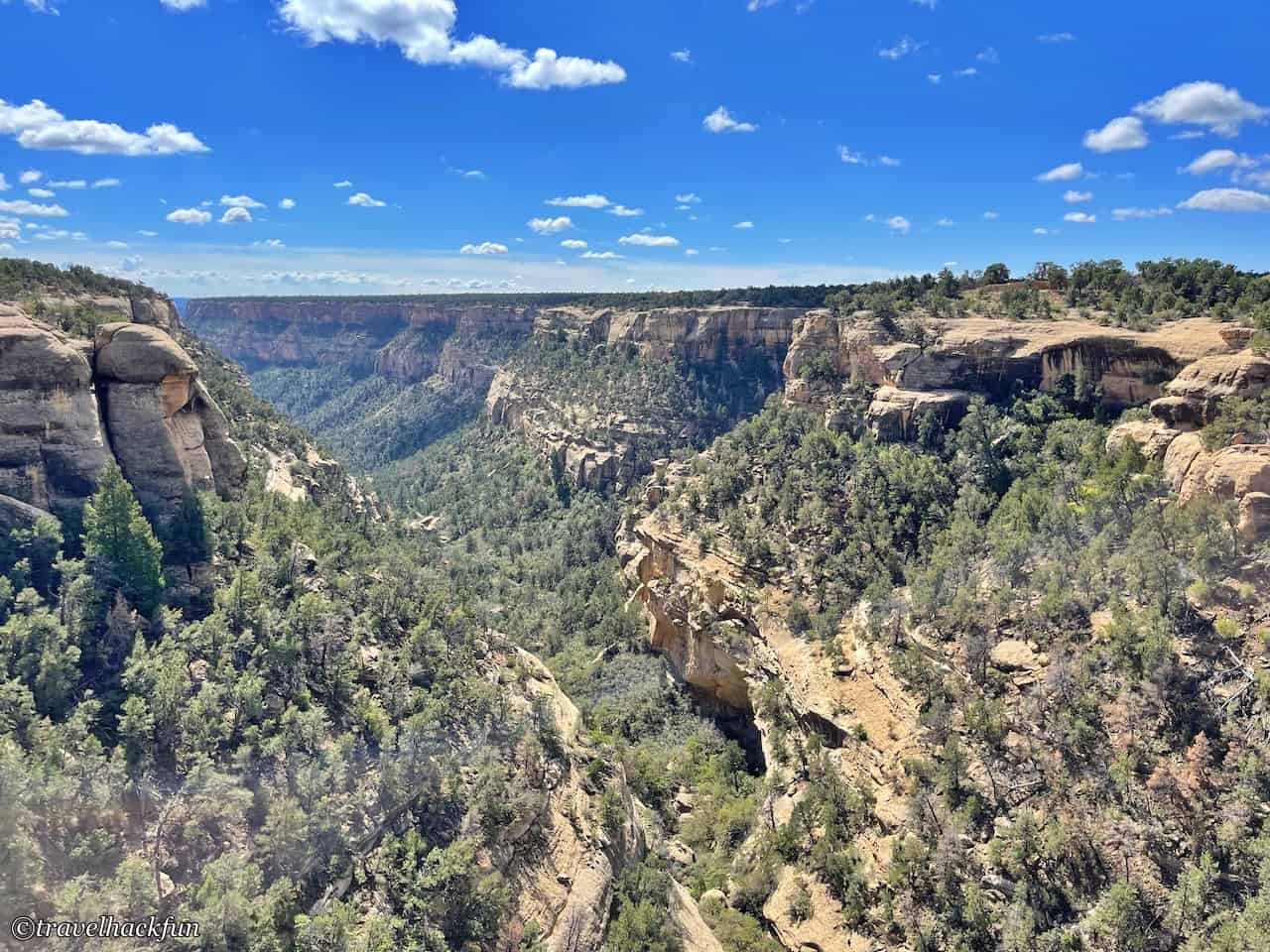

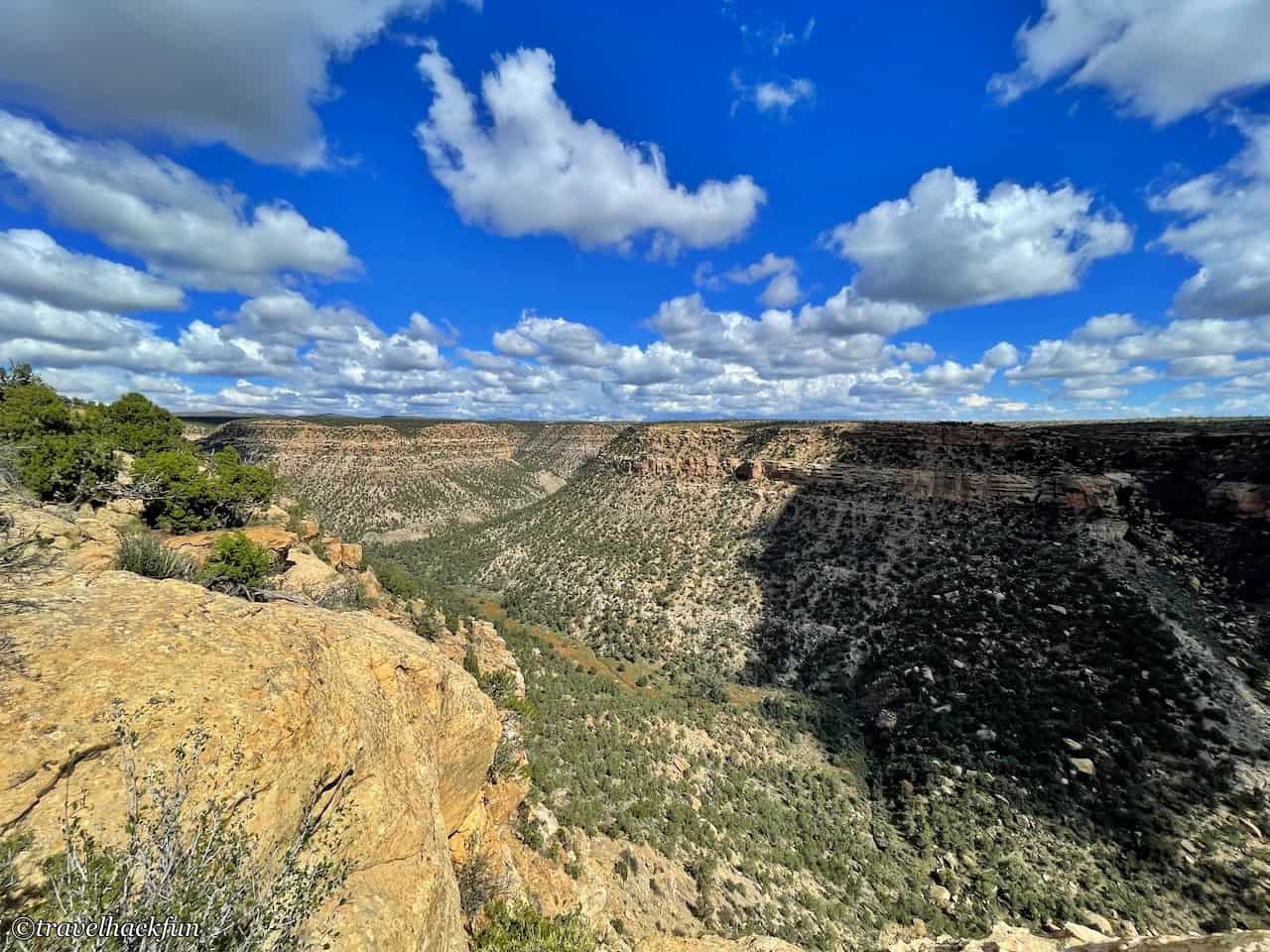
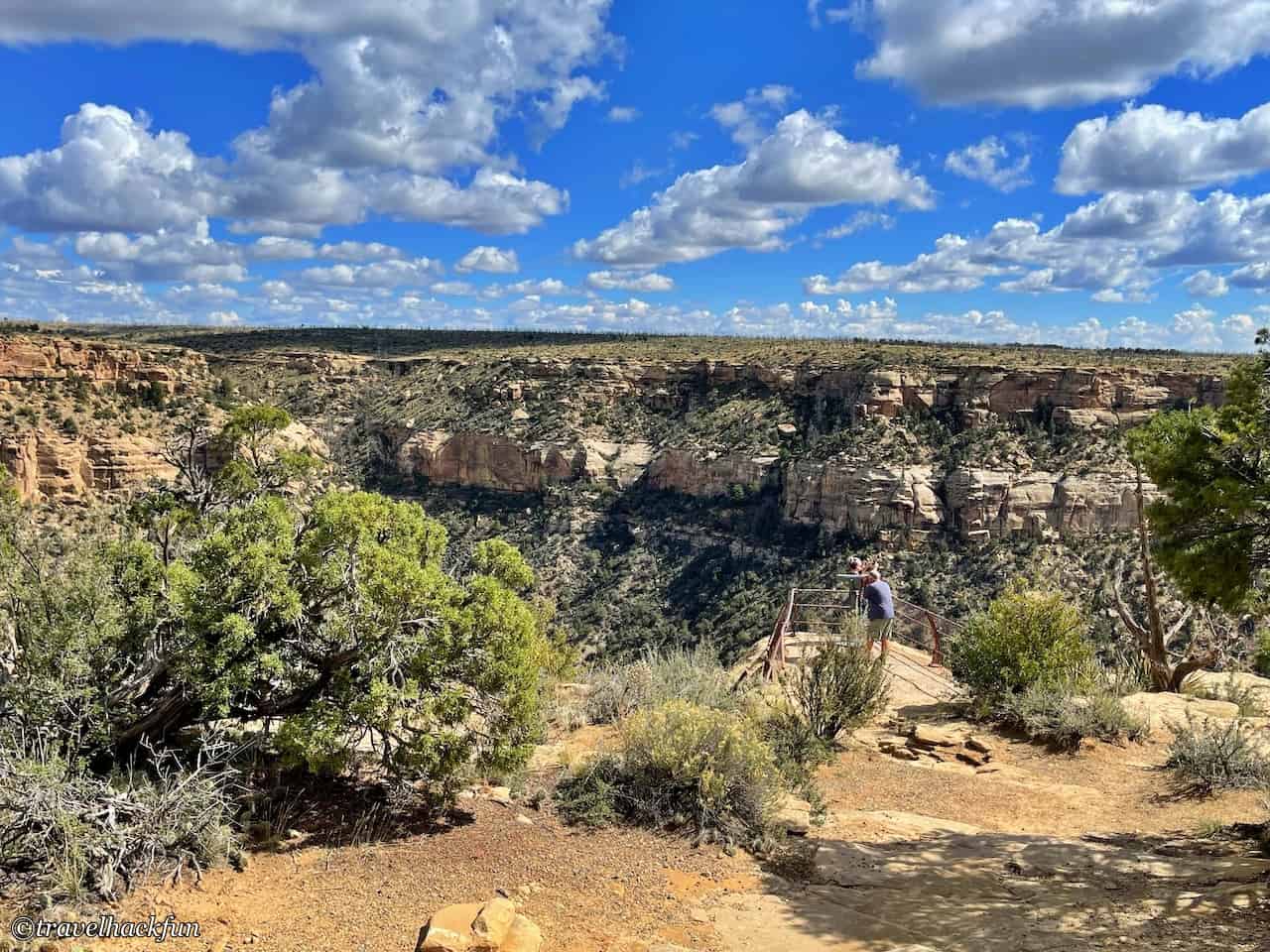
Wetherill Mesa Area
Window To The Past
The name "Window To The Past" sounds quite romantic, but it's actually just a roadside viewpoint. This viewpoint offers a breathtaking view of the entire Montezuma Valley. From above, Montezuma Valley appear as a flat landscape, but in reality, it encompasses several Ancient Puebloan ruins, including Canyons of the Ancient National Monument and Hovenweep National Monument. These Ancient Puebloans, who lived in different places, were all in contact with each other.
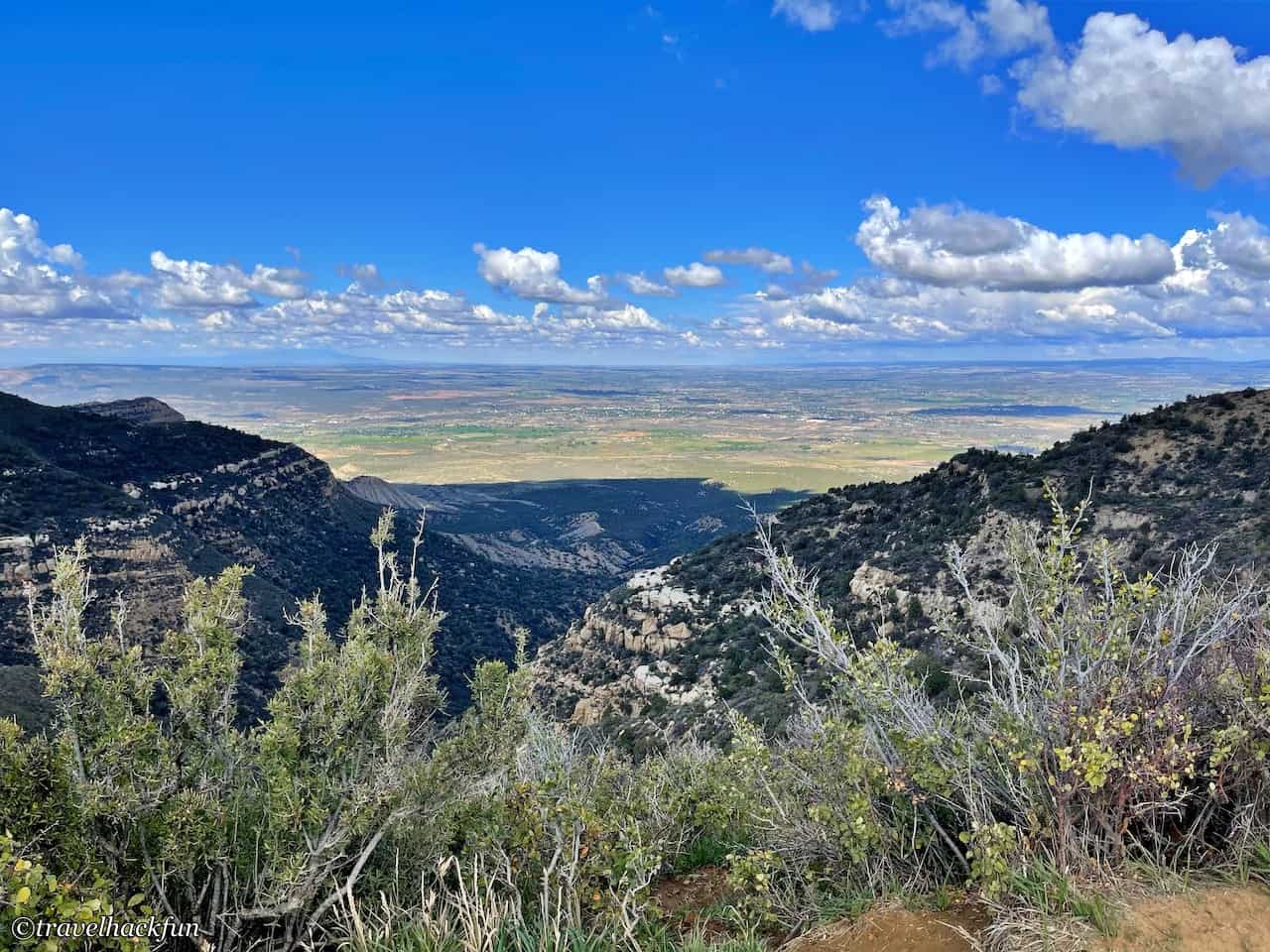
Long House
Undoubtedly the most important attraction in the Wetherill Mesa Area, Long House is a relatively large Cliff Dwelling that once housed over 100 residents.
Visiting Long House requires participation in a guided tour. The tour begins at the midpoint of the Long House Loop trail. It is a fairly long trail spanning approximately 5 miles. Along the way, you'll encounter several different archaeological sites, including the Long House and Badger House Communities. For detailed information about the tour, please refer to my other post here.
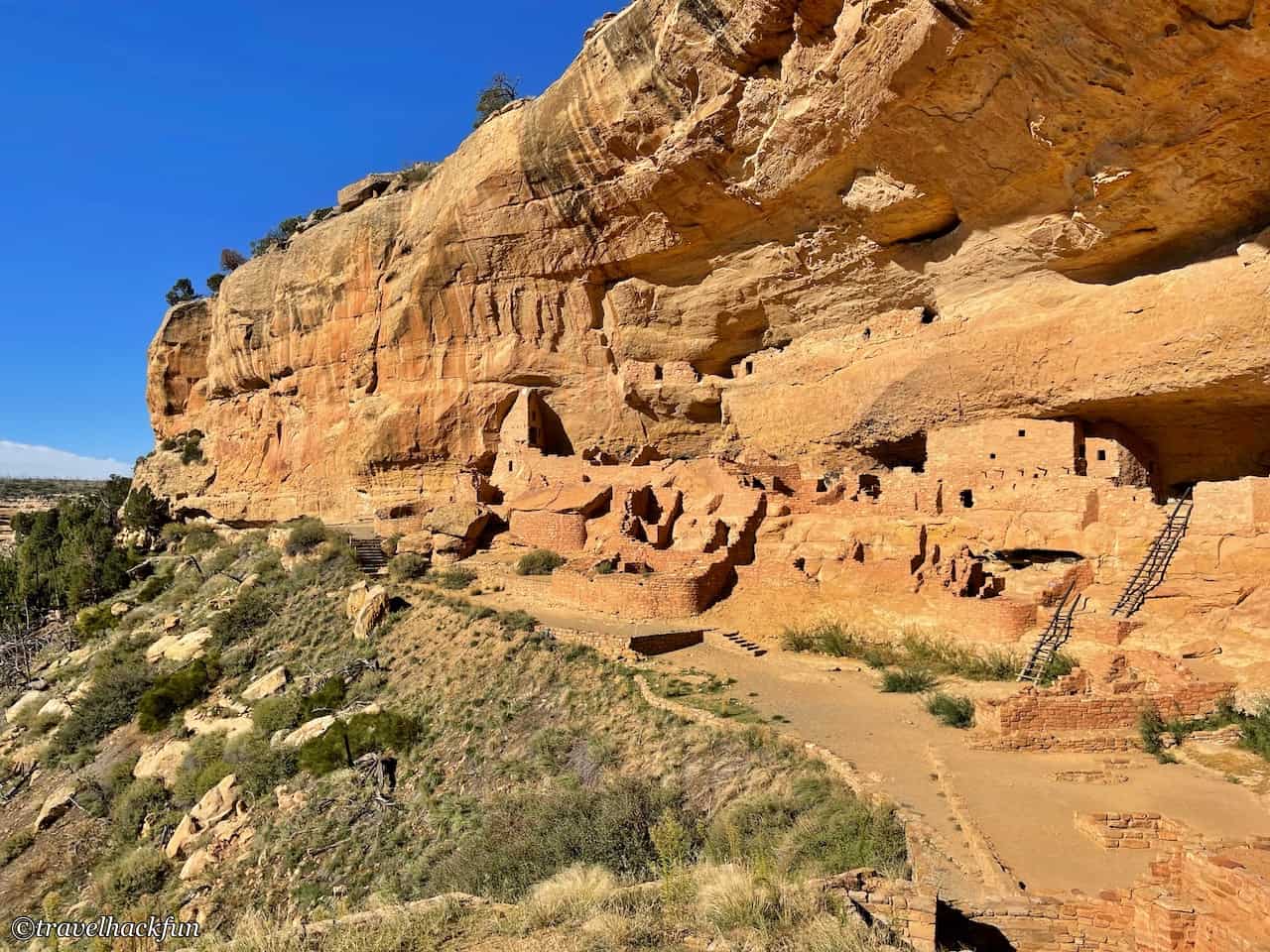
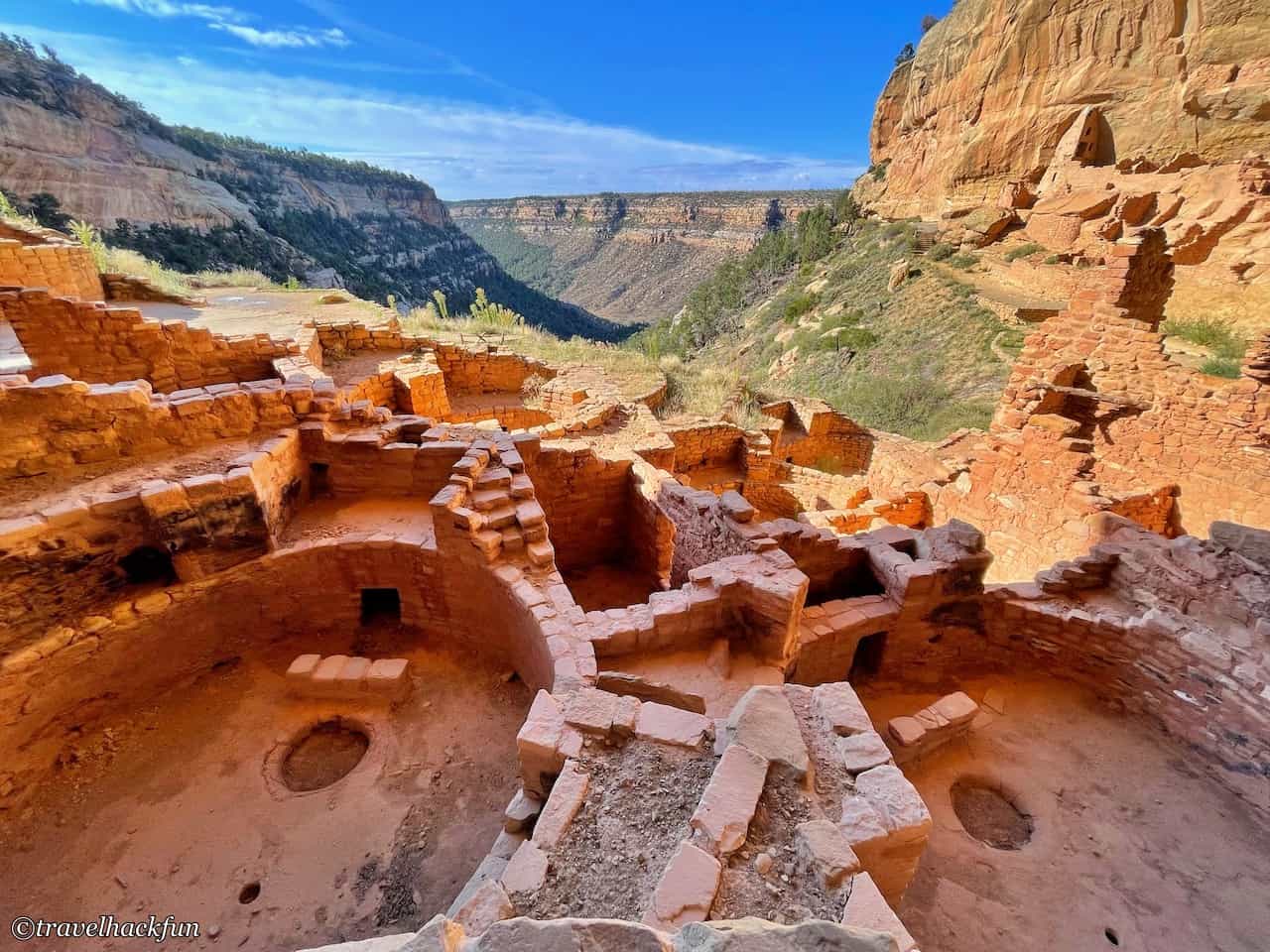
Badger House Communities
The Badger House Communities consist of a series of relatively early archaeological sites. The round-trip hike from the starting point of the Long House Loop to explore these sites is approximately 2.5 miles.
Some of these sites are still undergoing excavation, and the actual number of sites is far greater than what we can see. There are four sites available for visitors to explore. These sites are relatively small in scale, dating from around 650 AD to 1250 AD. The four sites are the Modified Basketmaker Pithouse, Developmental Pueblo Village, Two Raven House, and Badger House.
Since these sites spanning different time periods, we can observe the progression of architectural techniques. The earliest rooms appear quite simple, resembling caves in the ground, but they already exhibit early concepts of Kivas. In the later period, such as at Badger House, there are two Kivas, and there's a clear structure connecting the external buildings.
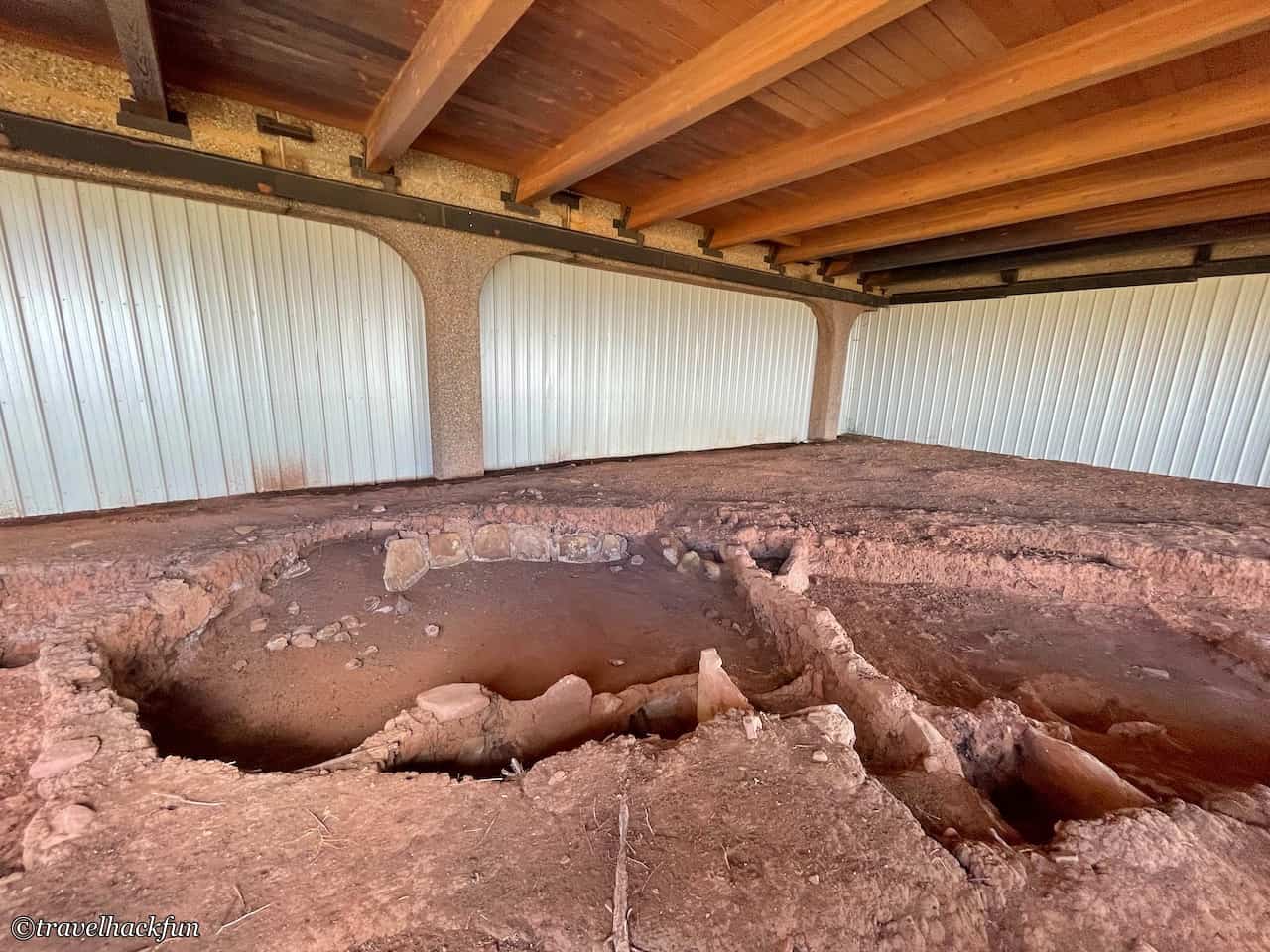

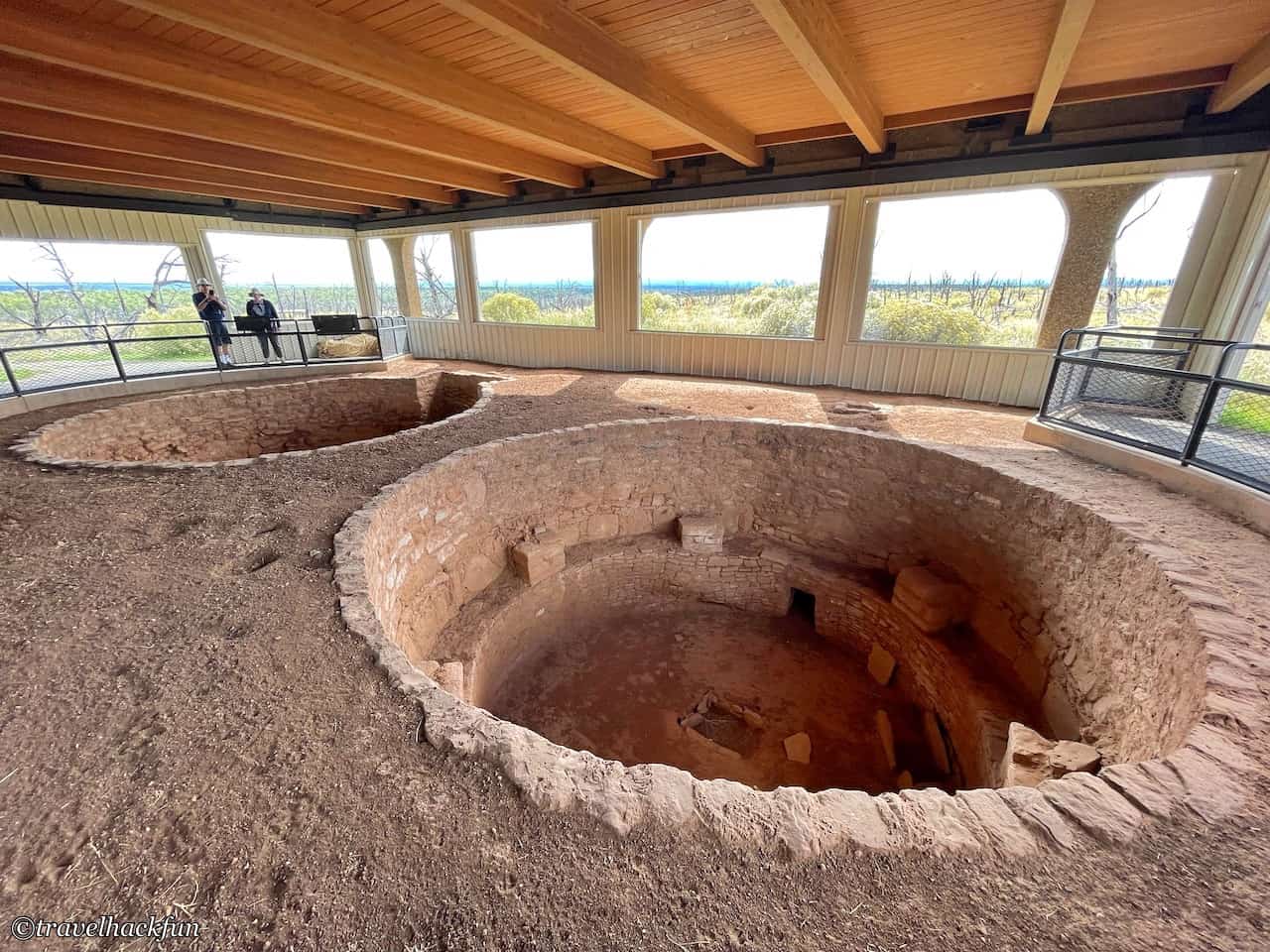

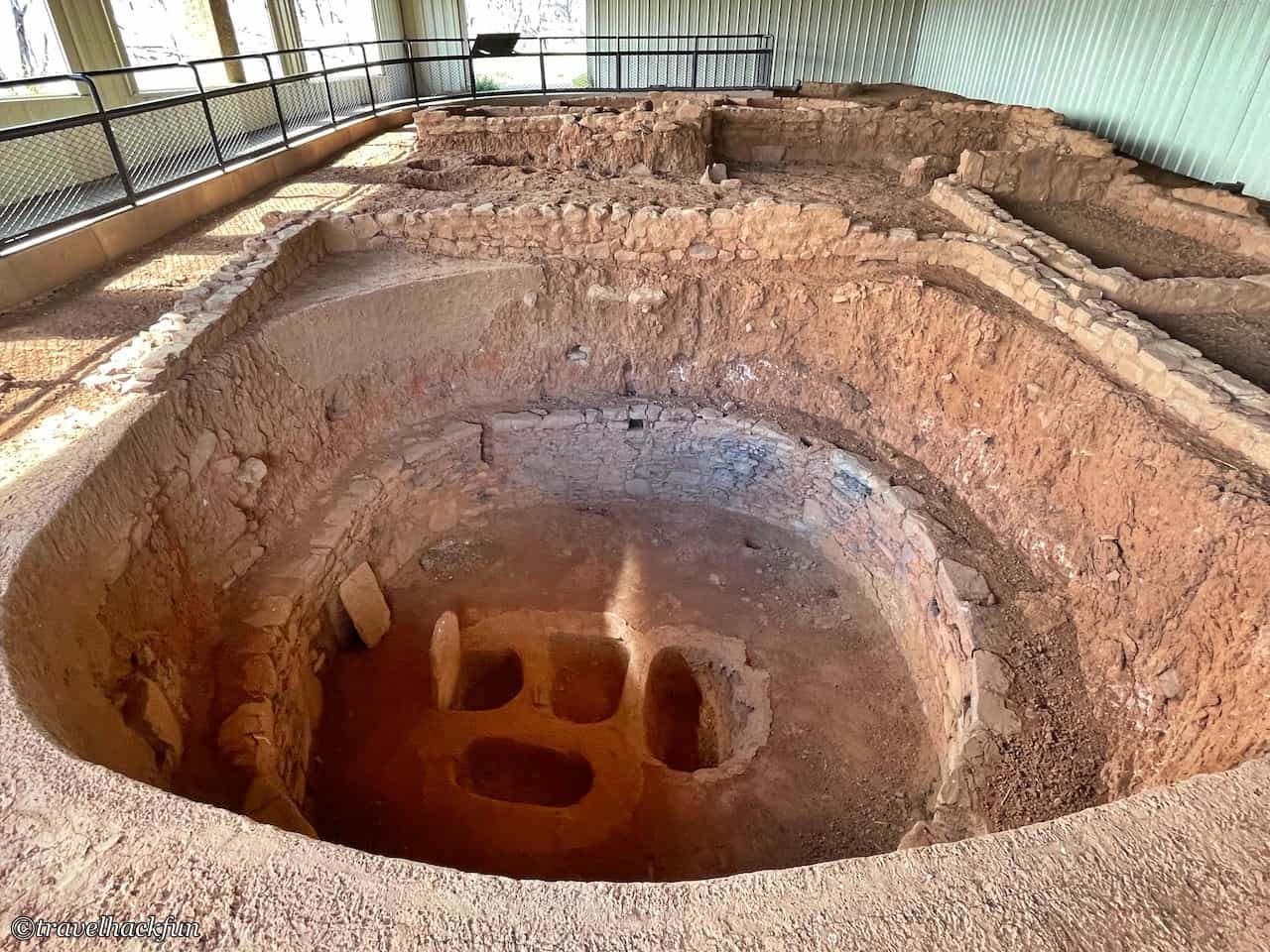
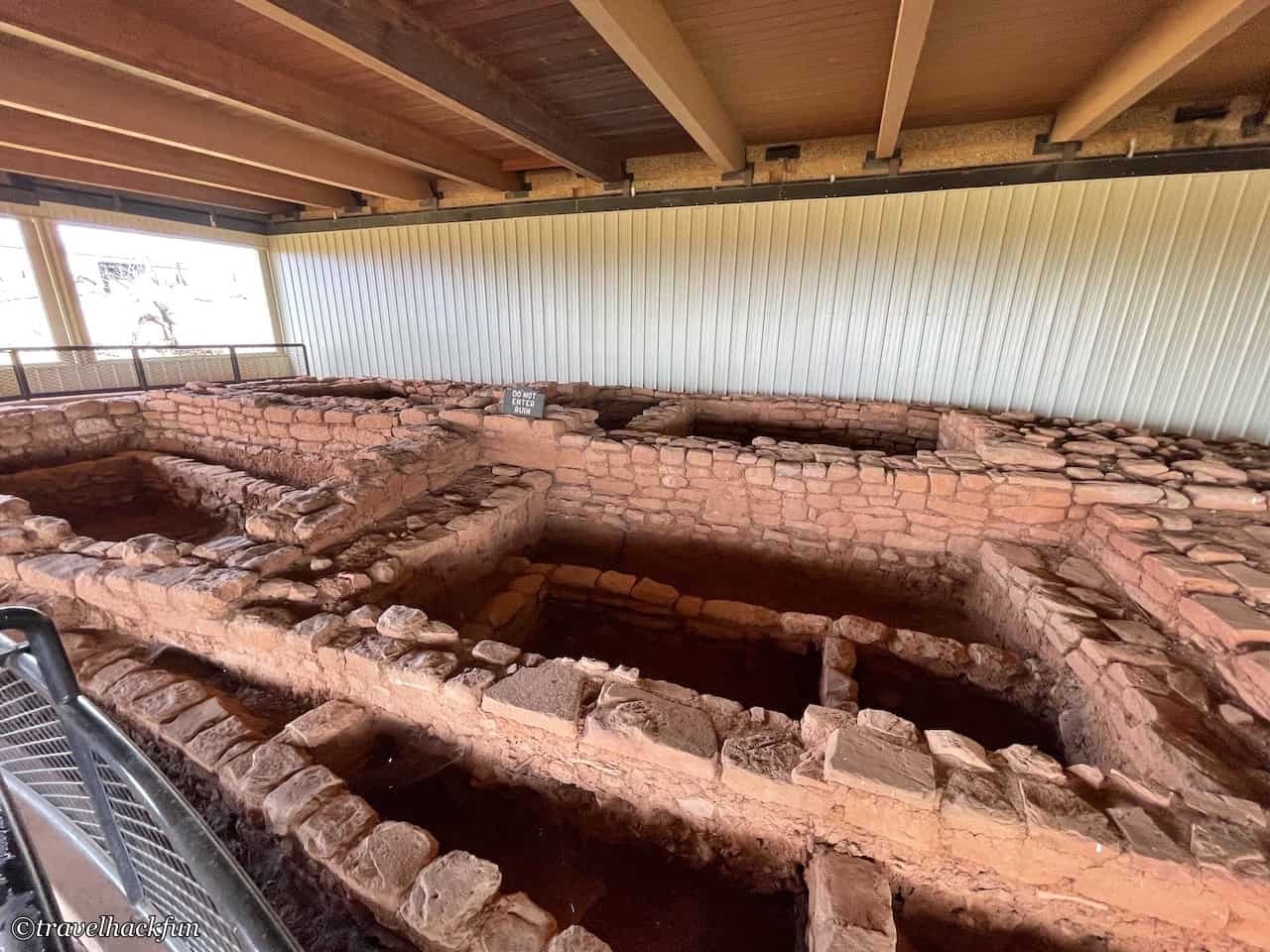

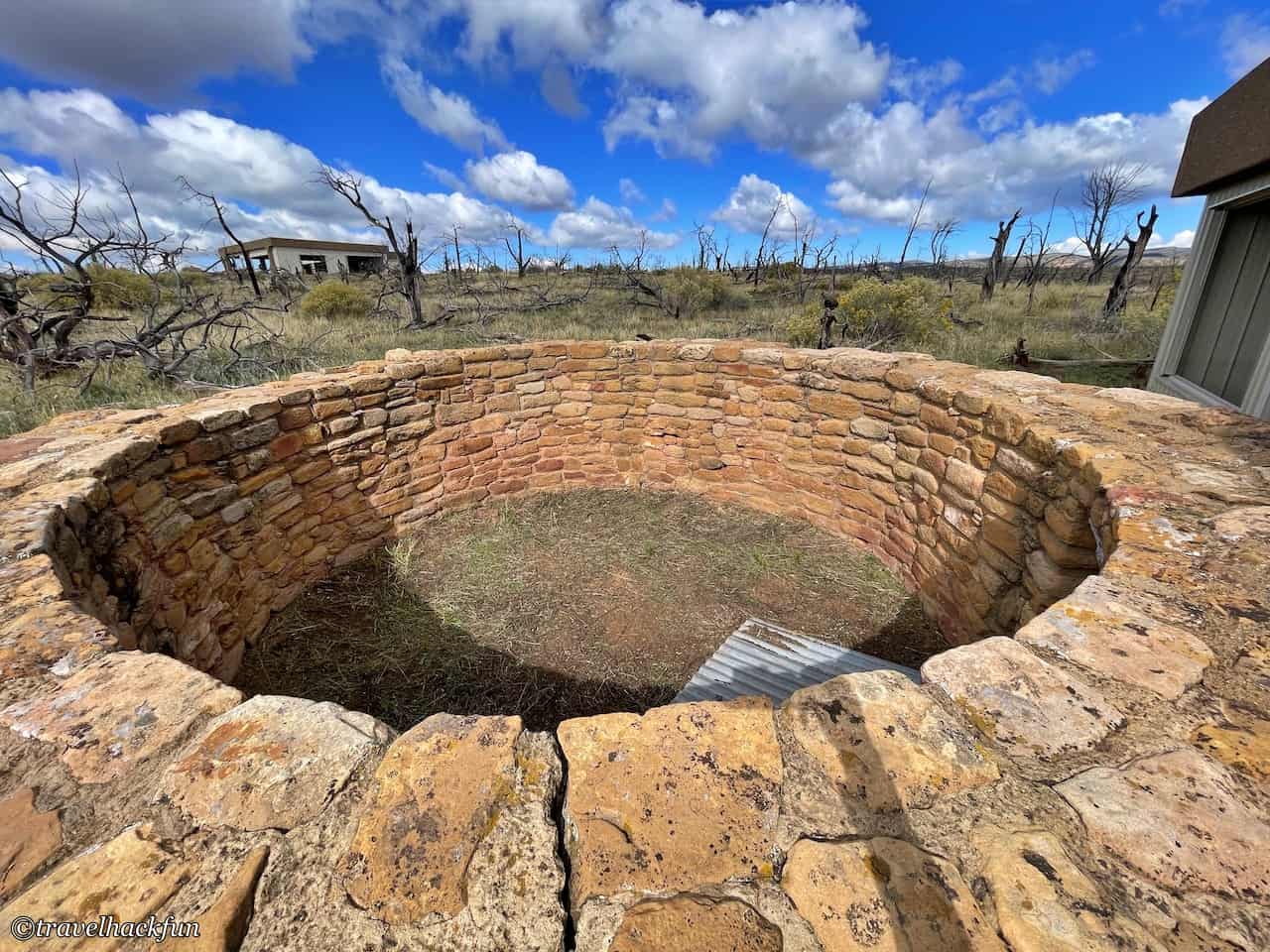
Step House
Step House is one of the few medium-sized Cliff Dwelling sites that visitors can explore without a guided tour. The one-way hike down to Step House is approximately 1 mile. While it doesn't involve too many ladders, be prepared for some steep sections as the trail descends directly down the cliff. The scenery along the trail is stunning. Since it's a self-guided tour, there are detailed exhibits and explanations that make it well worth the visit.
What makes Step House unique is that it features two distinct archaeological periods in the same location. One is the early Basketmaker III era pithouse community dating back to around 600 AD, and the other is the later Pueblo III masonry pueblo from after 1200 AD. At Step House, the early Basketmaker III remains were not impacted by the later Pueblo occupation. This allows visitors to simultaneously explore six Basketmaker III pithouses and the 27 rooms with three kivas from the Pueblo period at this site.


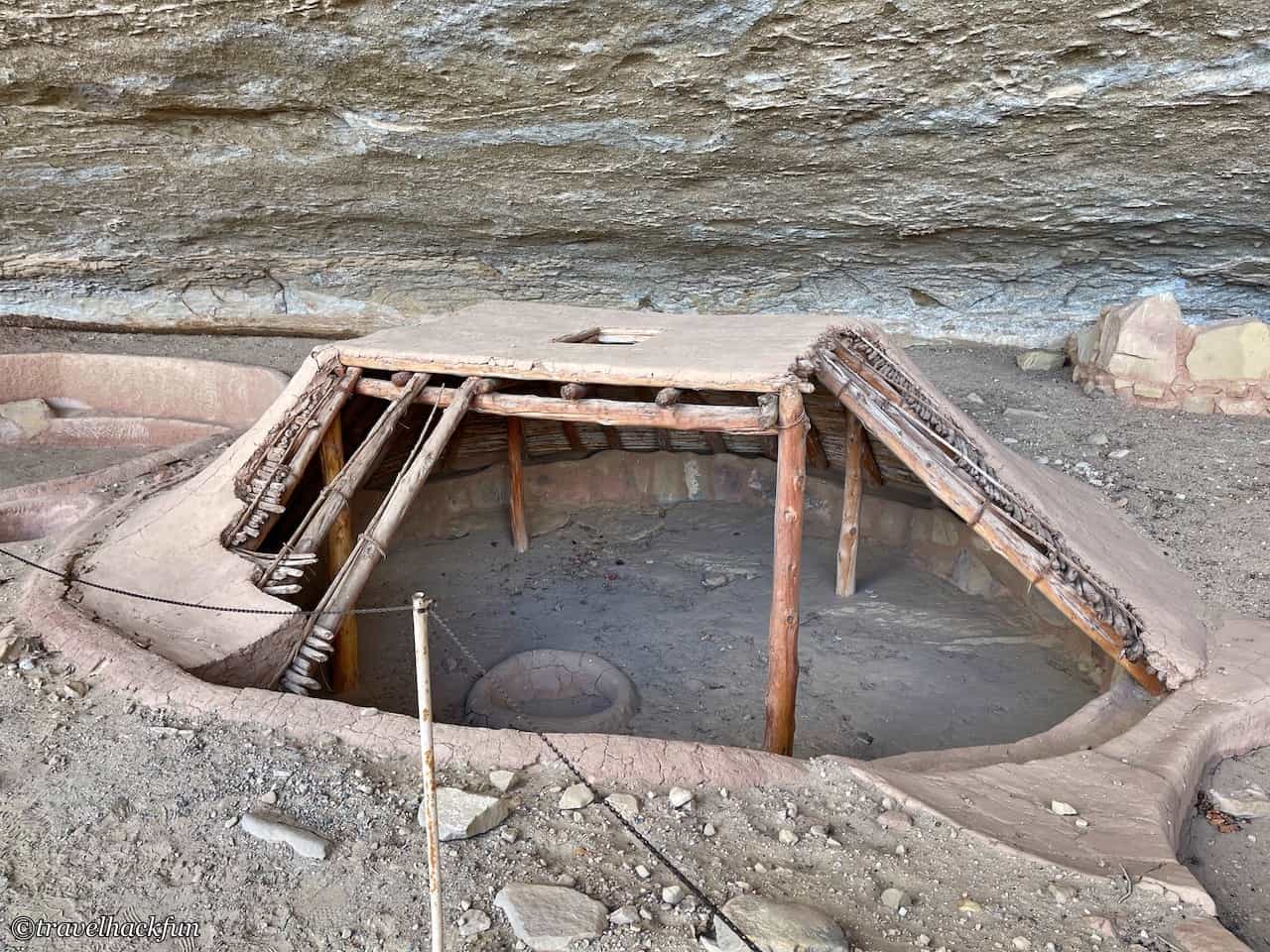
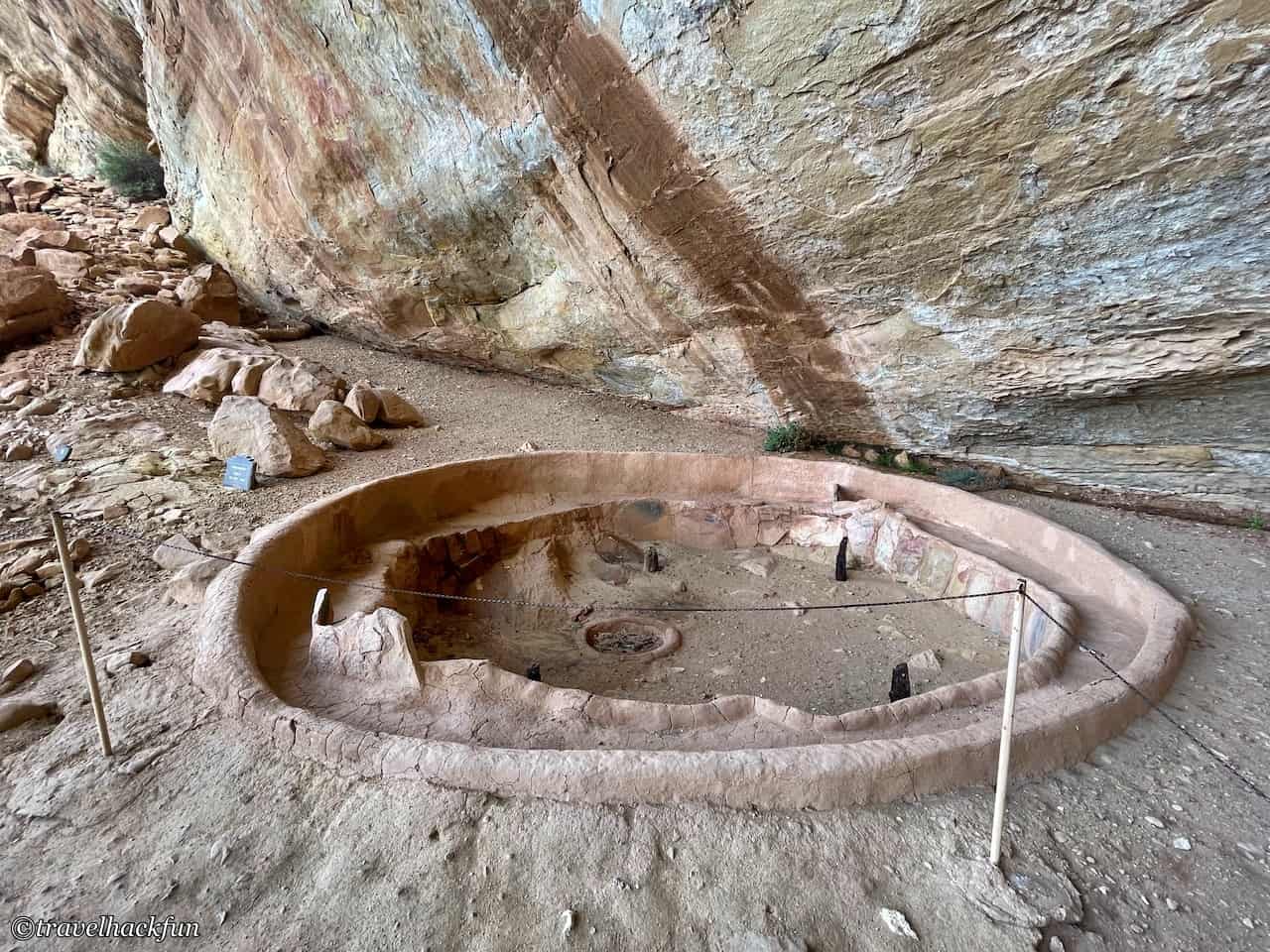
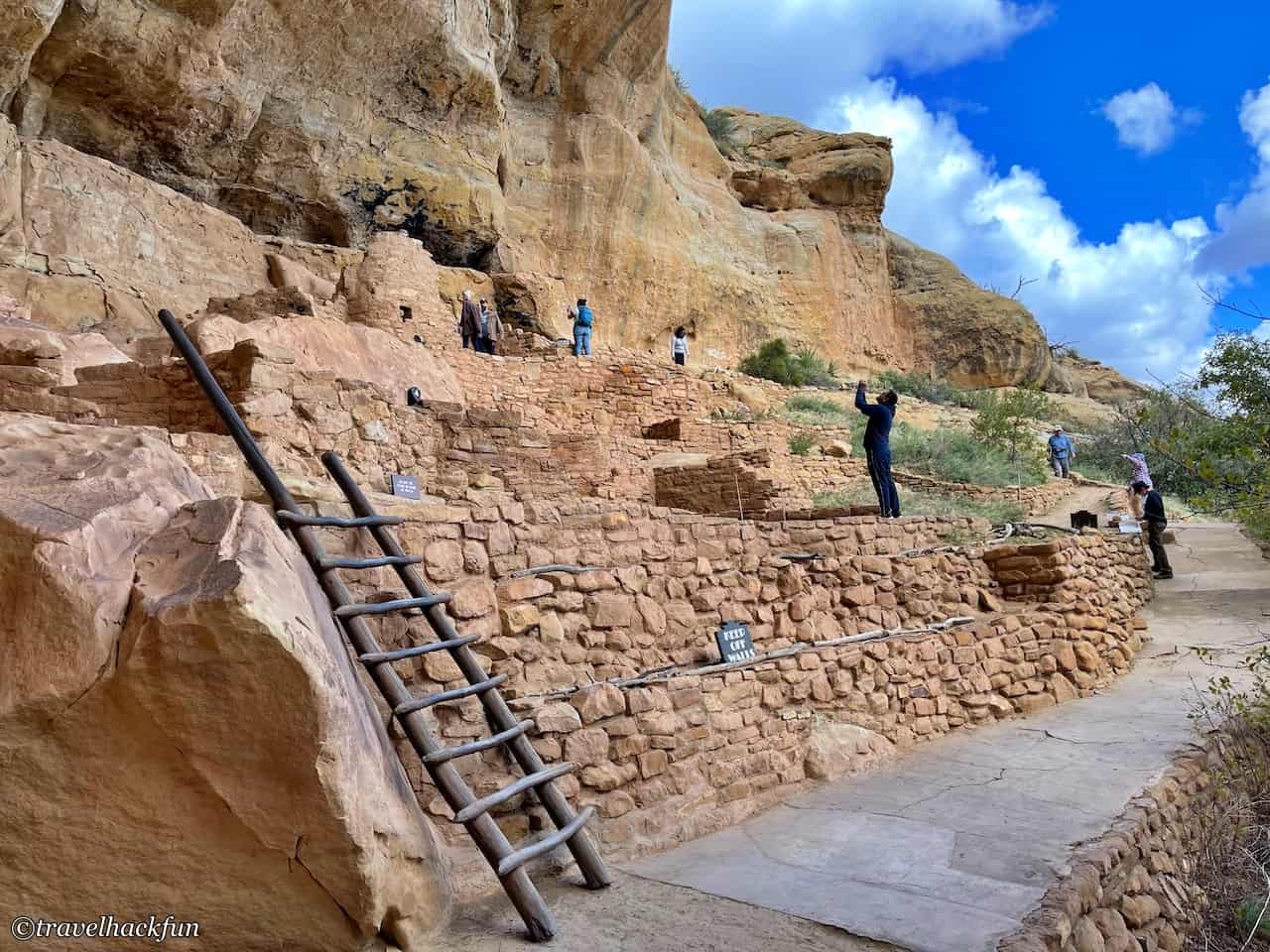
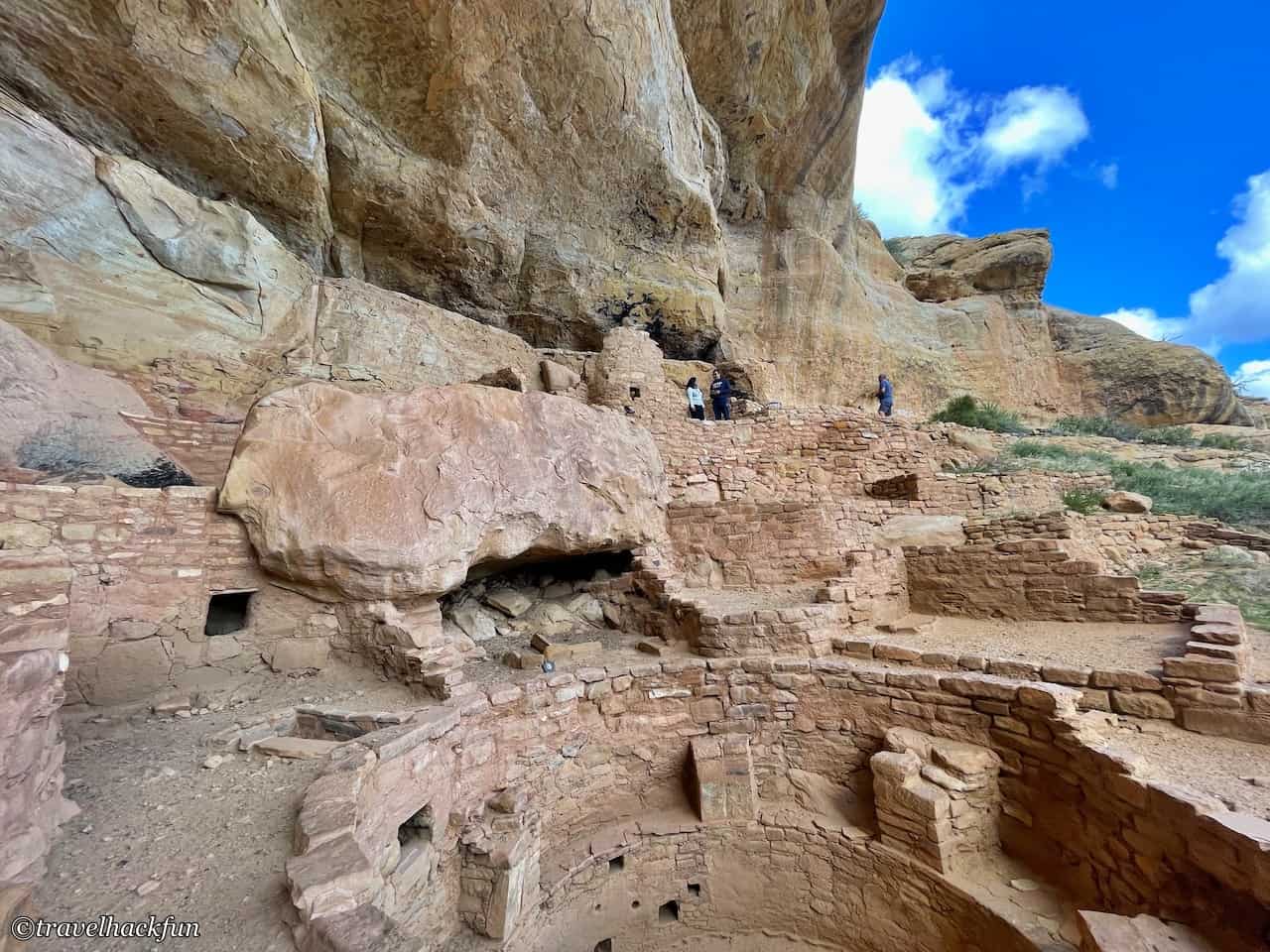


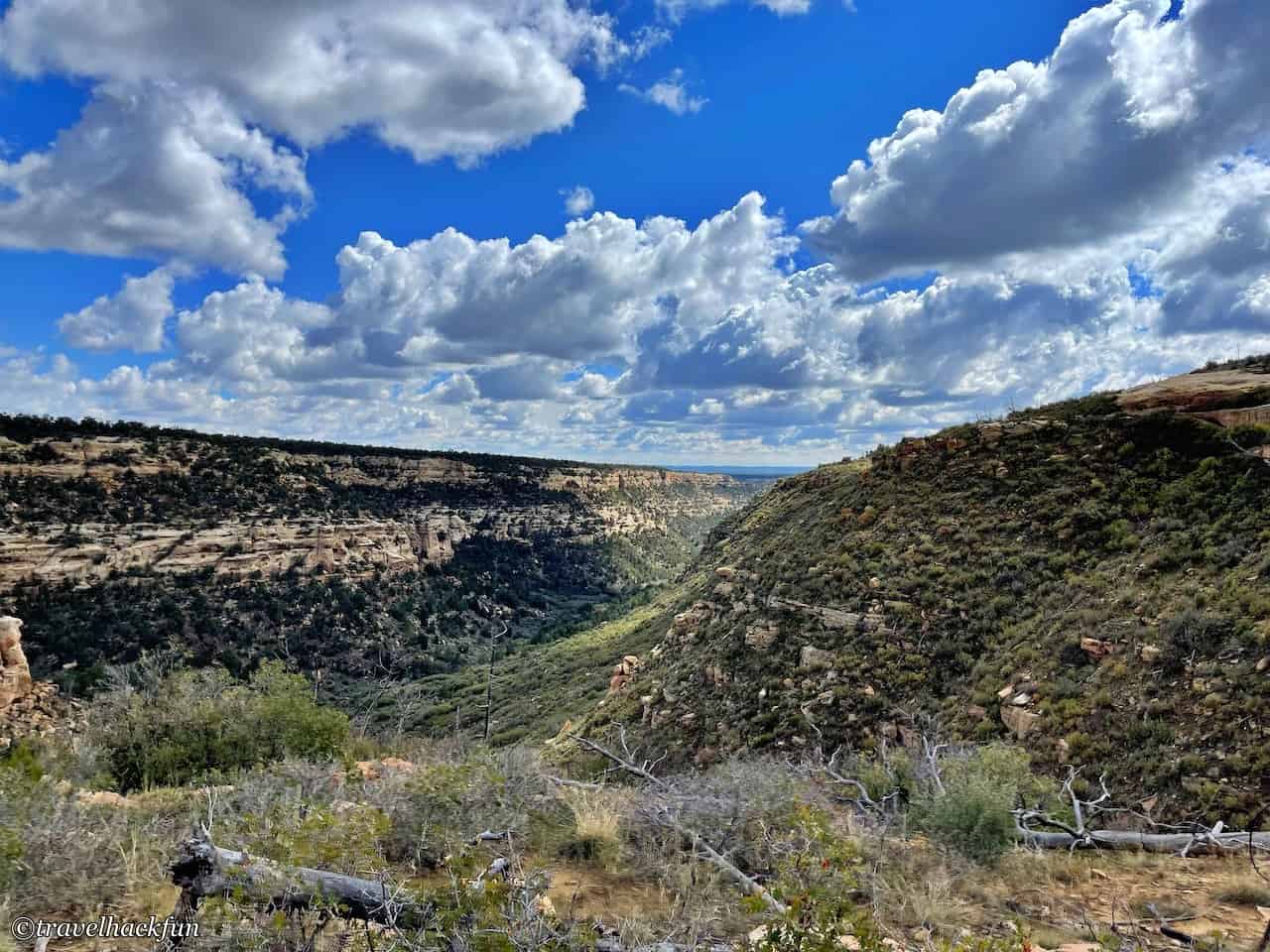
Mesa Verde National Park | Lodging & Dining Options
Far View Lodge
Far View Lodge is located in the core area of Mesa Verde National Park and serves as the primary accommodation option within the park, as well as the main restaurant. We stayed here for two nights and were quite satisfied with the room. If you plan to spend several days in Mesa Verde National Park, we highly recommend staying at this on-site lodge as it can save you a lot of commuting time.
Stay at Far View Lodge
Find a stay in Mesa Verde National Park:
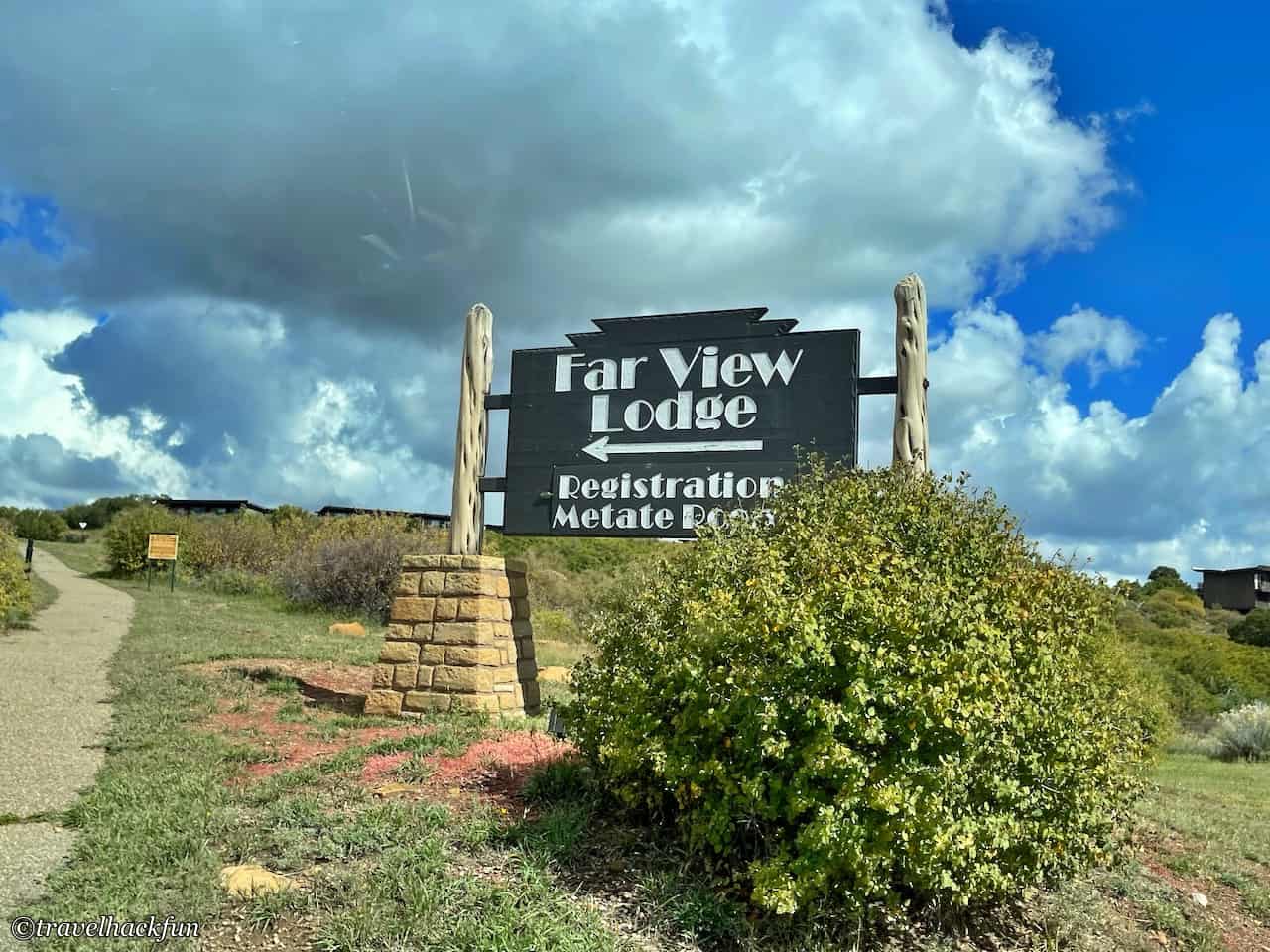
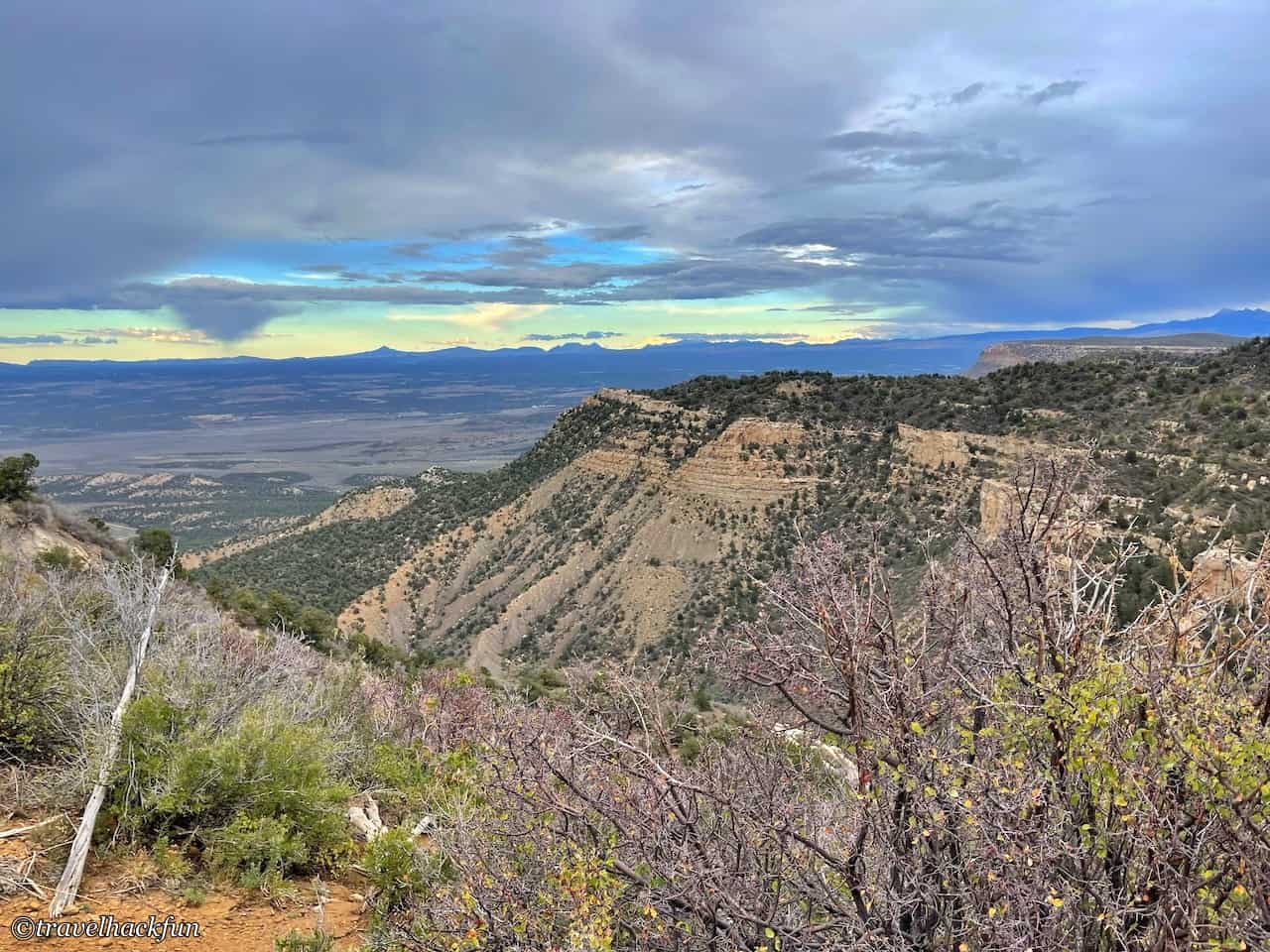
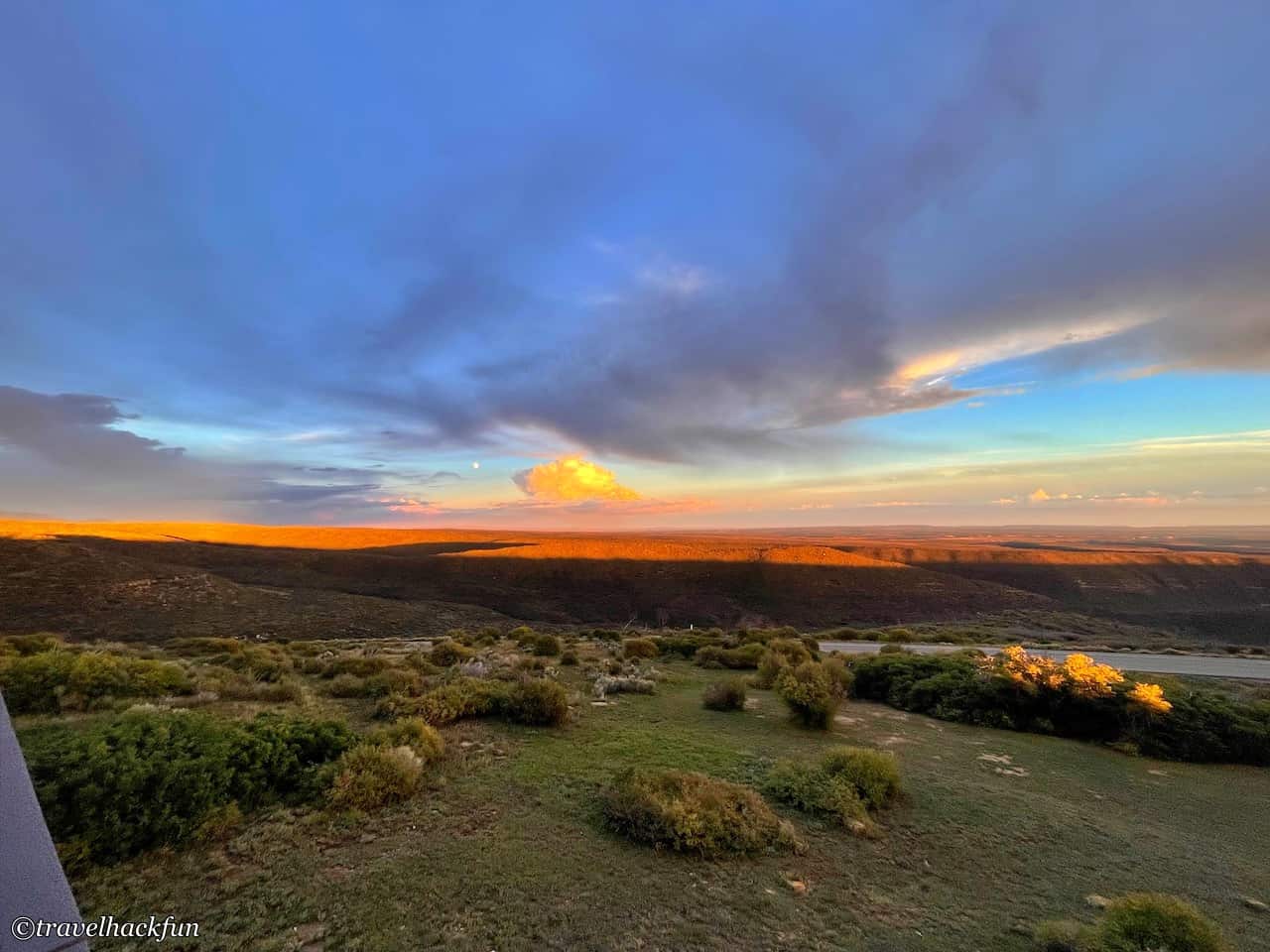
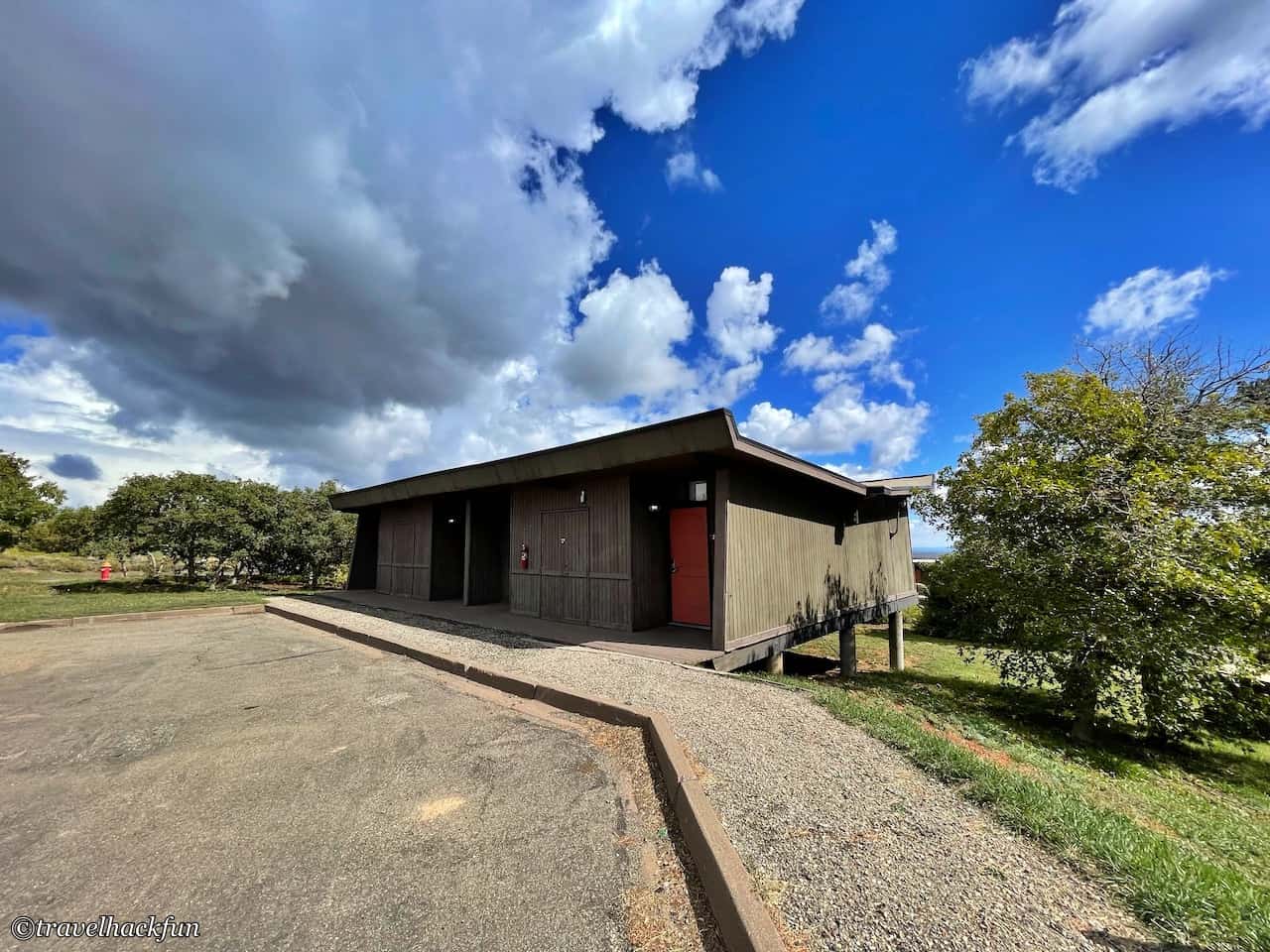
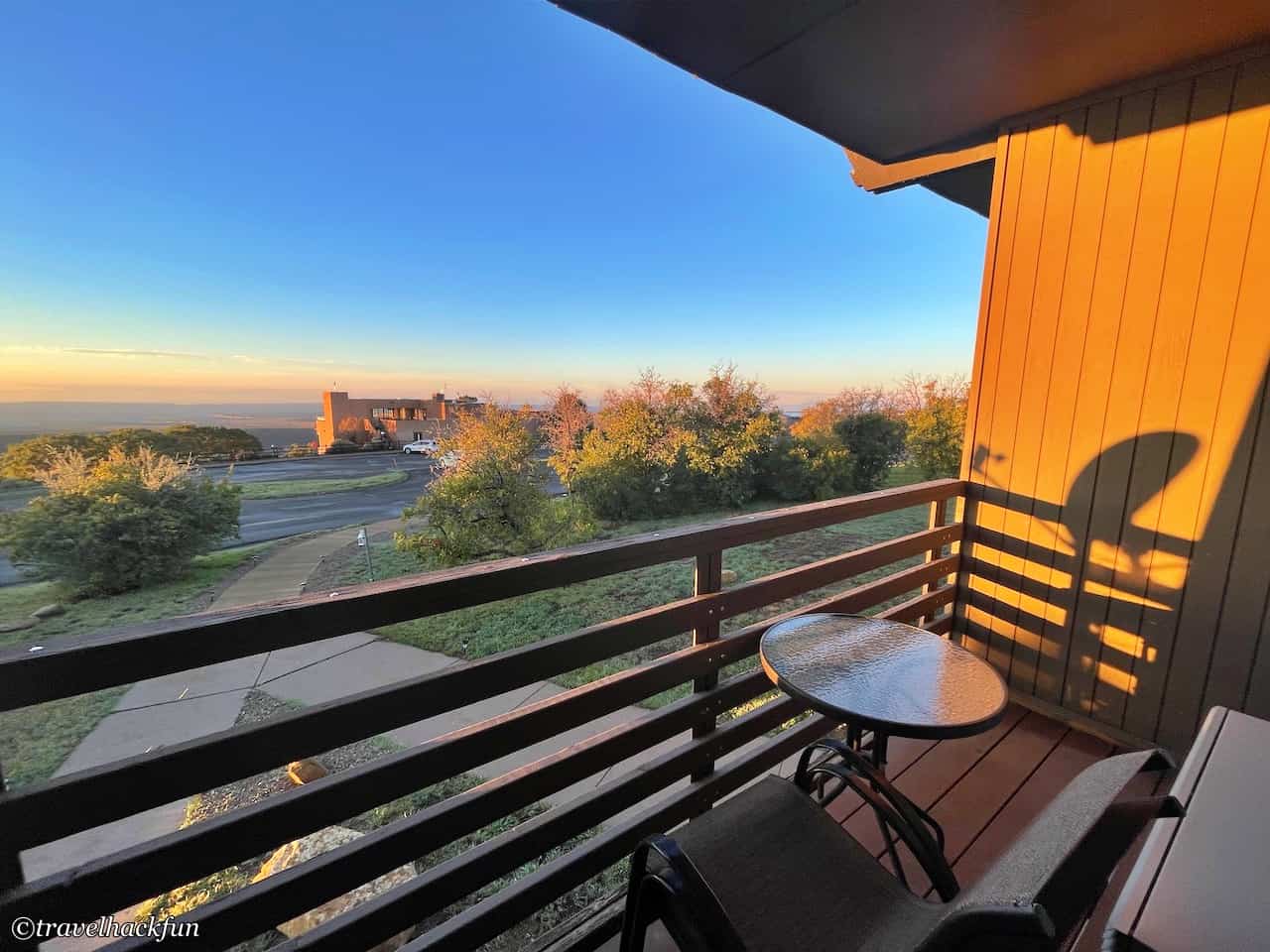
Restaurant: Far View Lounge
- Rating: ⭐️⭐️⭐️
- Price: $$
Among the dining options in Far View Lodge, the Far View Lounge offers a more budget-friendly casual dining experience, serving classics like hamburgers and sandwiches. The food quality is good. If you're lucky, you can even choose a window seat to enjoy the beautiful scenery. Additionally, since the Far View Lounge is located on the second floor, it's a great spot for watching the sunset.

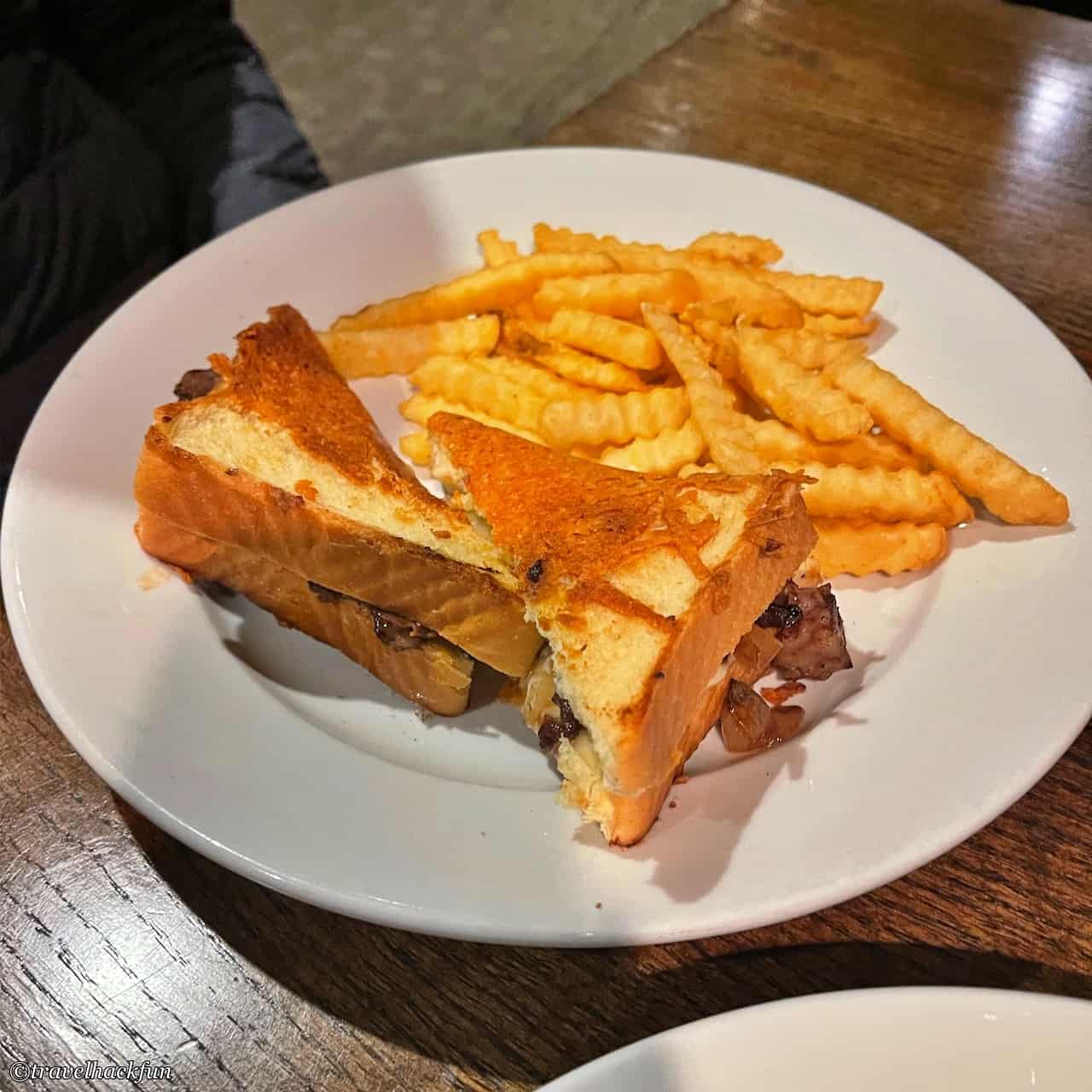
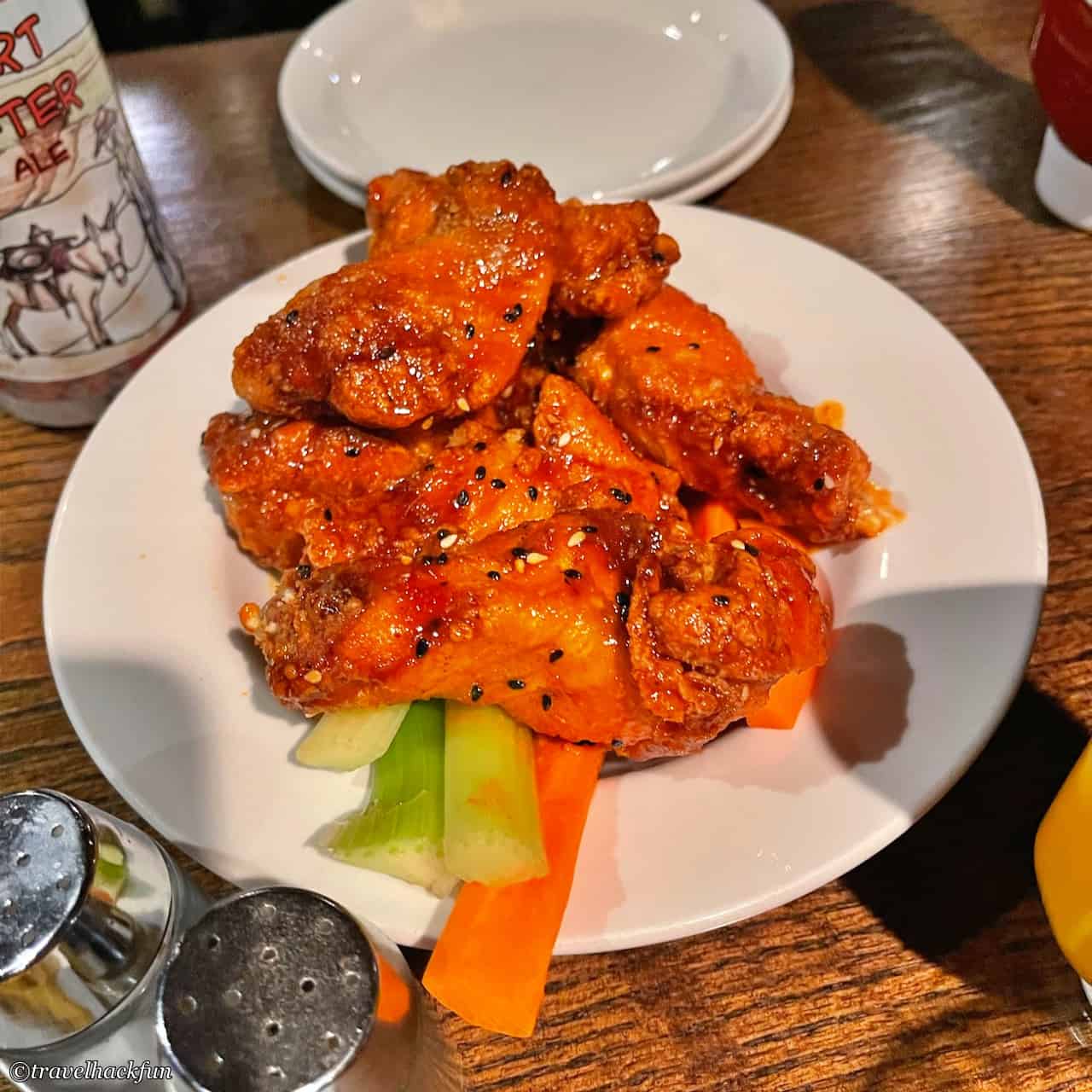
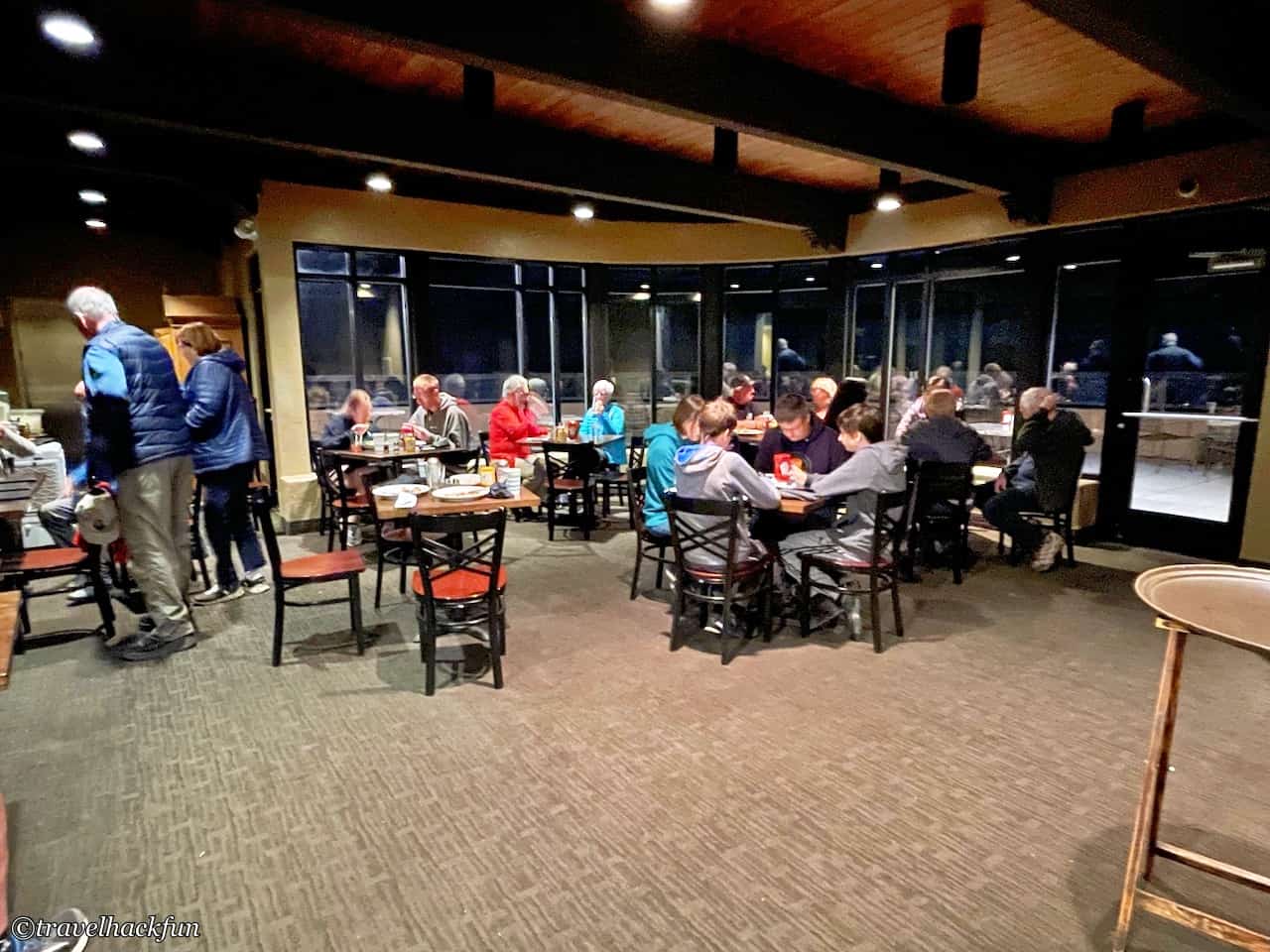
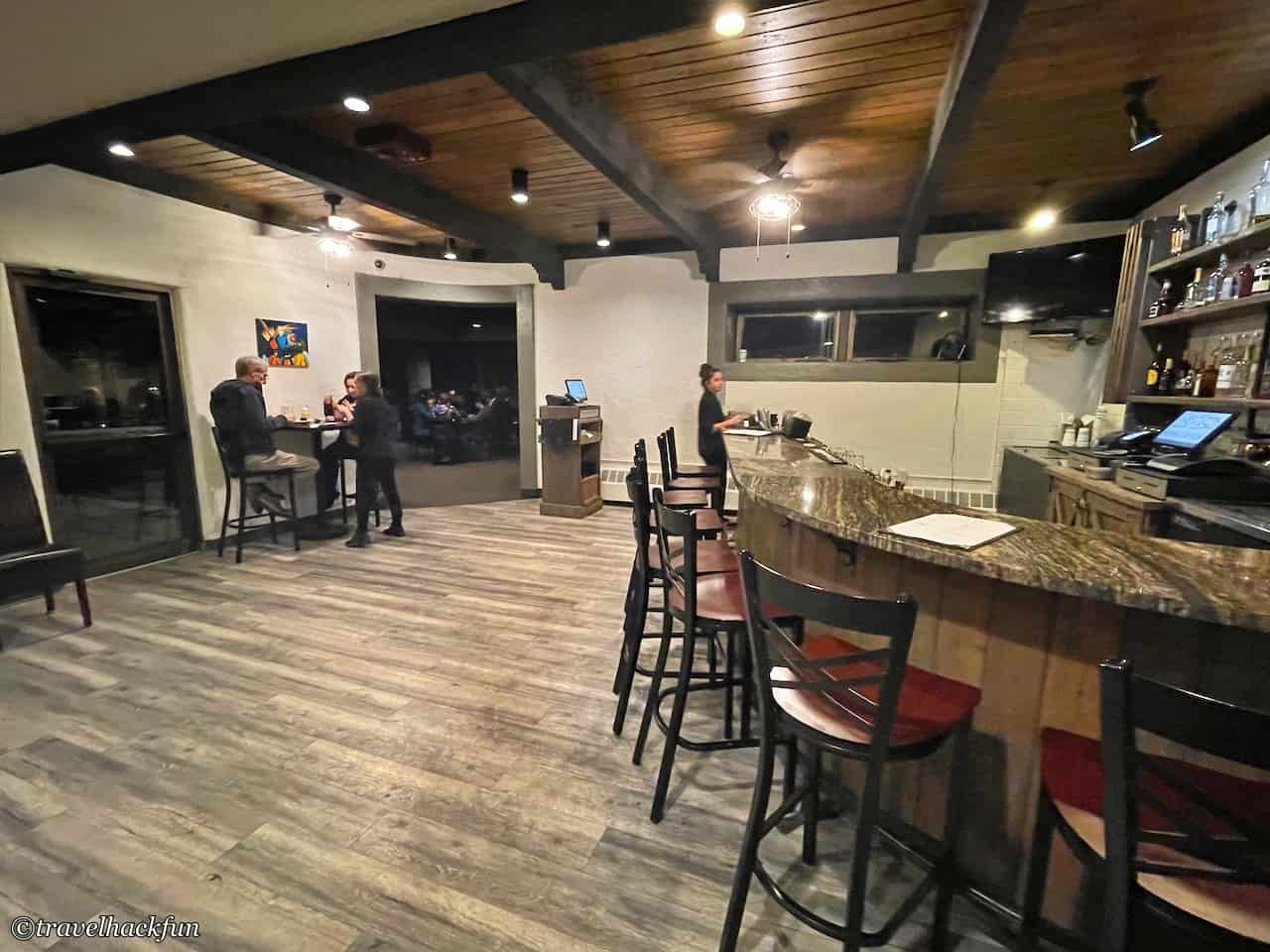
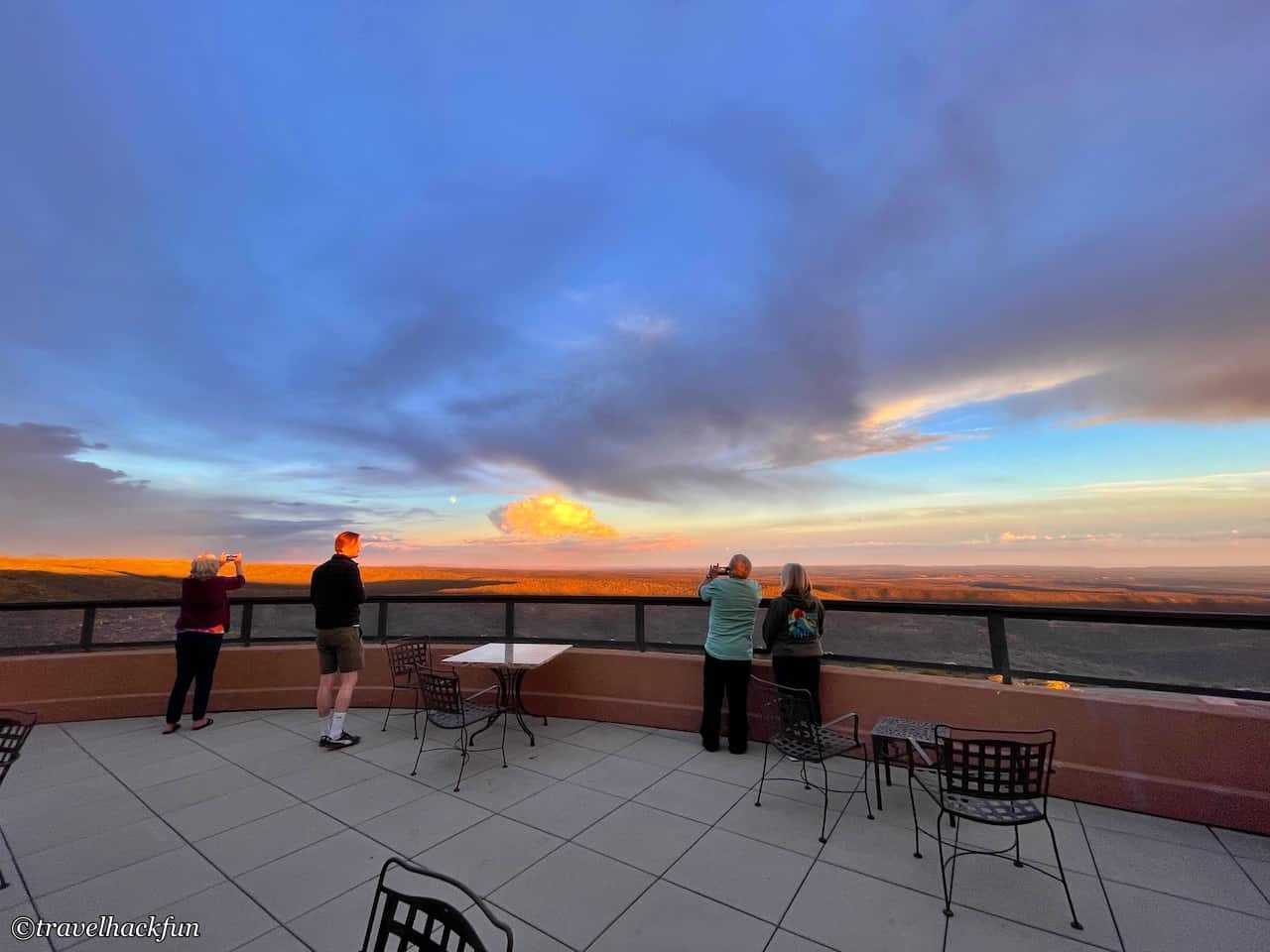
Restaurant: Metate Room
- Rating: ⭐️⭐️⭐️⭐️
- Price: $$$$
The Metate Room is a fine dining restaurant and reservations are recommended. The prices are higher, but the food turned out to be much more delicious than I expected. We opted for a flatbread appetizer and two main courses, one is fish fillet and the other is steak, both of which were tasty. We even indulged in some dessert later on.
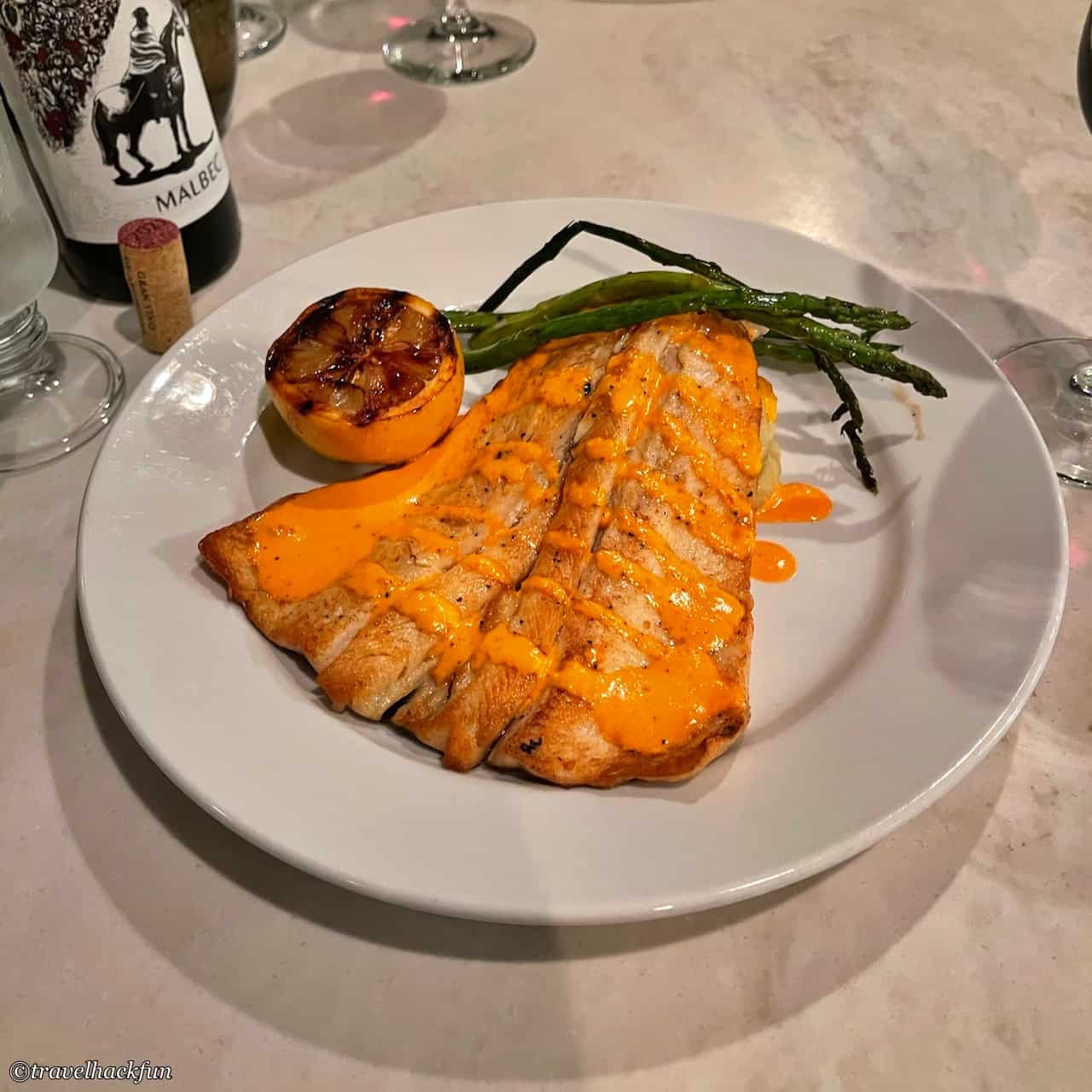
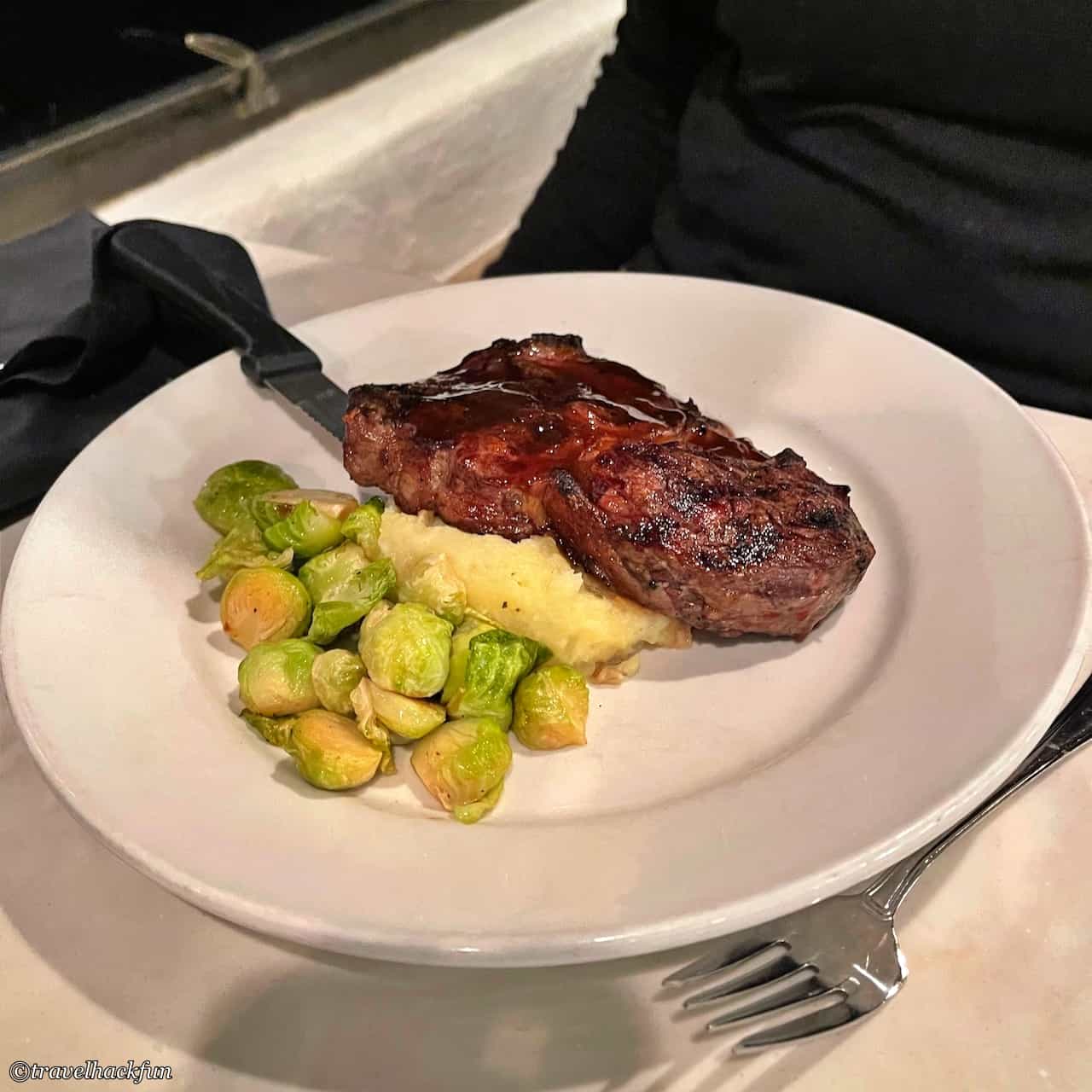
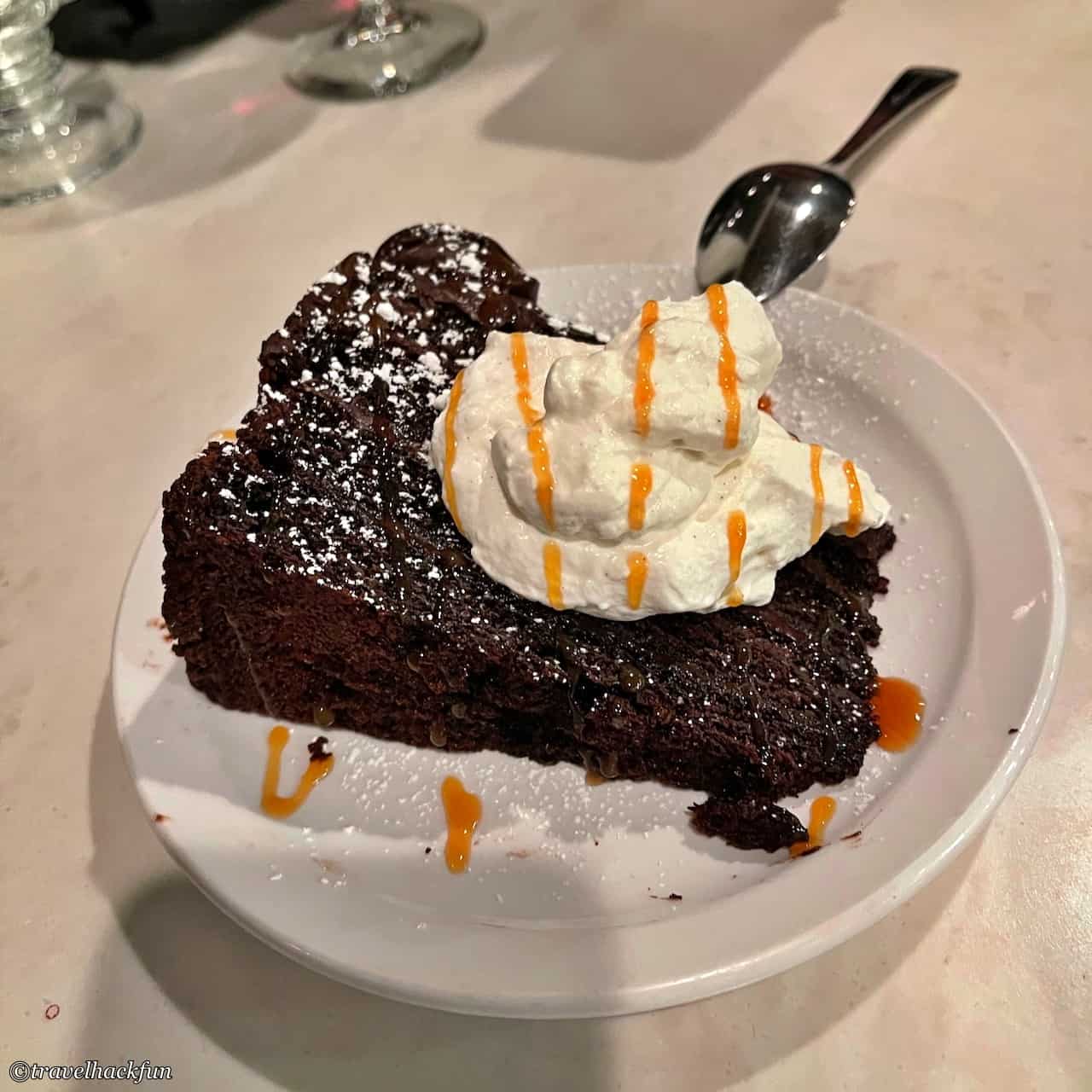
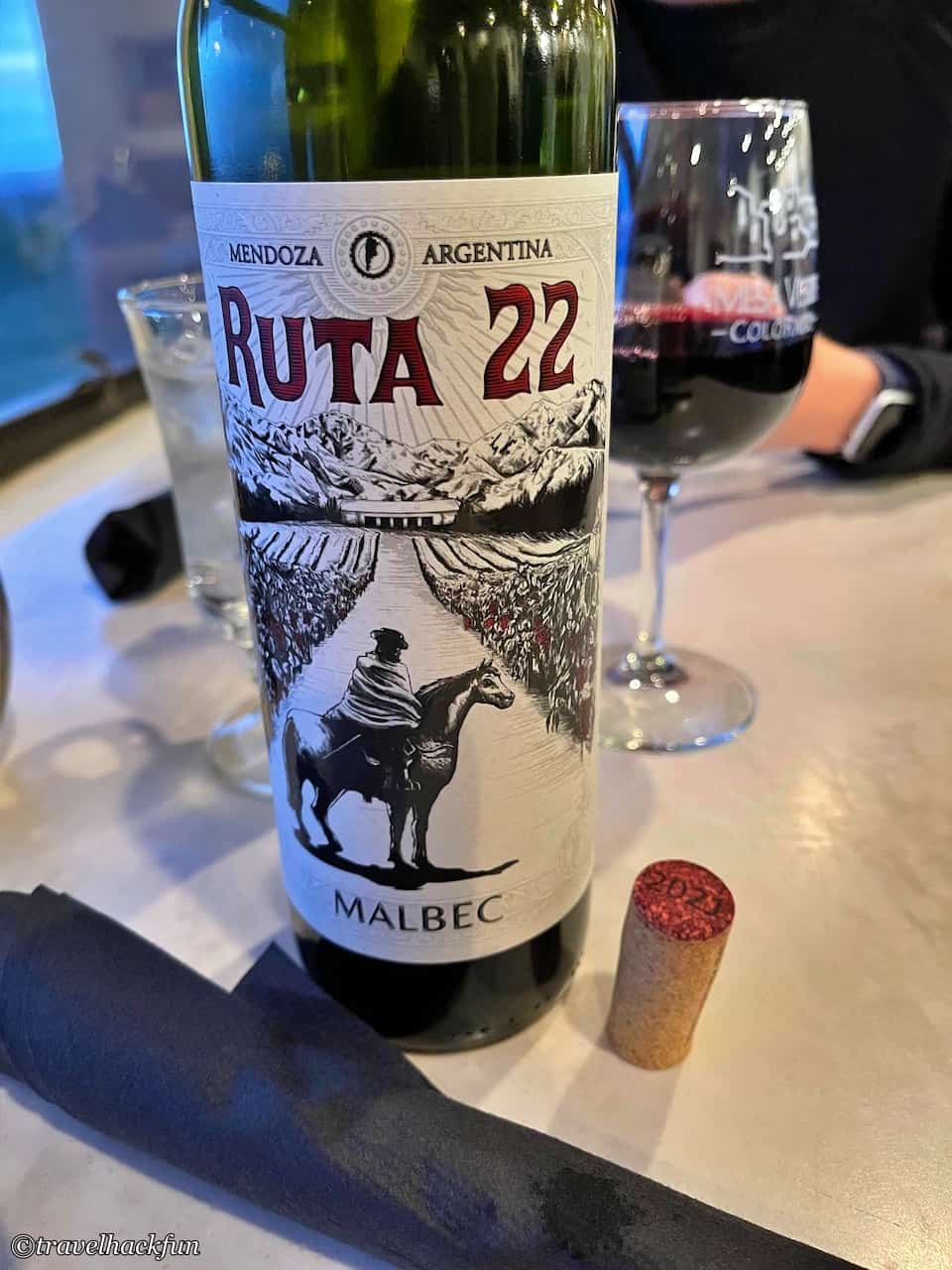
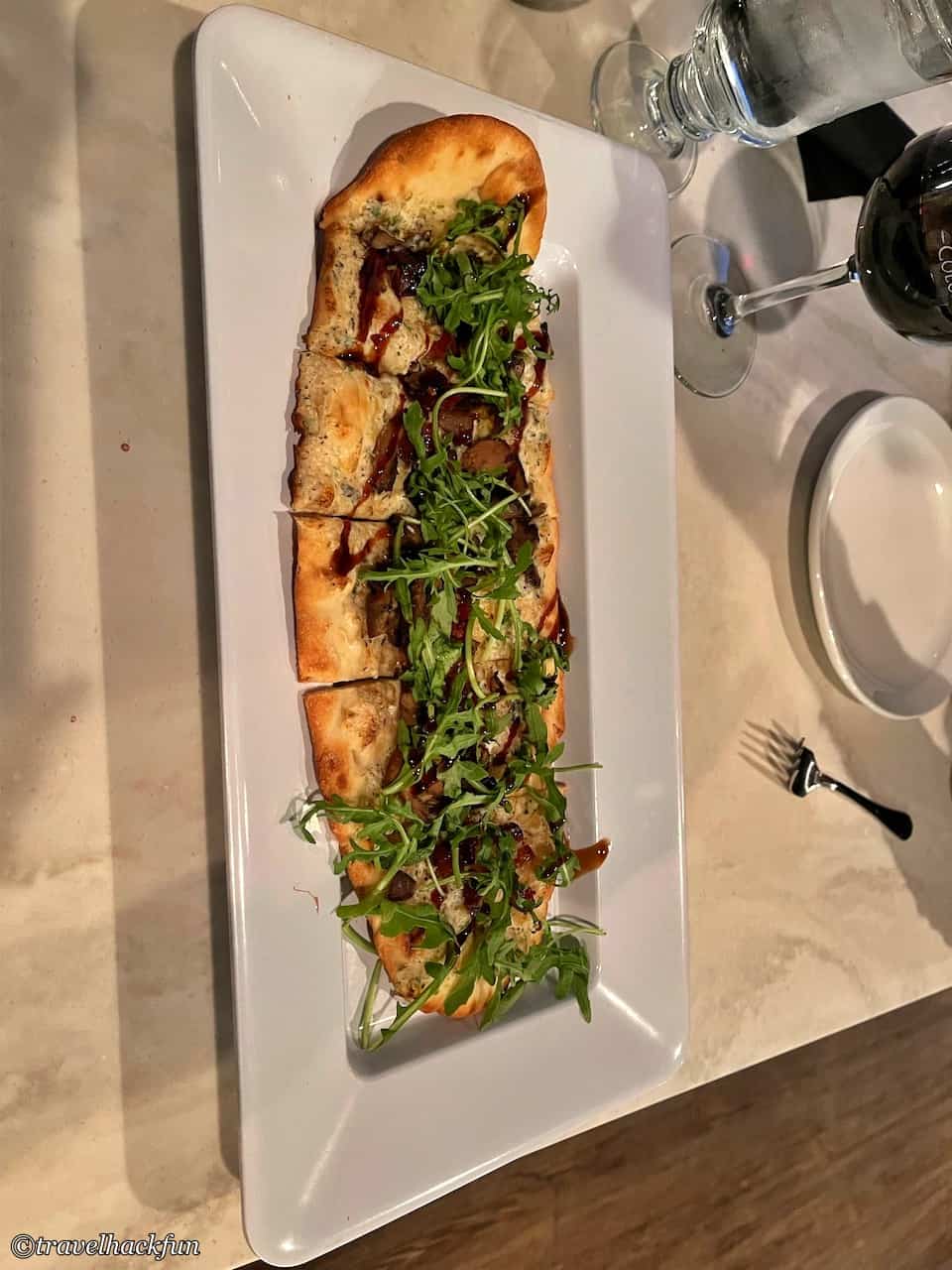
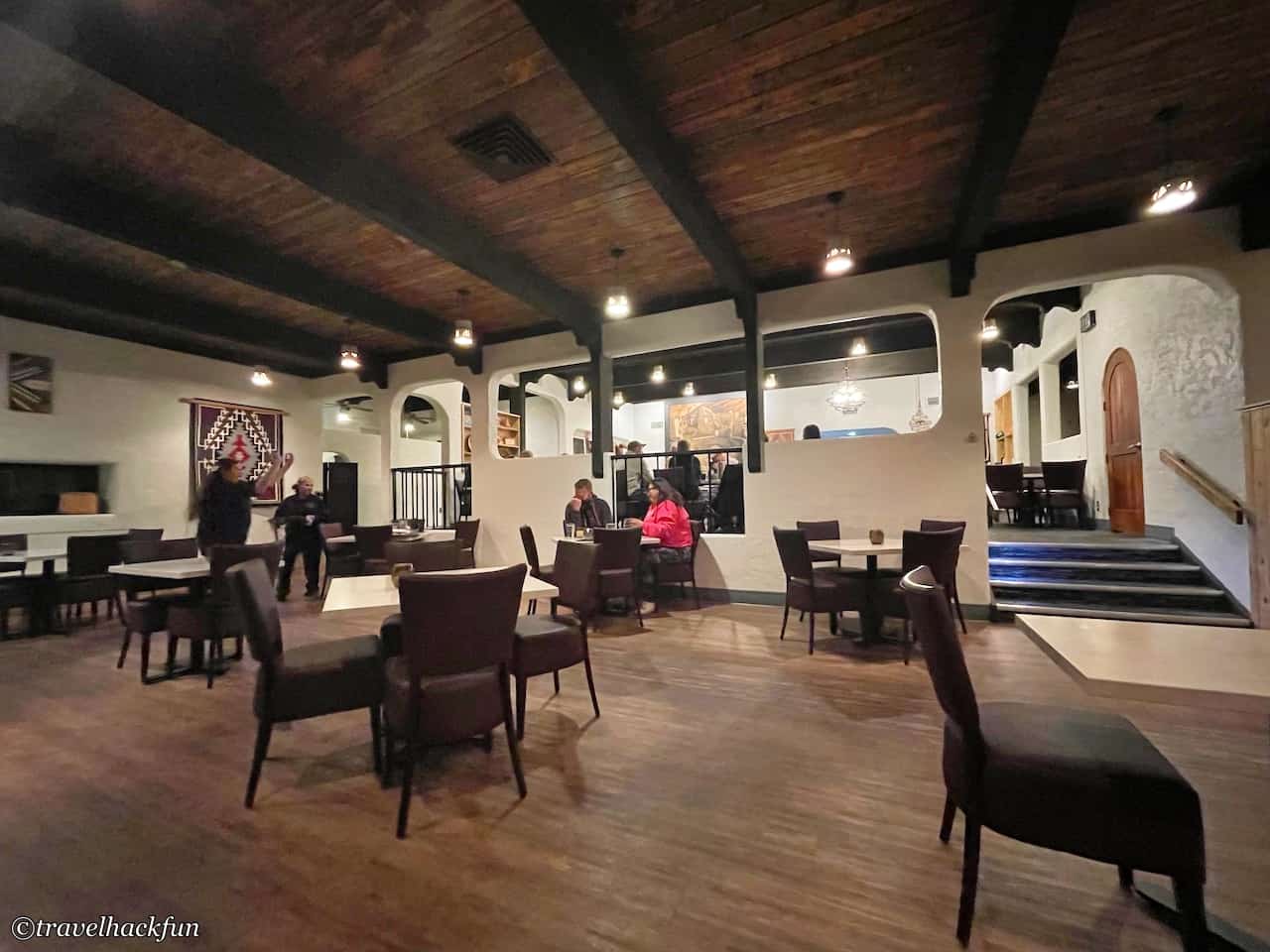
Further reading
- More Colorado posts
- More Grand Circle posts
Thank you for visiting our website.
All the content on this site is original and shared with the purpose of providing valuable information. We sustain the operation of this site through a small amount of advertising and sponsored links. If you click on links to third-party merchants on our site and make purchases, we may receive a portion of the sales as a commission. If you click on links to third-party merchants on our site and make purchases, we may receive a portion of the sales as a commission.
Find more posts on a map Here.
My recommended resources for hotel bookings.
Recommended travel credit card for US-based travelers
Travel with just a backpack!
Buy me a coffee and support my contents!
If you are interested in quoting this article or using any part of its content and images on your website or publication, please contact us via email to request permission.